Techrules plans to launch China’s first supercar – featuring its TREV technology – in the next two-to-three years.
Hypercar, Electric, News, Supercars, Technology
Hypercar, Electric, News, Supercars, Technology
Techrules plans to launch China’s first supercar – featuring its TREV technology – in the next two-to-three years.
Events, Motorsports, Supercars, News, F1
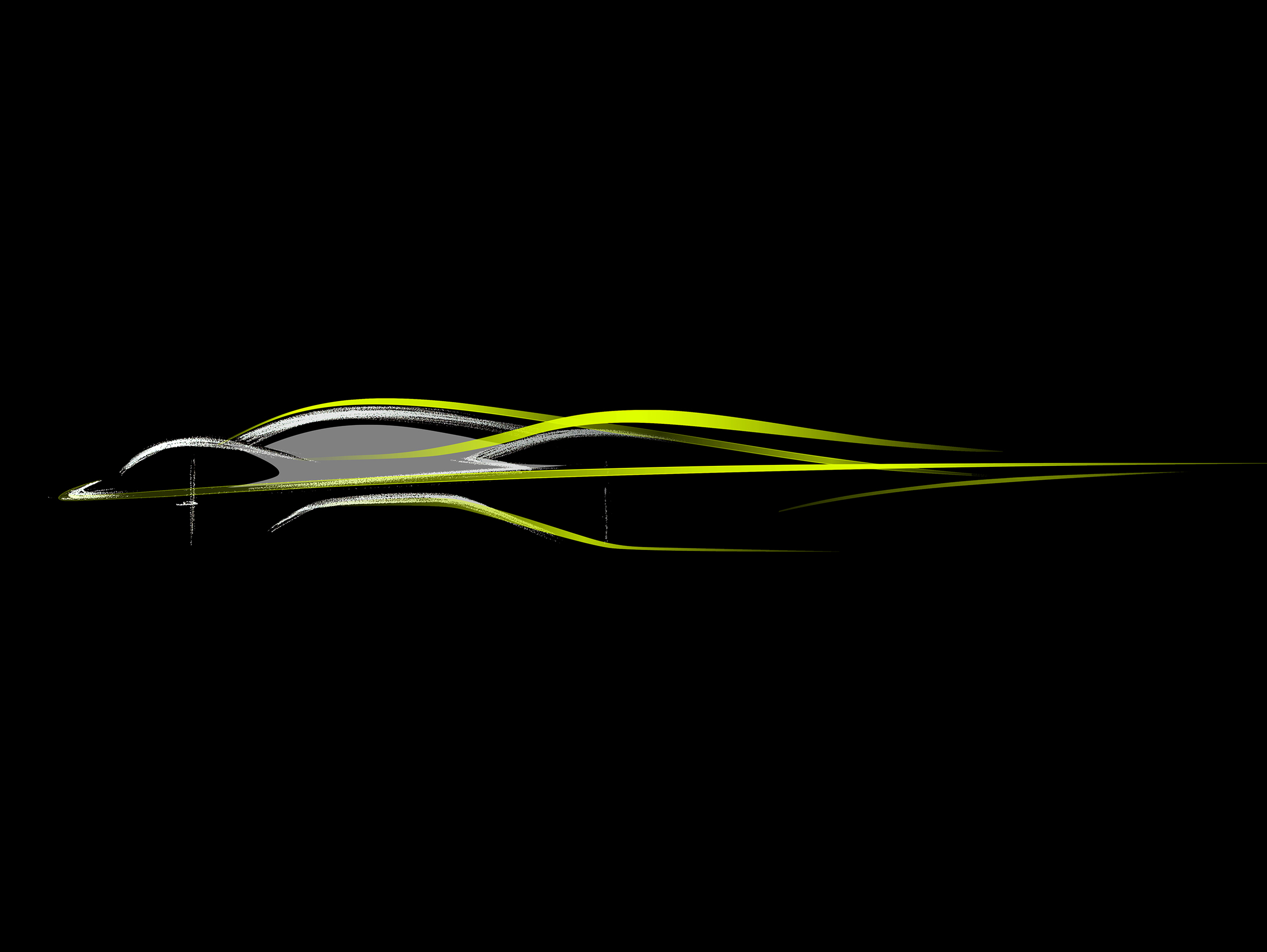
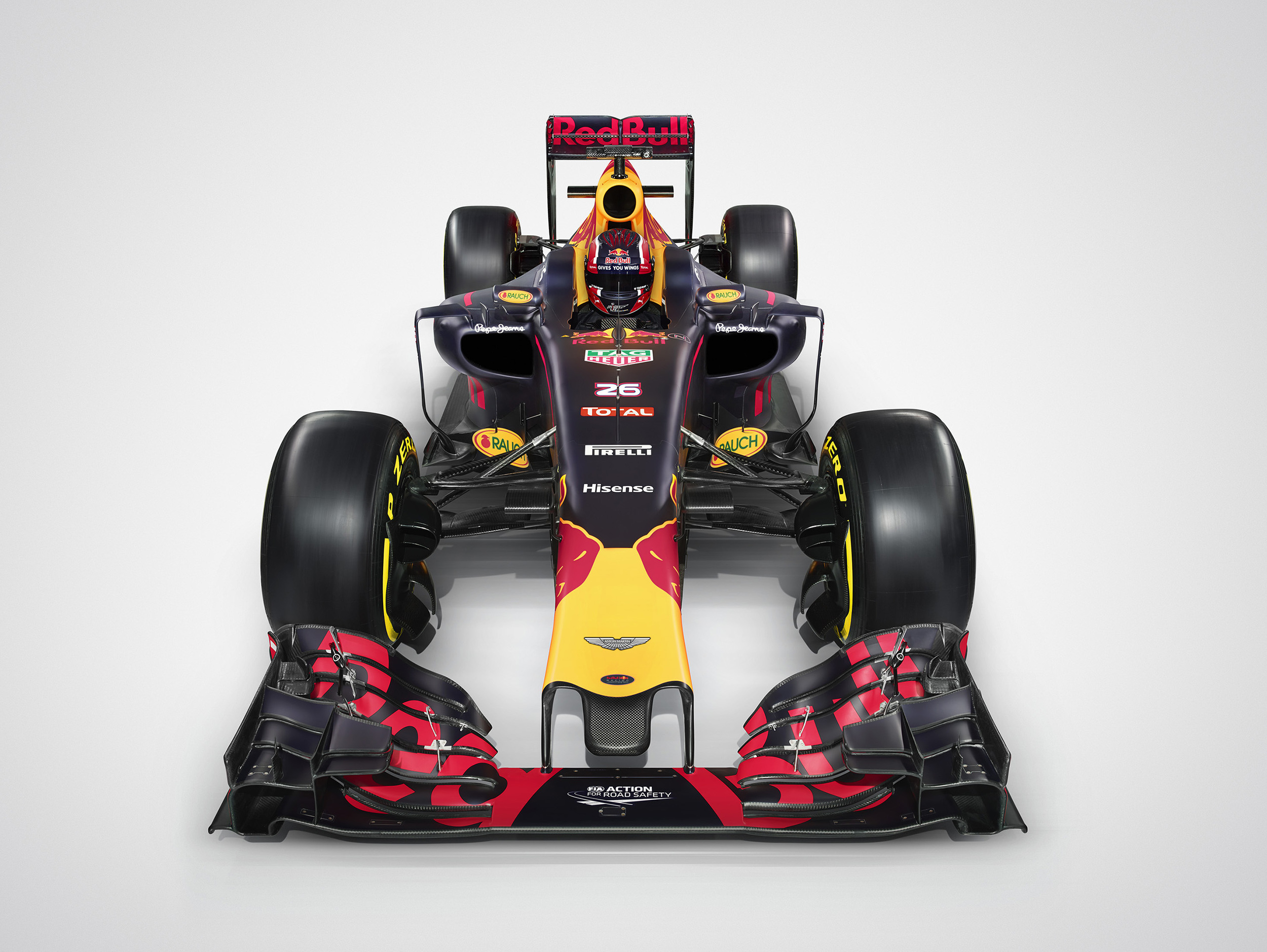
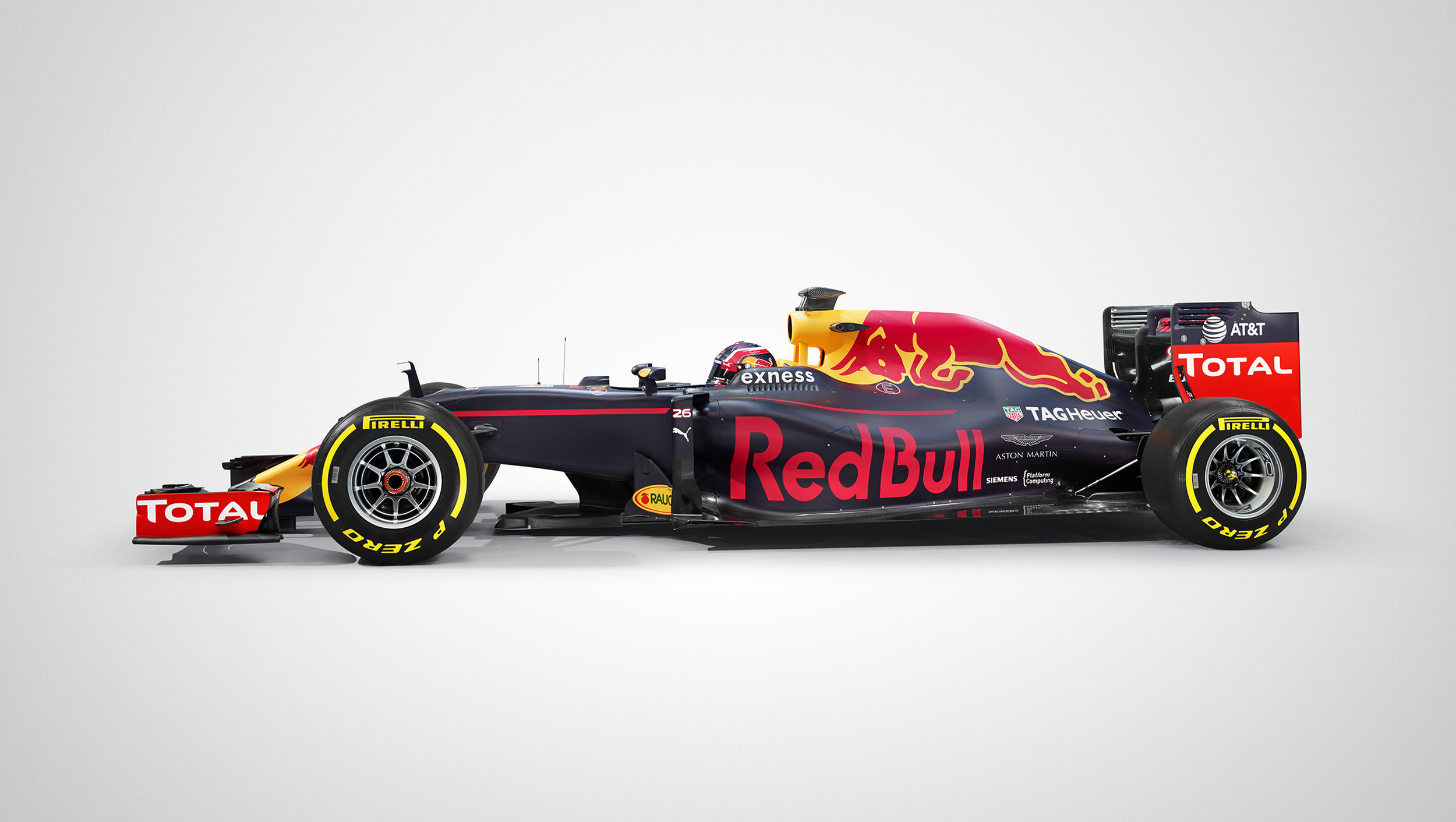
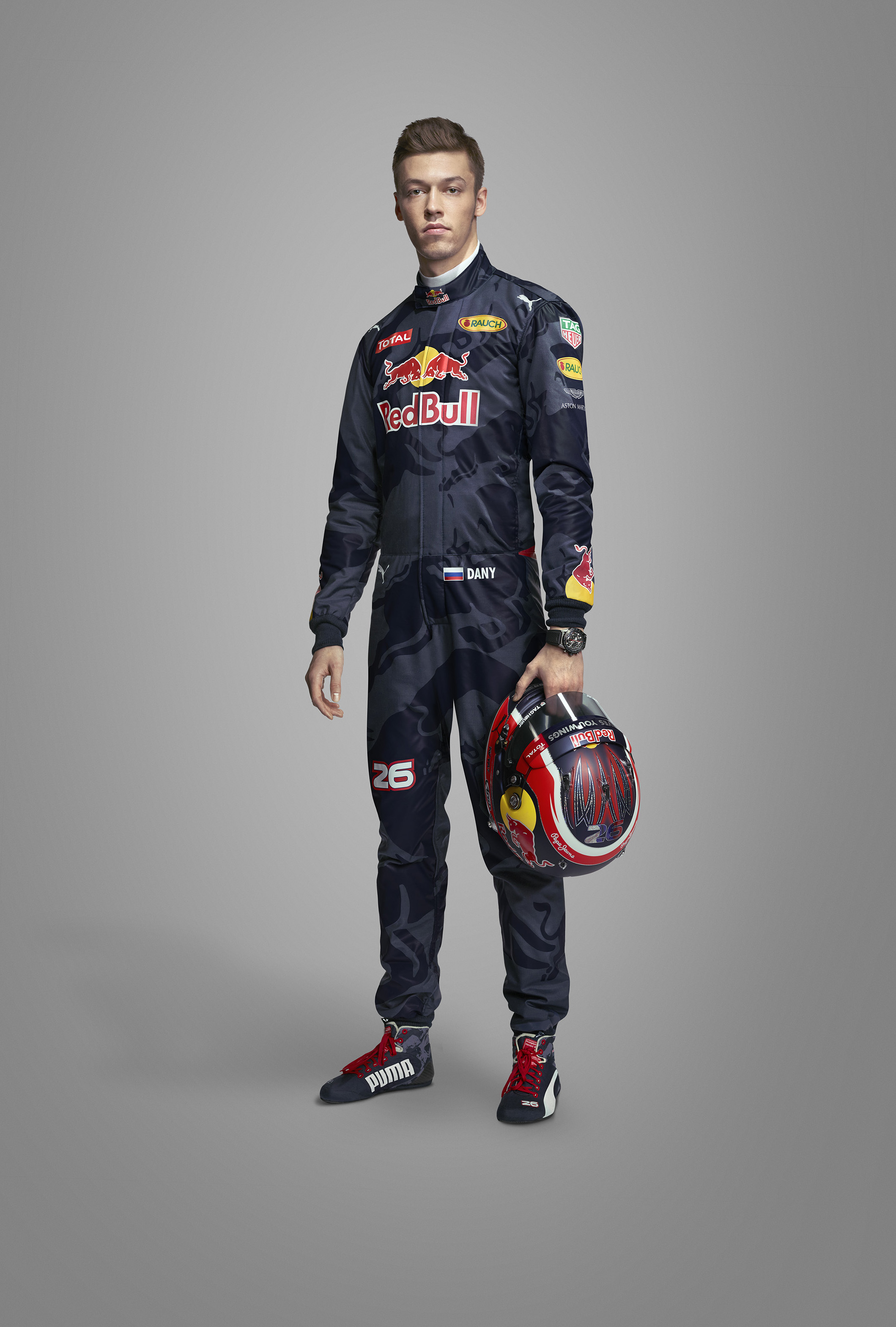
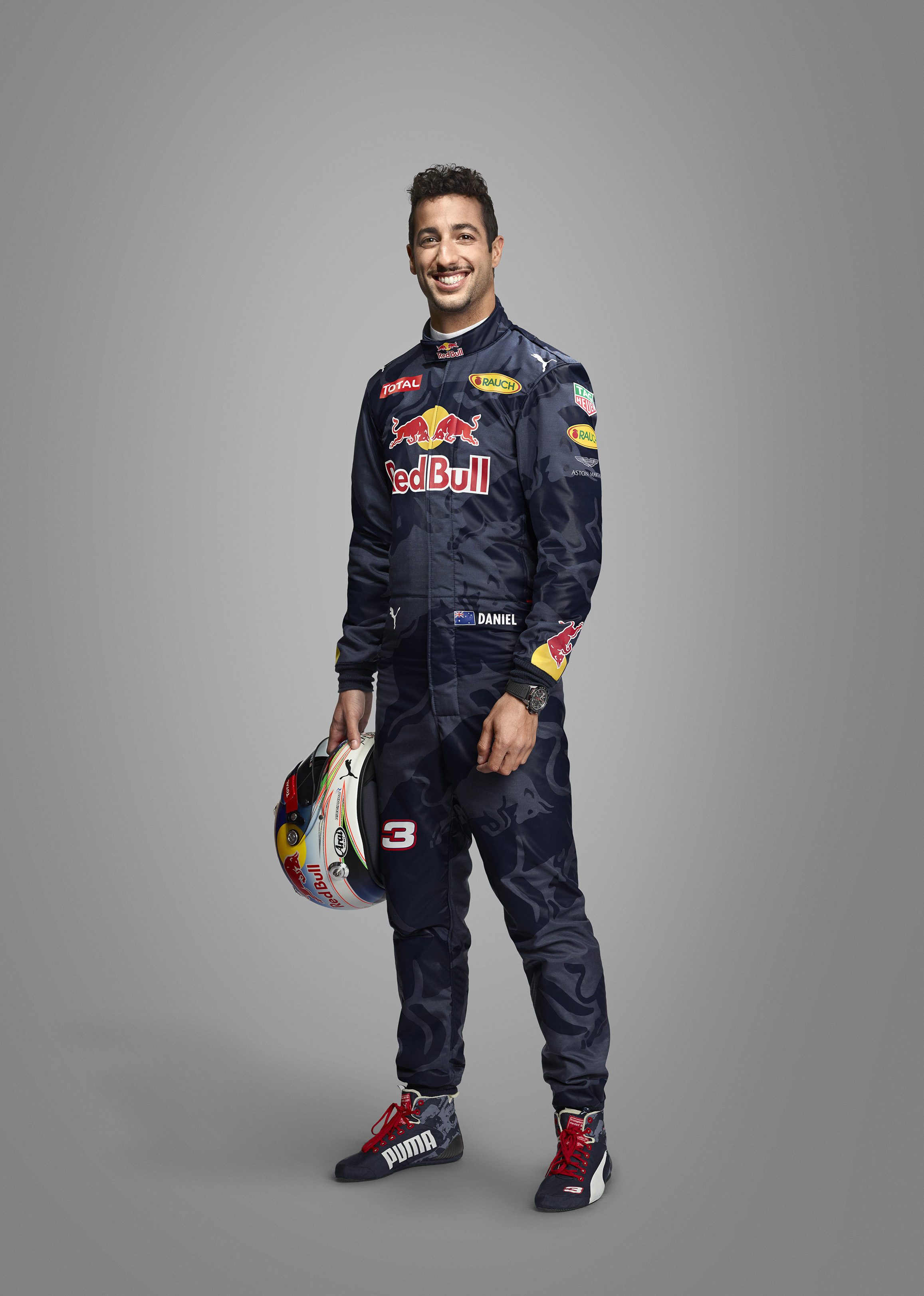
Codenamed Project ‘AM-RB 001’, Red Bull Racing’s Chief Technical Officer Adrian Newey is key to the agreement following years of speculation as to when the widely regarded most successful Formula One designer of all time may help design a road car.
The new hypercar is described as ‘ground-breaking’ and will represent the ‘ultimate blend of cutting edge F1 technology with Aston Martin’s sports car design’. The new partnership unites some of the world’s best ‘aerodynamicists, composite experts and manufacturing masters’.
Aston Martin CEO Dr Andy Palmer said: “Formula One offers the ultimate global stage to build wider awareness of the Aston Martin brand. However, this partnership will deliver even more than that when the hypercar that Aston Martin and Adrian Newey are in the process of developing hits the road. These are exciting times for Aston Martin and arriving hot on the heels of our DB11 launch earlier this month, this new partnership underlines that our brand really is racing again.”
Red Bull Racing Team Principal Christian Horner said of the new partnership: “This is a very exciting project for everyone at Red Bull Racing. Through this Innovation Partnership the iconic Aston Martin logo will return to Grand Prix racing for the first time since 1960, and Red Bull Advanced Technologies, led by Adrian, will be harnessing our Formula One DNA to produce the ultimate of all road cars. It’s an incredible project which also realises a dream and vision long held by Adrian to design a road car. We are very much looking forward to what I’m certain will be a successful partnership.”
Aston Martin’s Chief Creative Officer, Marek Reichman said: “We are in the process of developing a hypercar that combines the latest in aerodynamics from F1 and the stunning design language of an Aston Martin sports car. The opportunity to collaborate with Adrian and Red Bull Advanced Technologies will be a fascinating experience for everyone involved. Unconstrained by F1 regulations, we have a unique chance to create a car in its most efficient form that will represent the ultimate fusion of art and technology.”
Having an illustrious Formula One career spanning nearly 30 years, and as the designer of ten World Championship winning Formula One cars, the partnership represents a new challenge for Red Bull Racing’s Adrian Newey.
“From the age of six I have had two goals in life – to be involved in the design of racing cars, and to be involved in the design of a super car.” Newey commented. “Whilst the former ambition went on to form my career to date, the latter has always bubbled away, resulting in countless sketches and doodles over the years. The opportunity to now develop and realise those ideas whilst working with Marek and his colleagues from Aston Martin is tremendously exciting. It allows us to translate the technology we have developed in F1 into a new arena.”
To celebrate the partnership, the RB12s F1 race cars will carry the Aston Martin wings logo throughout the 2016 season, making their debut at this weekend’s Australian Grand Prix at Albert Park in Melbourne.
Sports Car, Motorshow, Events, News, Supercars

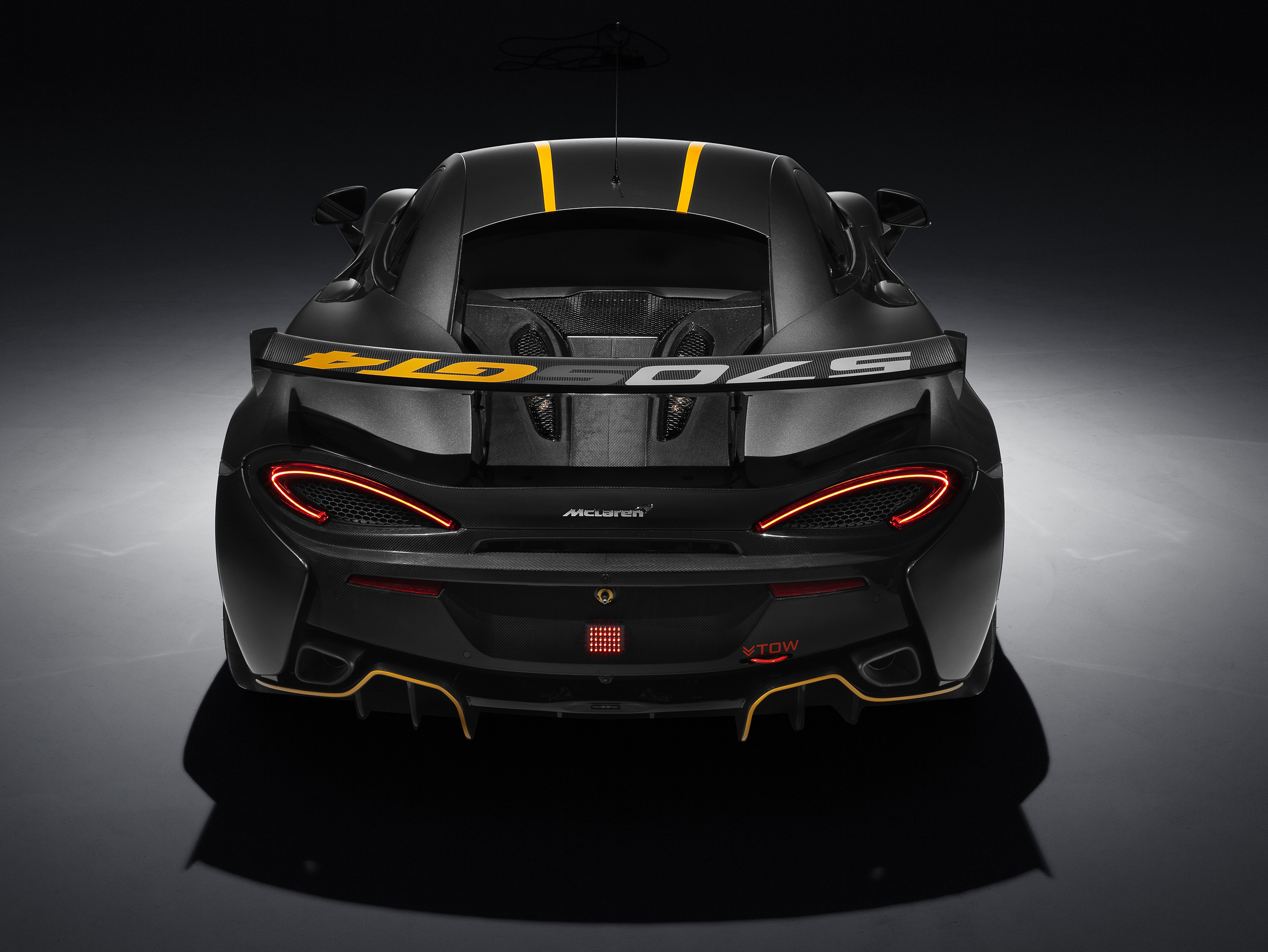

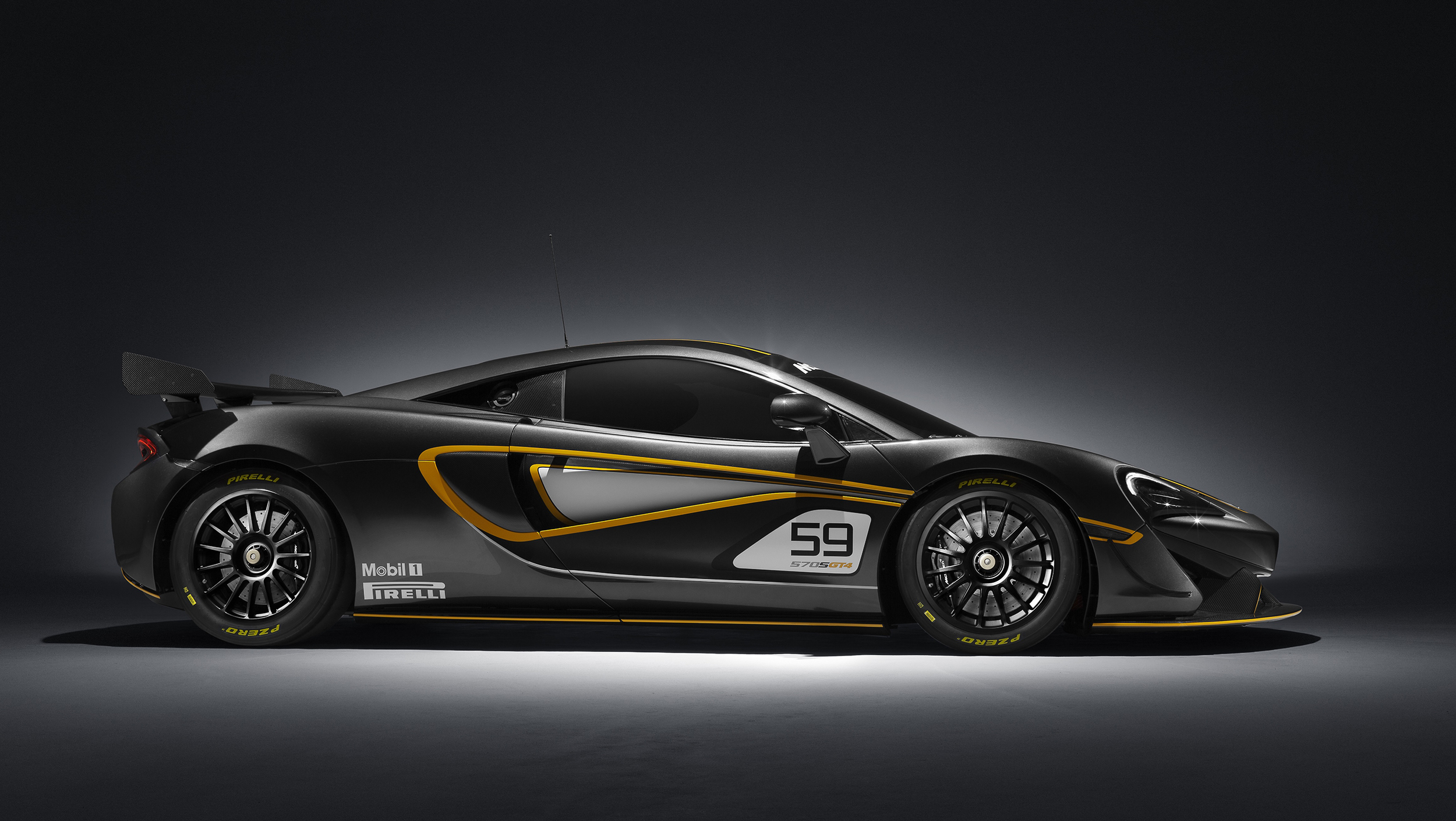
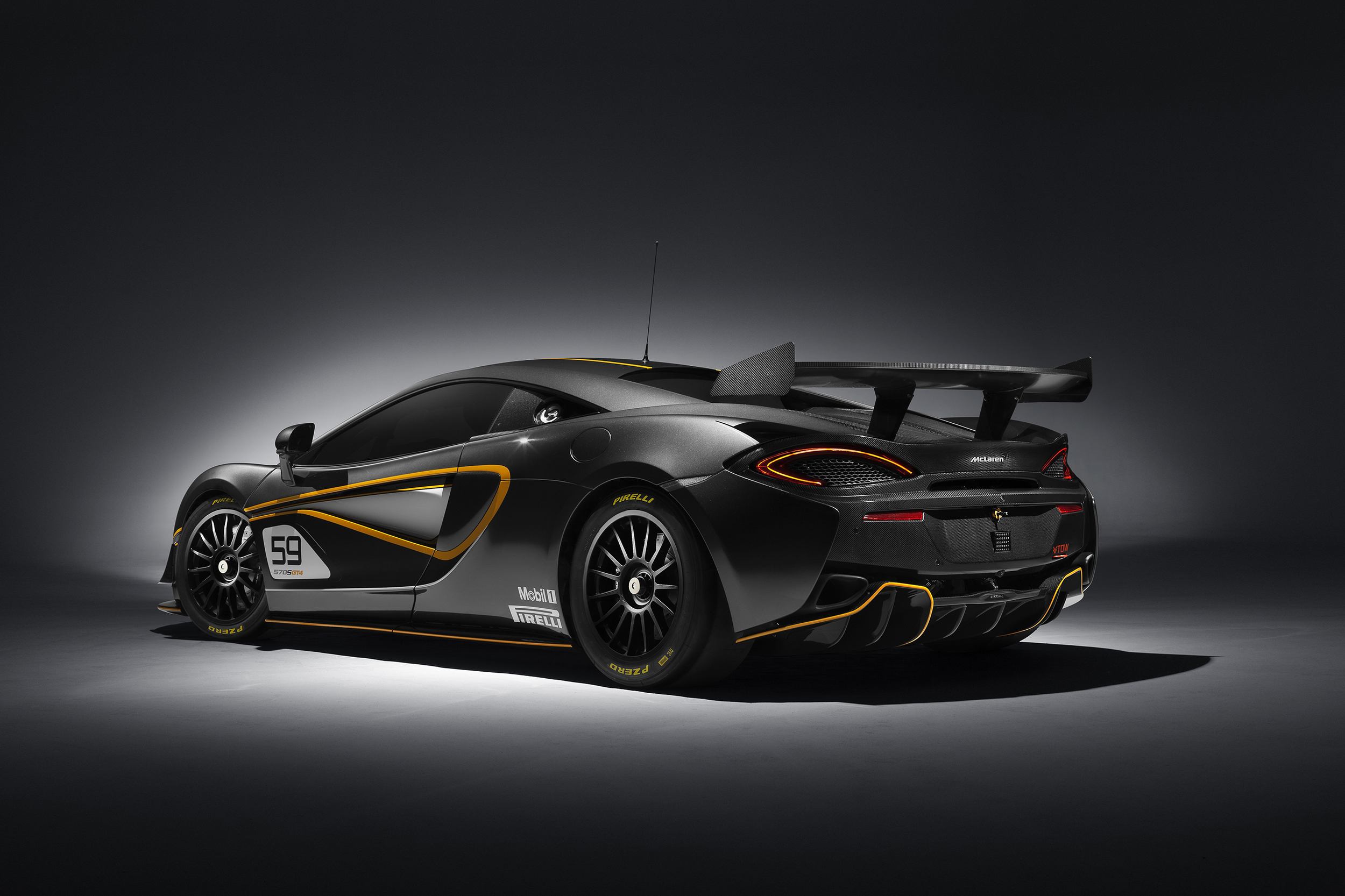
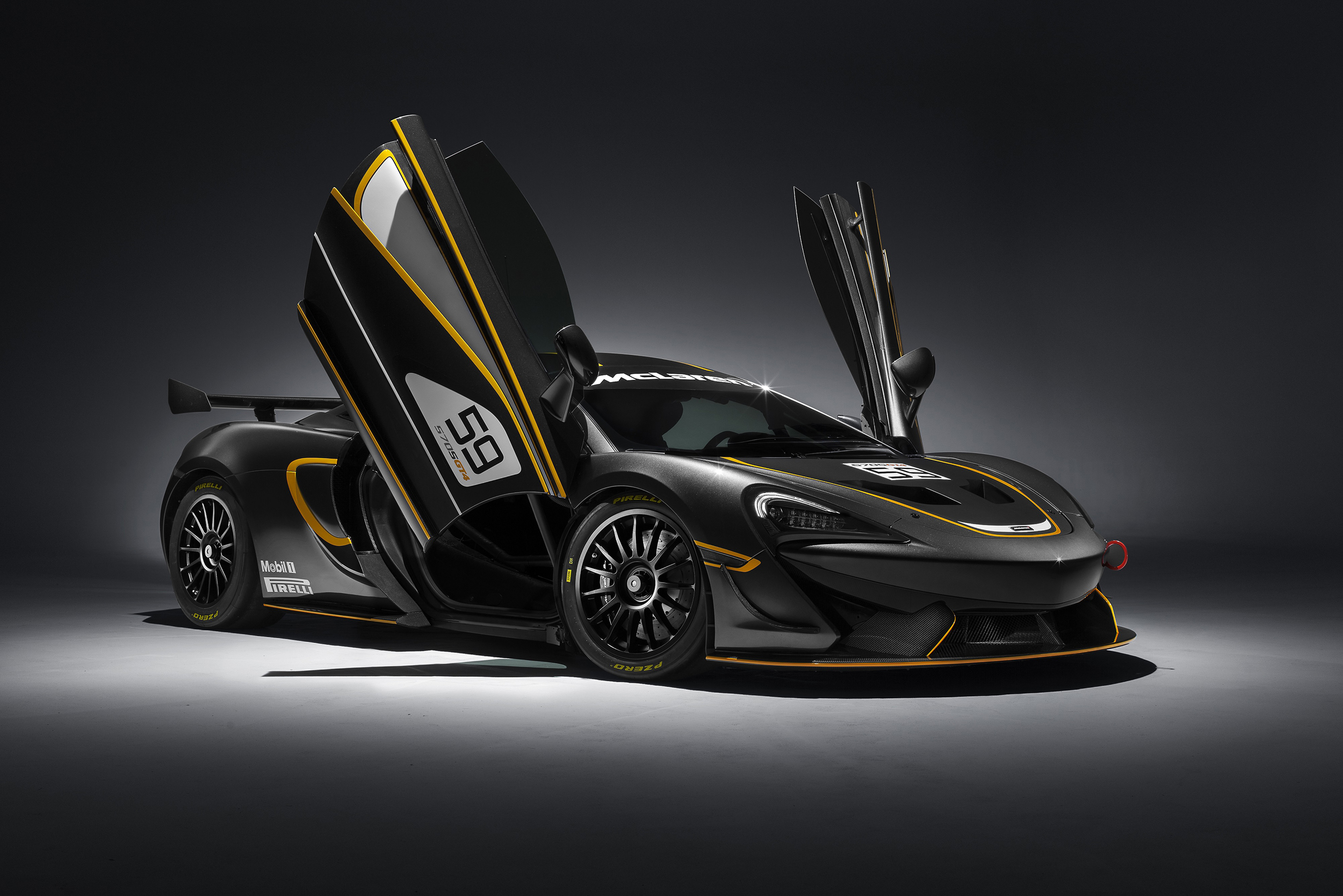
McLaren has announced two new track-dedicated models will join the Sports Series range - the 570S GT4 and the 570S Sprint.
Developed in conjunction with McLaren GT motorsport division, the 570S GT4 will now enter a season-long development programme in the British GT championship with customer team, Black Bull Ecurie Ecosse.
Mike Flewitt, Chief Executive Officer, McLaren Automotive explained: ‘As with road-going models wearing a McLaren badge, the 570S GT4 and 570S Sprint models are about being an engaging and exciting drive. The launch of the Sports Series has broadened McLaren to a new audience, introducing technologies to the sports car market and to a new group of customers. The 570S GT4 is doing the same in the motorsport world, and will bring the opportunity to own and race a McLaren – previously limited to a very small number of people – to a much wider group.’
The track-only 570S GT4 shares the carbon fibre MonoCell II chassis architecture with the other models in the Sports Series. The bodywork is formed over wider track both front and rear to accommodate centre-locking cast magnesium alloy wheels shod with slick Pirelli racing tyres. Two-way adjustable motorsport dampers with coil-over springs are fitted front and rear, and an on-board air jacking system is fitted as standard.
With a 'pure focus on laptimes', the 570S GT4 features a unique aerodynamic package which includes a GT4-specification high level rear wing, mounted on aluminium pylons, a larger front splitter and reprofiled floor assembly. An additional front centre high temperature radiator sits below a GT3-inspired bonnet with radiator exit ducts. These upgrades have been designed to optimise the aerodynamic performance and cooling of the 570S GT4 to ensure it is able to perform in the ‘harshest race conditions’.
The McLaren designed and developed 3.8-litre twin turbo V8 M838TE engine is carried over from the road-going Sports Series model. The seven-speed shift gearbox is also familiar to the other models in the range, transferring power to the track via the rear wheels.
Black Bull Ecurie Ecosse will run one example of the 570S GT4 alongside the confirmed entry of the 650S GT3 with Factory Driver Rob Bell alongside Alaisdair McCaig. Driver details for the season will be announced shortly.
The 570S GT4 will make its public development debut at the opening round of the British GT Championship at Brands Hatch, UK over the weekend 16-17 April. It will be eligible for all GT4 homologated championships globally from the 2017 season, and is priced from £159,900 (ex works).
Further details for the 570S Sprint, including pricing, will be confirmed in the coming weeks.


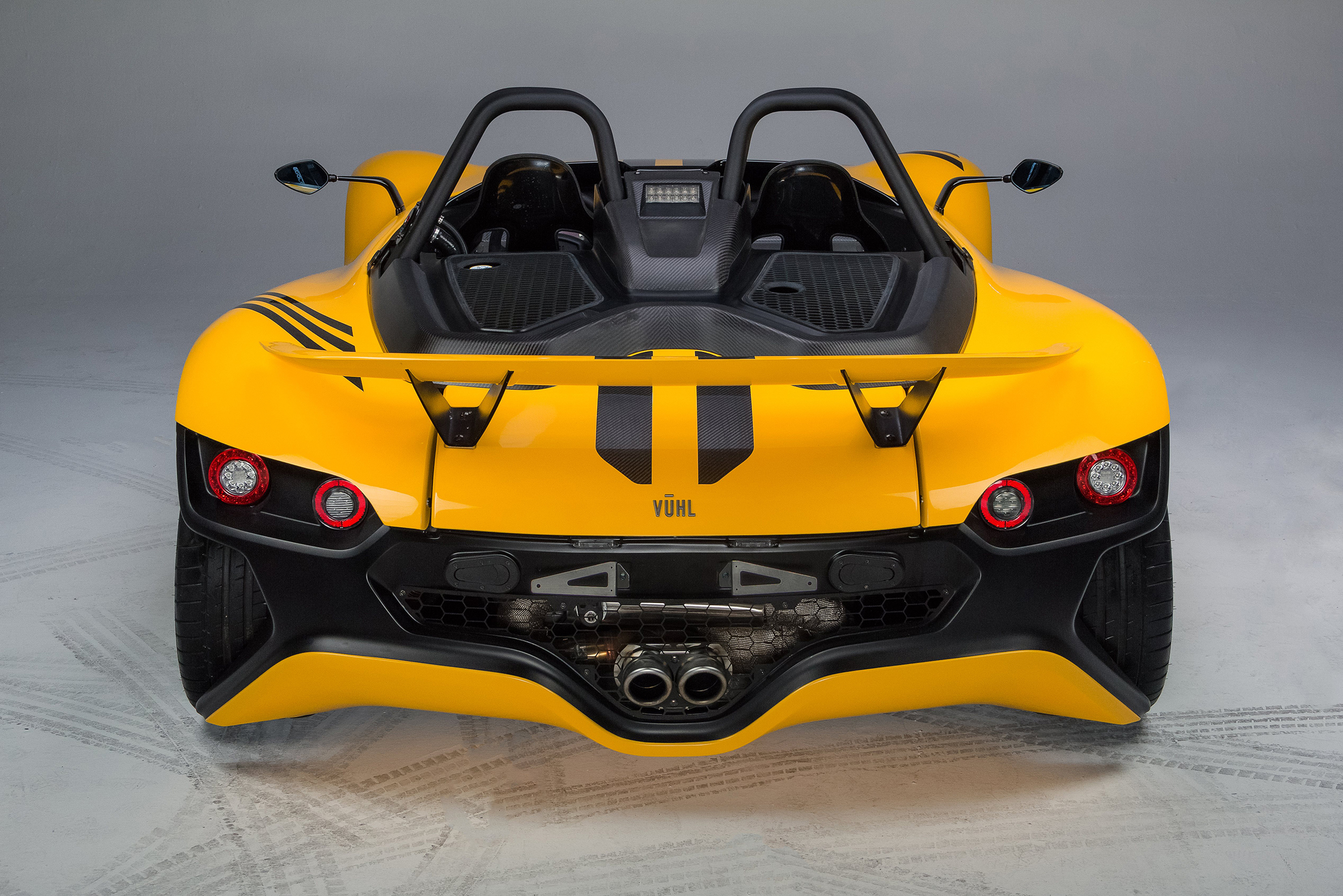
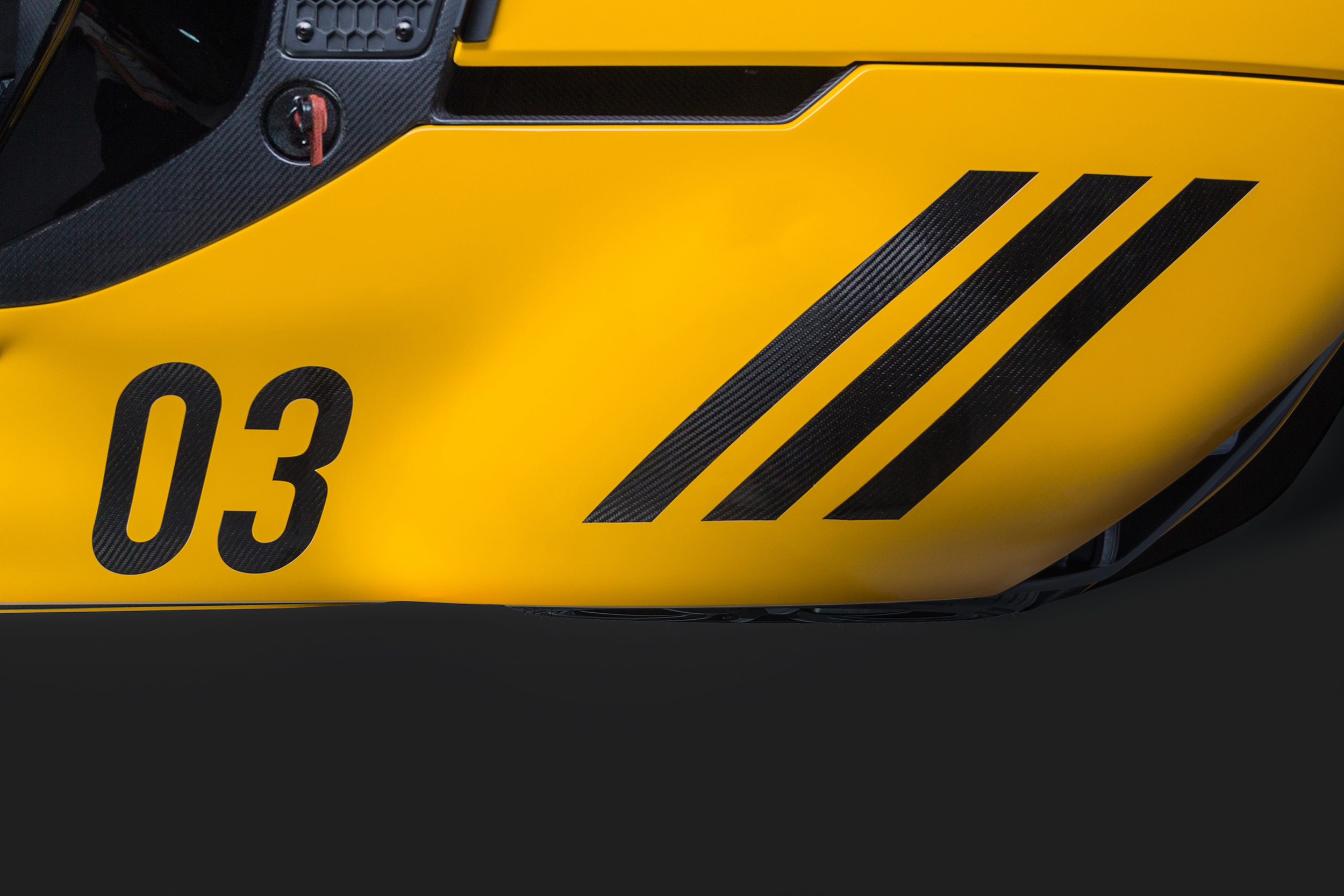
The VUHL 05 lightweight supercar will be presented at the new London Motor Show.
With pricing confirmed to start at £59,995 OTR and a new official UK dealer - Bespoke Performance - in place, VUHL has also confirmed an uprated version of the 05 will participate in the new ‘Race Cars For The Road’ class at the Goodwood Festival of Speed (June 23-26),
The London Motor Show in Battersea Park this May will be VUHL’s first visit to the capital. Following that it will be on displayed in the supercar paddock throughout Goodwood, other than the two times a day when it will take to the hill in the hands of a yet-to-be-announced top racing driver.
The VUHL 05 is designed for use on both road and track. It has a power-to-weight ratio of 410bhp/ton and ‘uncompromising build quality and rigorous attention to detail’ sets it apart from its competitors says VUHL.
The London Motor Show runs from May 5-8.
Concept Car, Sports Car, Supercars, Hybrid, News
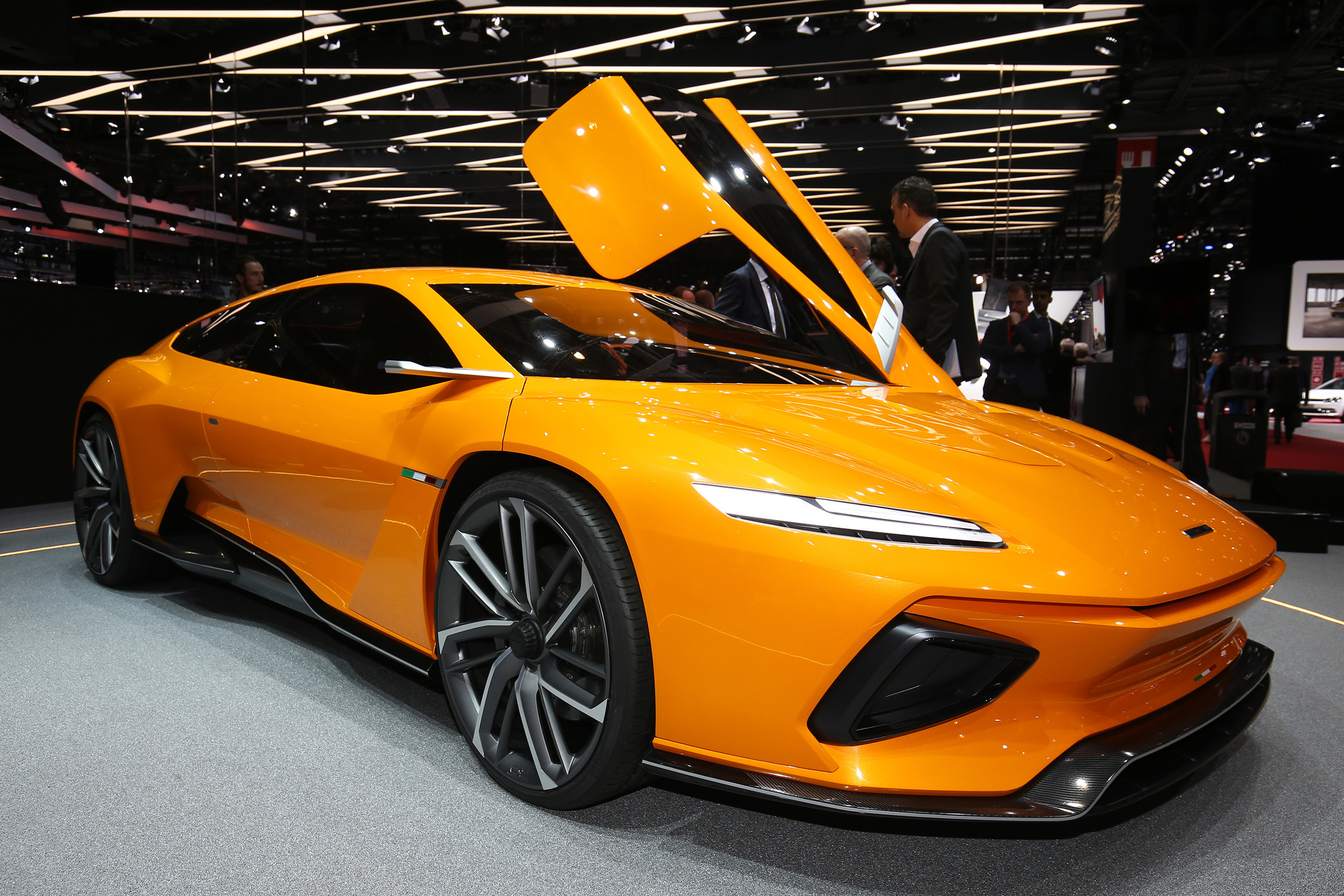
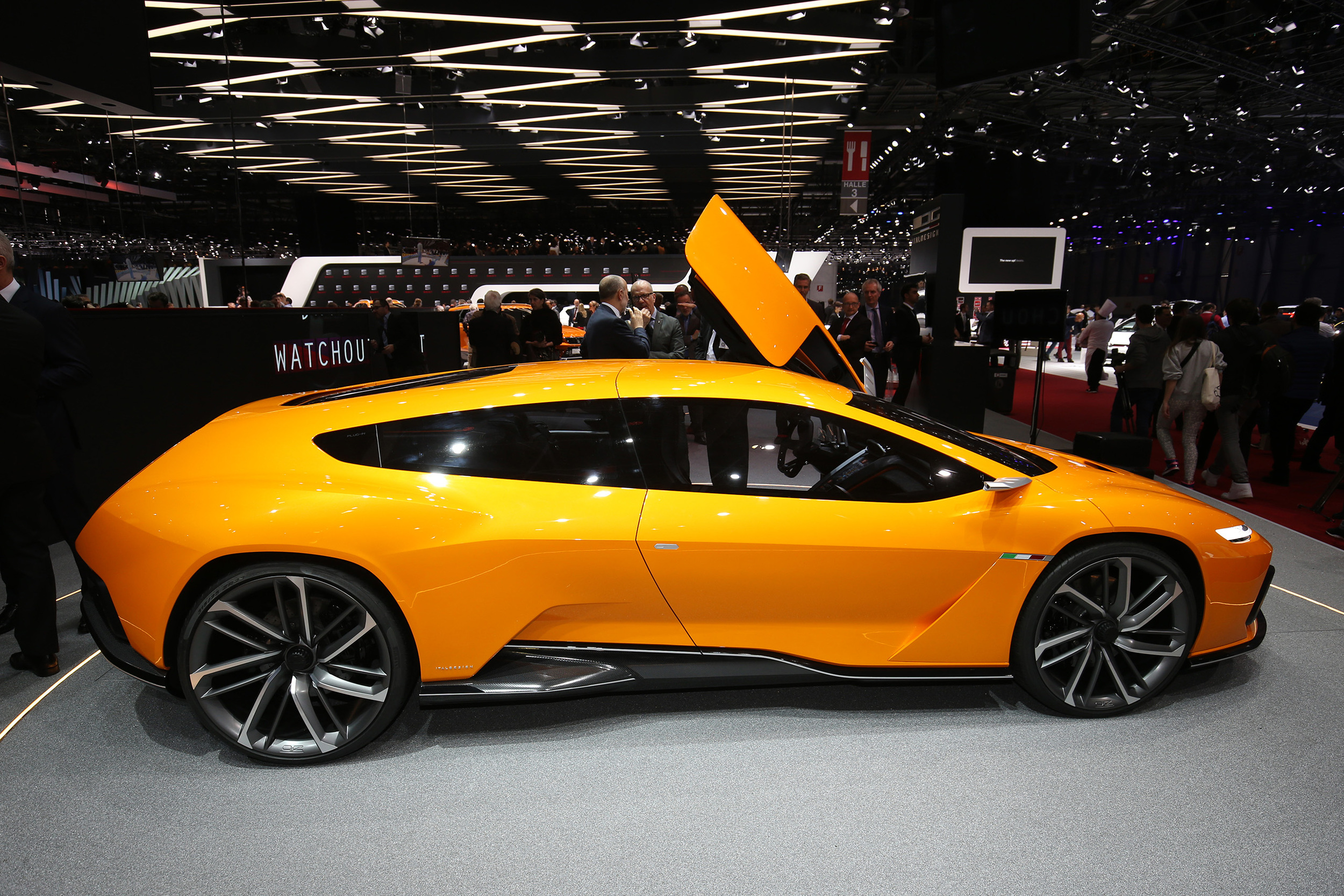
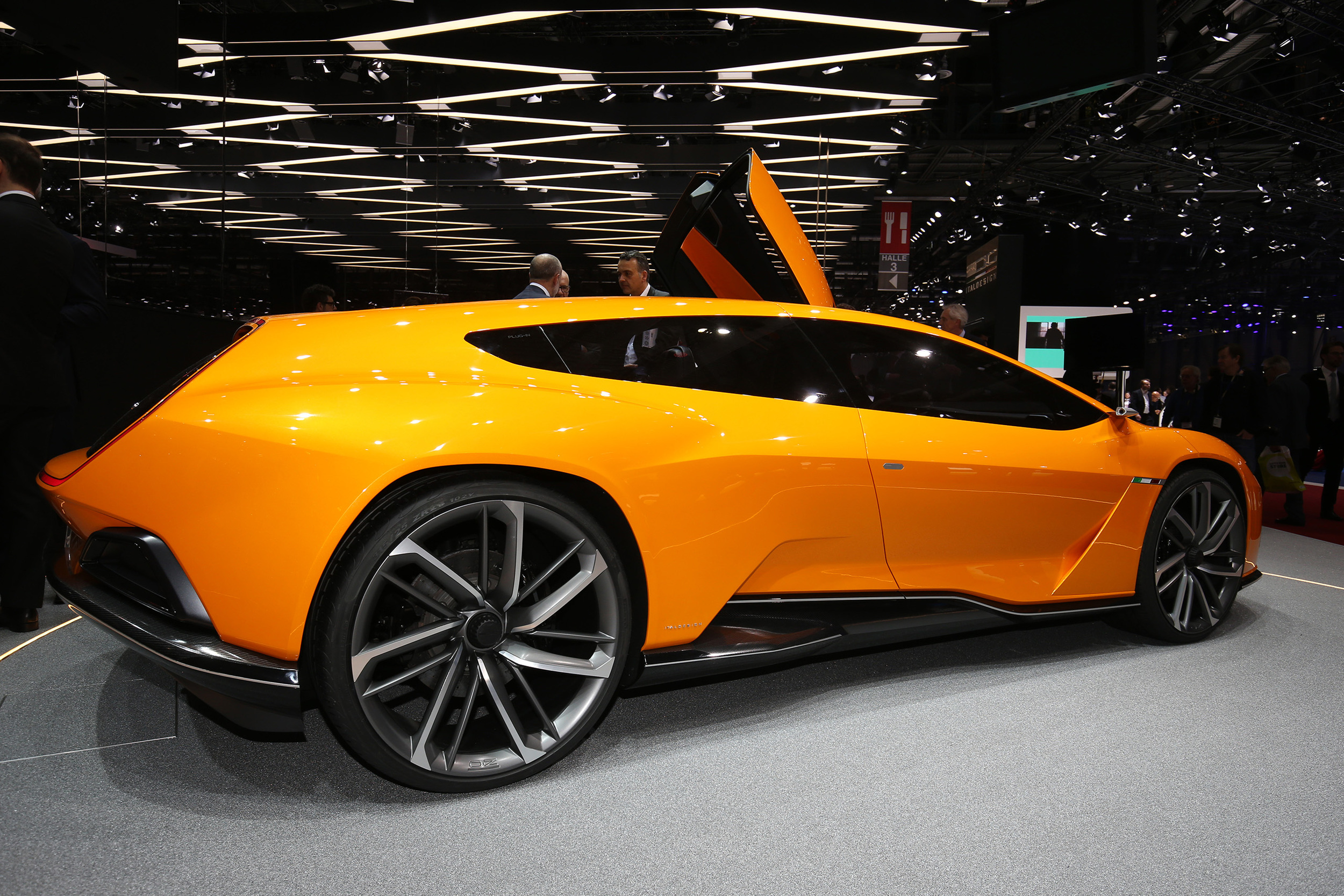
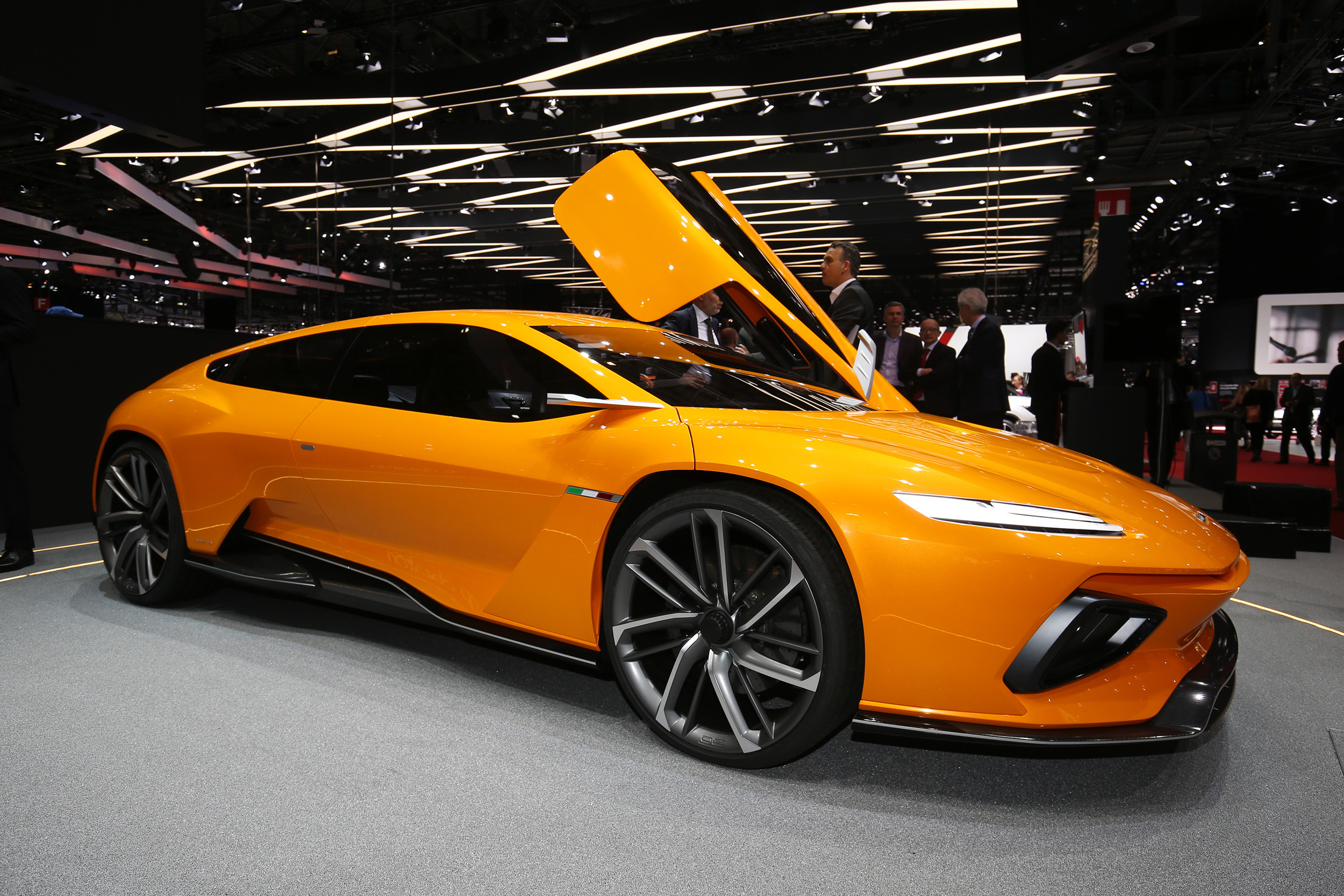
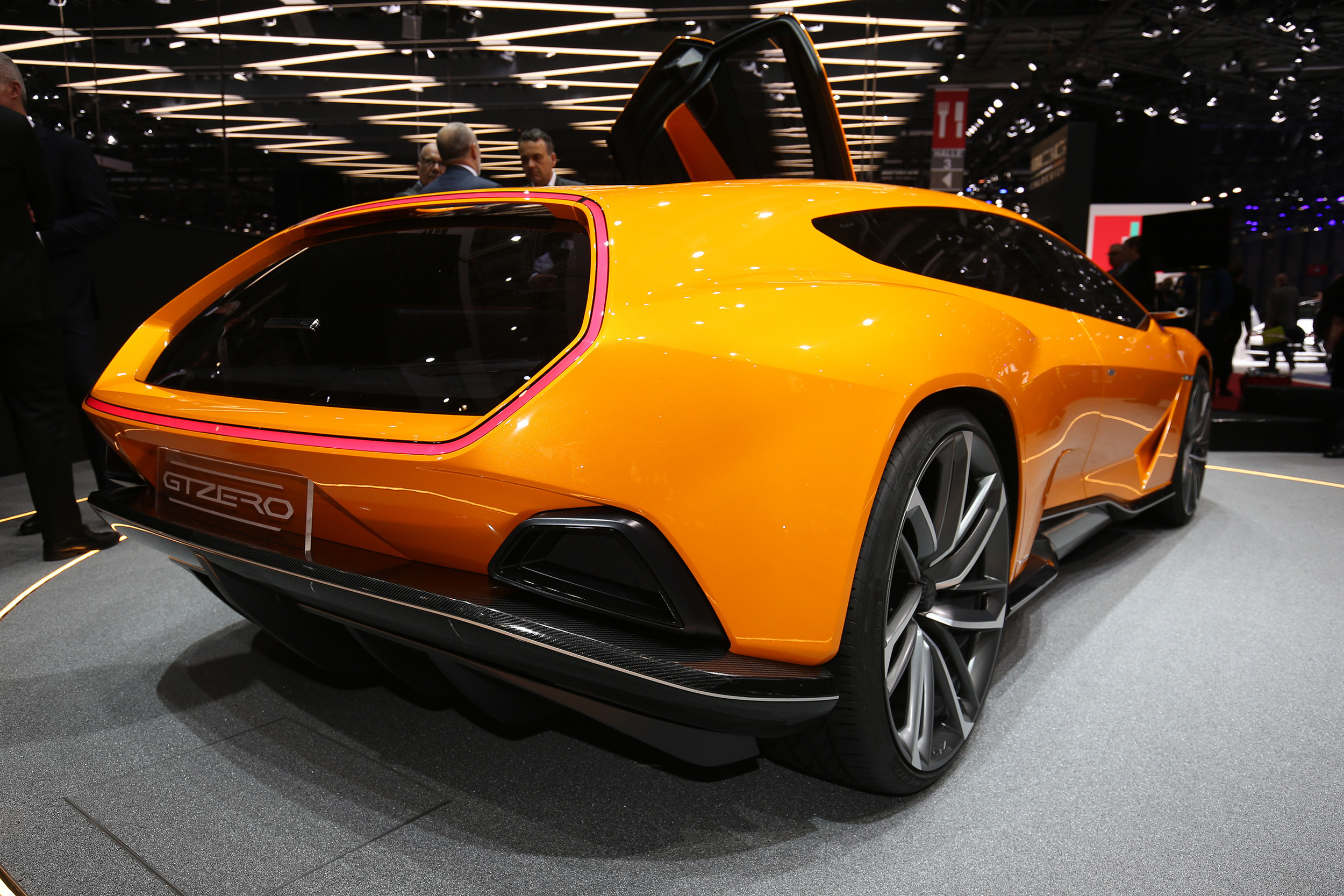
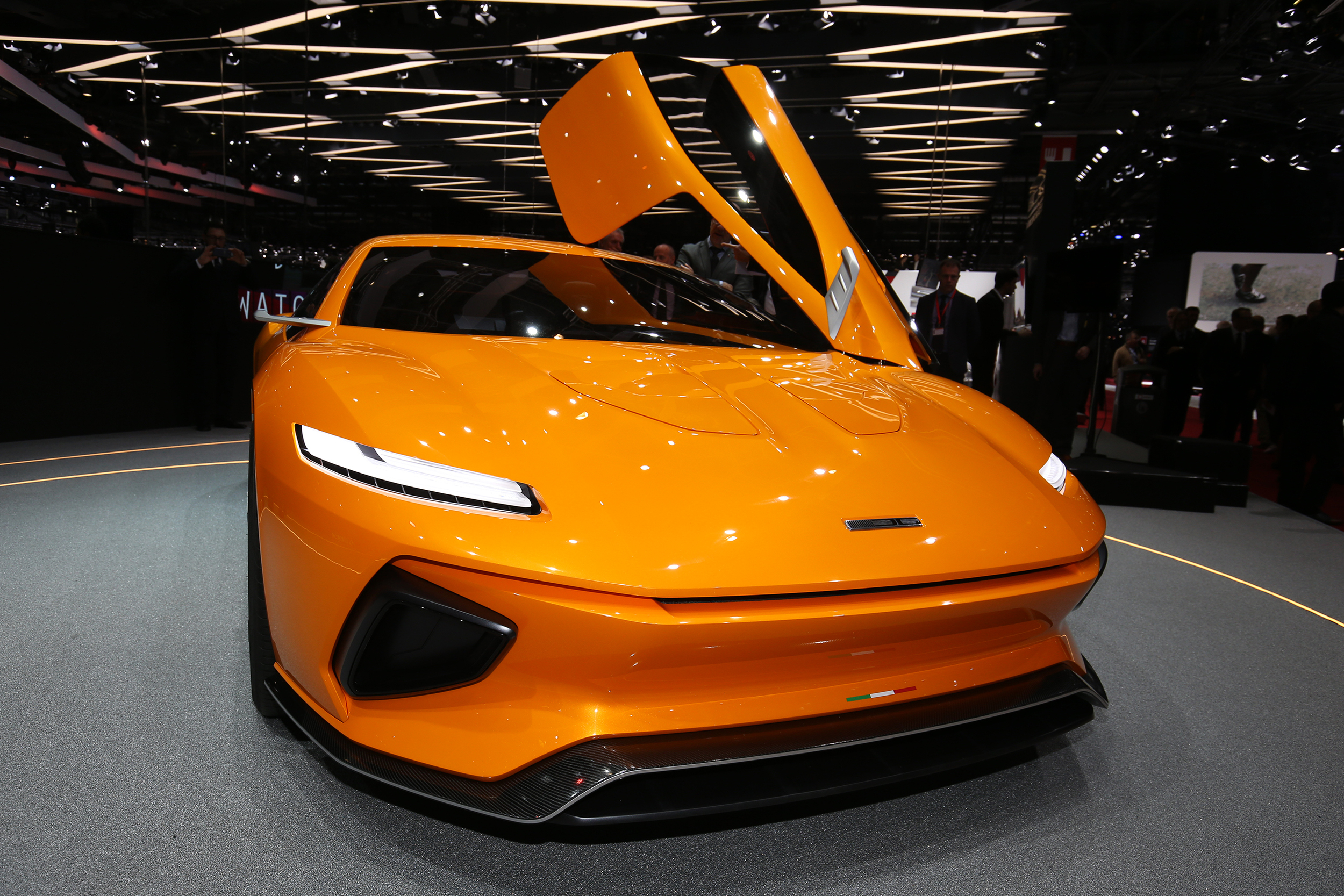
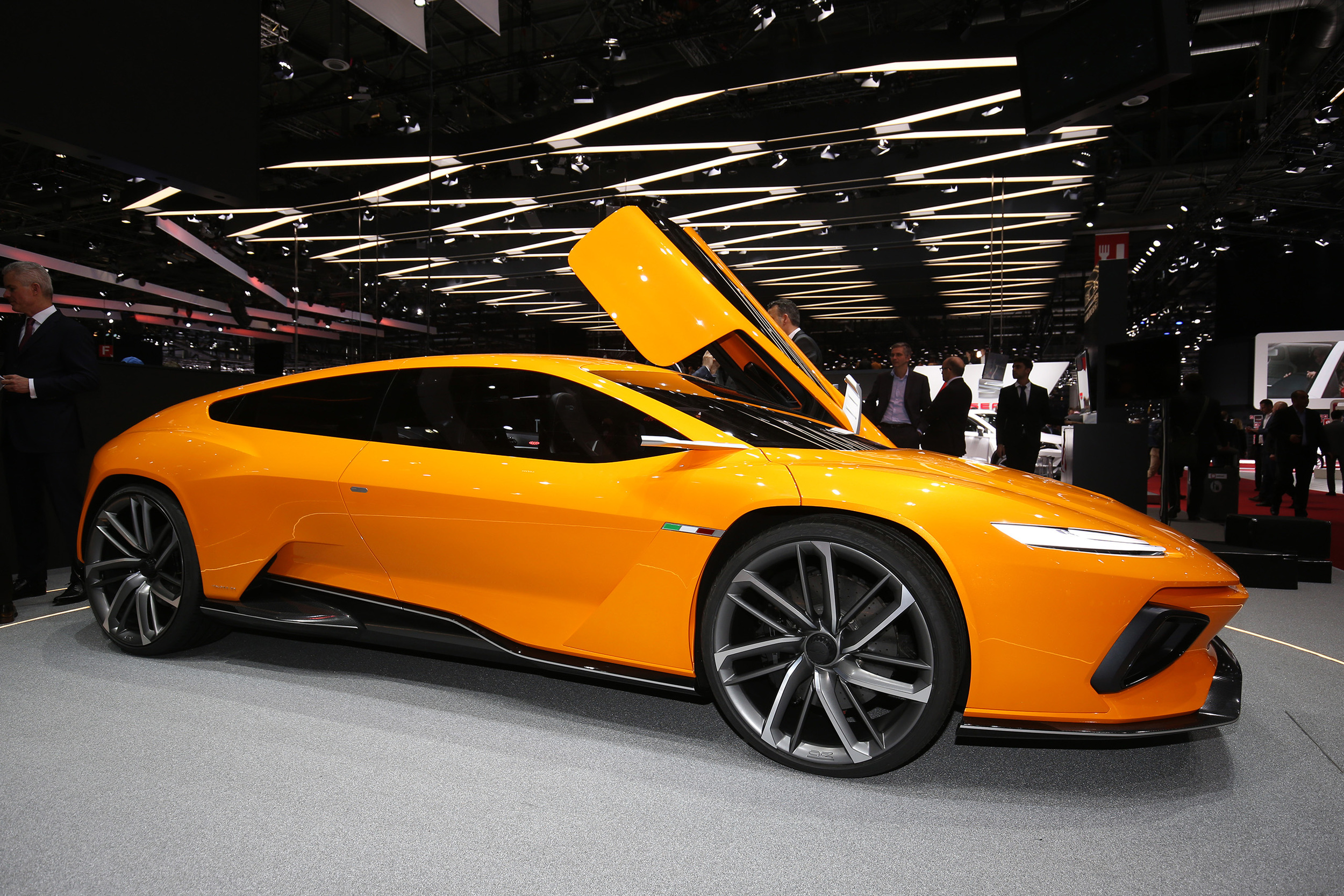
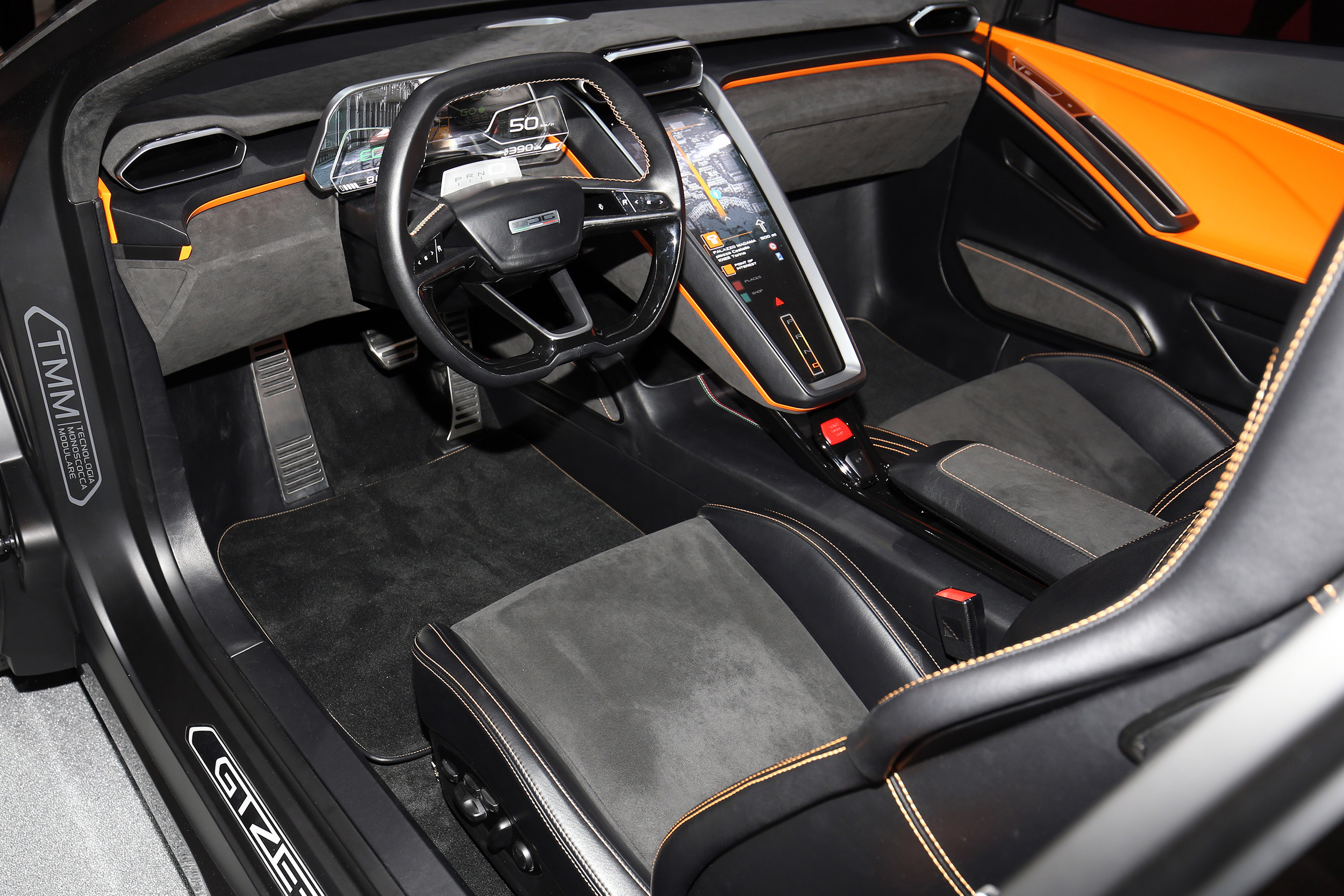

Italdesign has revealed a modern interpretation of the classic GT car with its GTZero.
The GTZero, presented in Geneva, is powered by three electric motors, two on the front axle and one on the rear - which is able to deliver an overall power output of 360 kW with four-wheel drive and four-wheel steering. Built on a modular monocoque carbon frame with integrated batteries, its top speed is limited to 155mph and it has a driving range of around 310 miles. 80 per cent of the charge is achievable in about 30 minutes.
The Gran Turismo’s sleek and dynamic profile is combined with a 'wide and comfortable' passenger compartment. The reduced rear overhang, elongated front and contained height convey its sporty nature, whilst the shooting-brake layout allows three bags to be packed comfortably in the rear luggage compartment and two more in the front one.
The GTZero was planned, designed and built at Italdesign’s headquarters in Moncalieri. The GTZero pays tribute to the nearly fifty years of history of Italdesign, recapturing several ideas from some of its historic concept cars. The active flaps on the bonnet are reminiscent of the 1997 Alfa Romeo Scighera, whilst the long bonnet, pronounced mudguards and pitched tail are a tribute to the 1995 Daewoo Bucrane; the sporty setup of the car ‘for family use’, on the other hand, brings to mind the Ferrari GG50.
The exterior lines flow from the wheels, which are 22” at the front and 23” at the rear, to the treatment of the body surfaces is both muscular, with the large wheel arches and bonnet elongated to create its sporty character, and wraparound, to ‘soften its aggressive feel’. The large air intakes and spoilers — solutions that are not merely aesthetic but functional as well — dominate the front and rear views and enclose active aerodynamic systems. At high speeds the spoilers come out to increase downforce and the air intakes open to increase aerodynamic flows. On the side, two slots close to the wheel arches stand out and help with brake system cooling.
The rear features a hexagonal shape large rear window, which also acts as an access door to the luggage compartment. The geometrical shape is framed by a long LED which runs right around the glazed surface and indicates the typical functions of the rear optical units.
Car entry is through two doors which open in the elytra style, described as like ‘the shell-like protections on beetle wings’ and which take a portion of the roof, increasing comfort when getting in and out of the passenger compartment.
In this all-electric version the batteries are integrated into the frame and inside the central tunnel, whilst the three electric motors are distributed between the front and rear axles (two on the front, one on the rear); in the hybrid version the drive shaft will be located inside the tunnel.
The dashboard includes three large air conditioning vents; the design is functional yet makes full use of ventilation technology used recently in a number of high-end domestic fans, but ‘never before tested on a car’. The vents have no internal structure at all and the air flow is generated by the vent’s ergonomics.
The steering wheel is the GTZero is described as the real control console - with two rear pads, located where the paddle shifters are normally positioned, which allow the three-level OLED dashboard display to be controlled. Another two, on the front of the steering wheel, are used to control primary functions, such as lights, direction indicators, windscreen wipers.
The small central monitor, closer to the steering wheel, indicates the gear used; just behind it and to the side, two screens show speed and motor revs and, finally, the large monitor displays navigation information. The information displayed can be changed by touching the steering wheel pads, touching both the surfaces at the same time activates the “Pista!” mode, which modifies the power delivered and the trim of the car. In “Pista!” mode, all the information is concentrated on one display.
Sports Car, Supercars, News, Motorshow
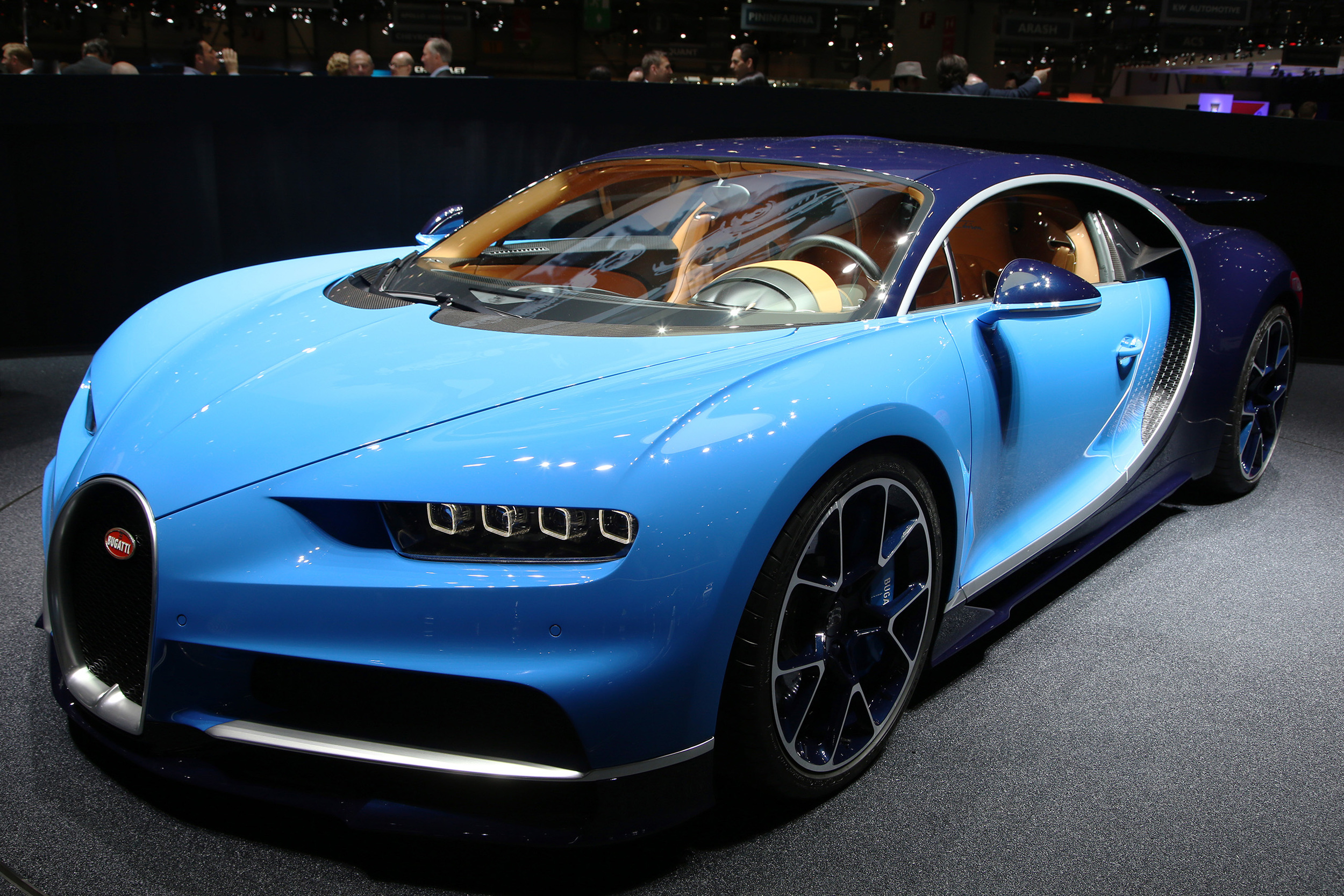
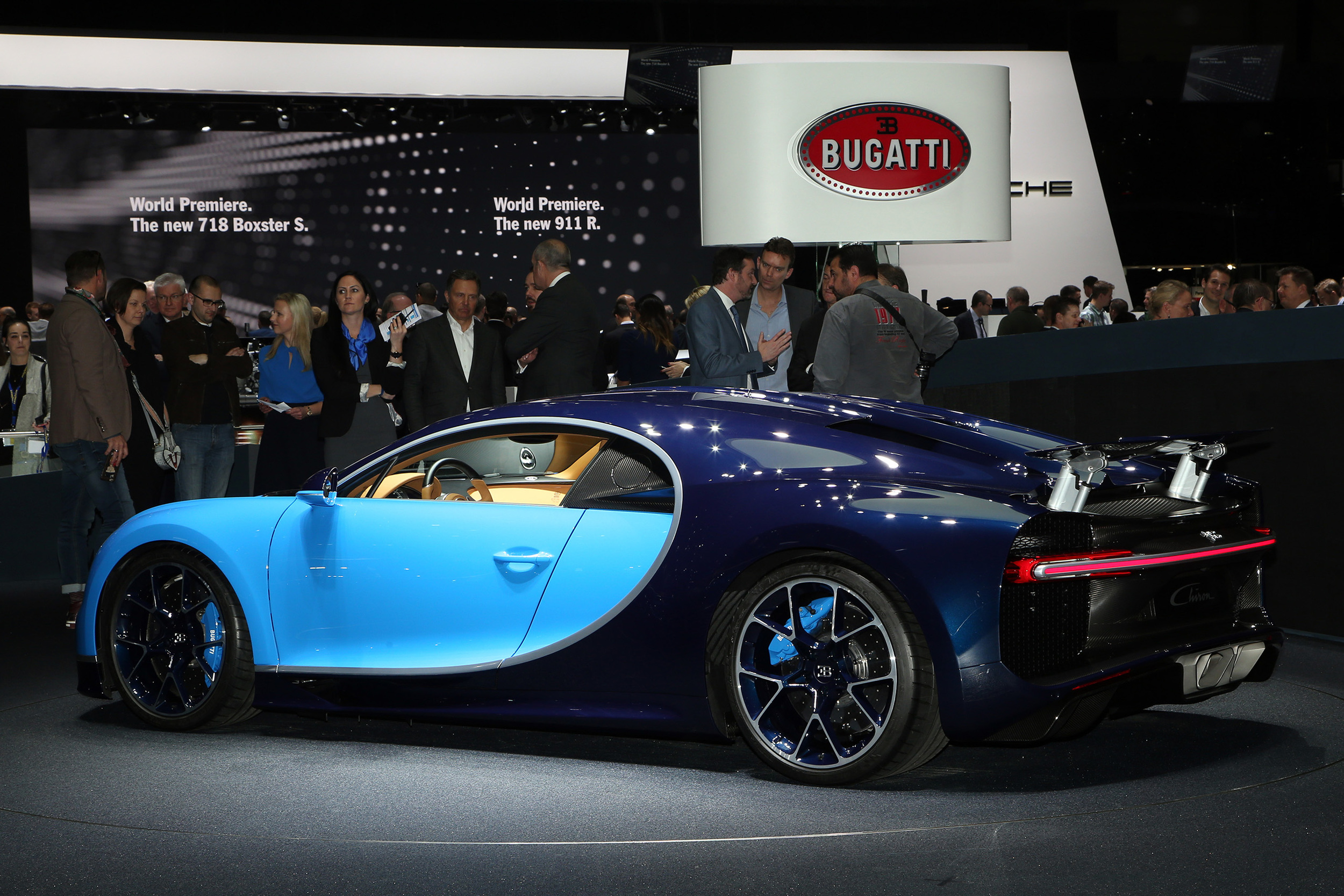

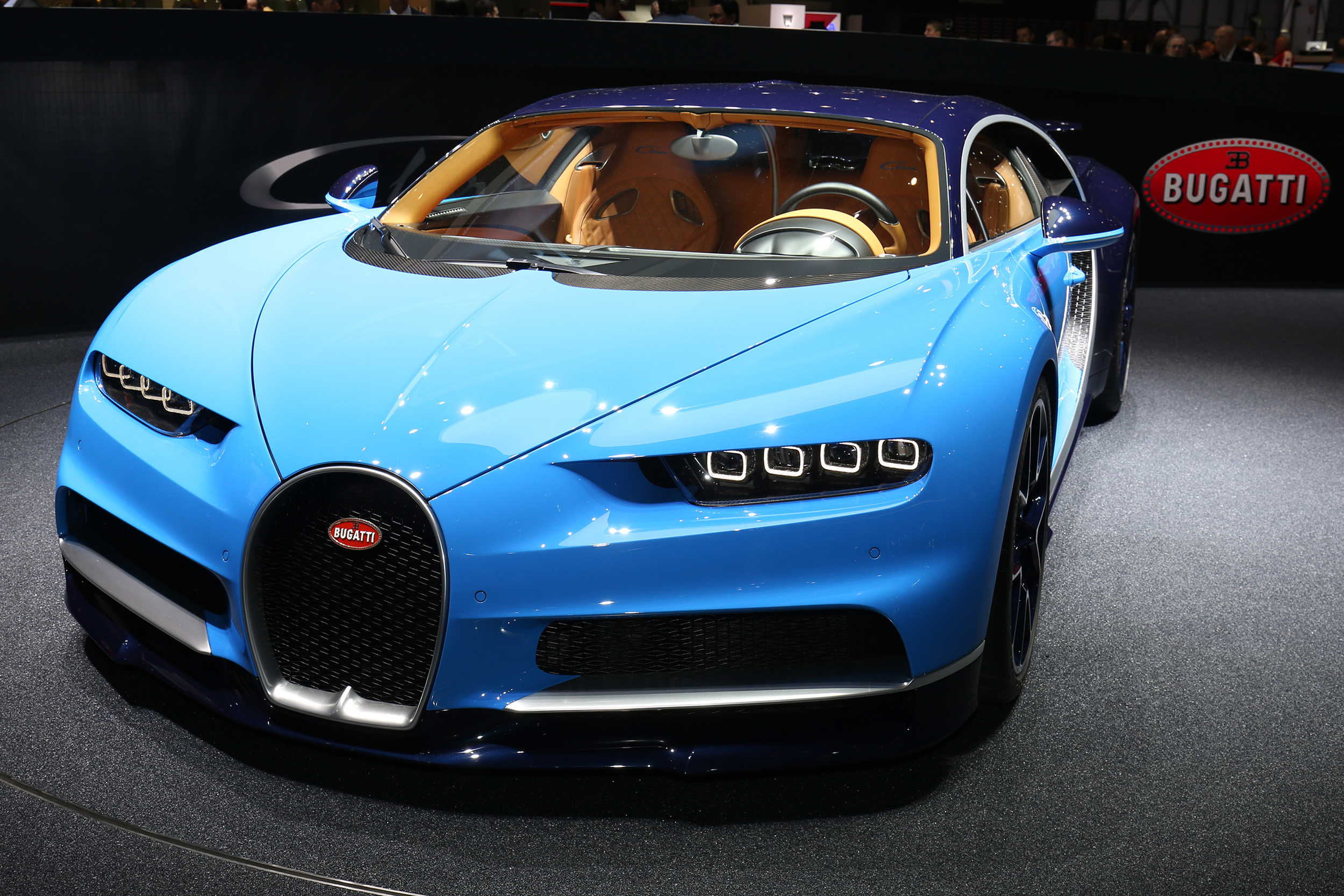
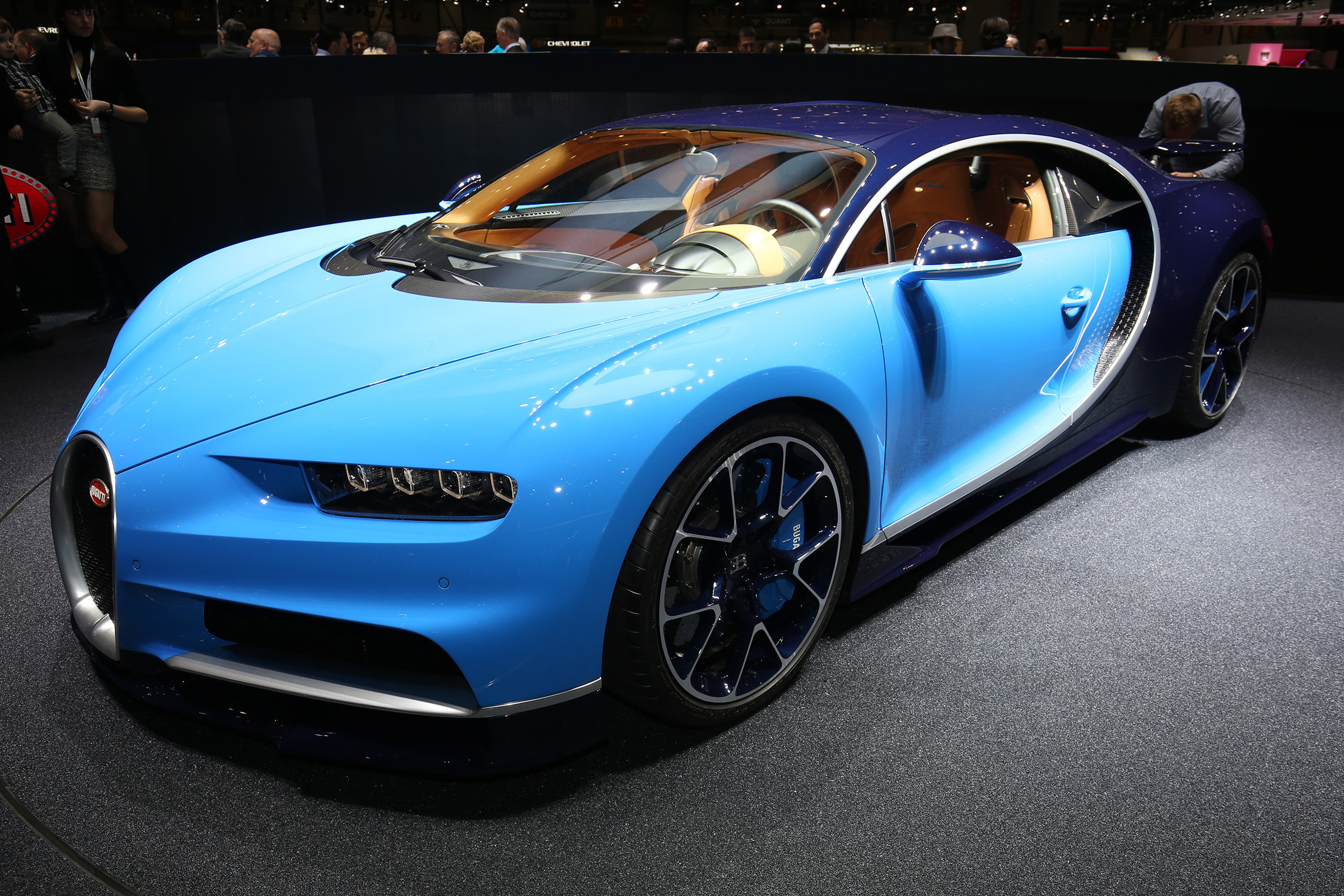

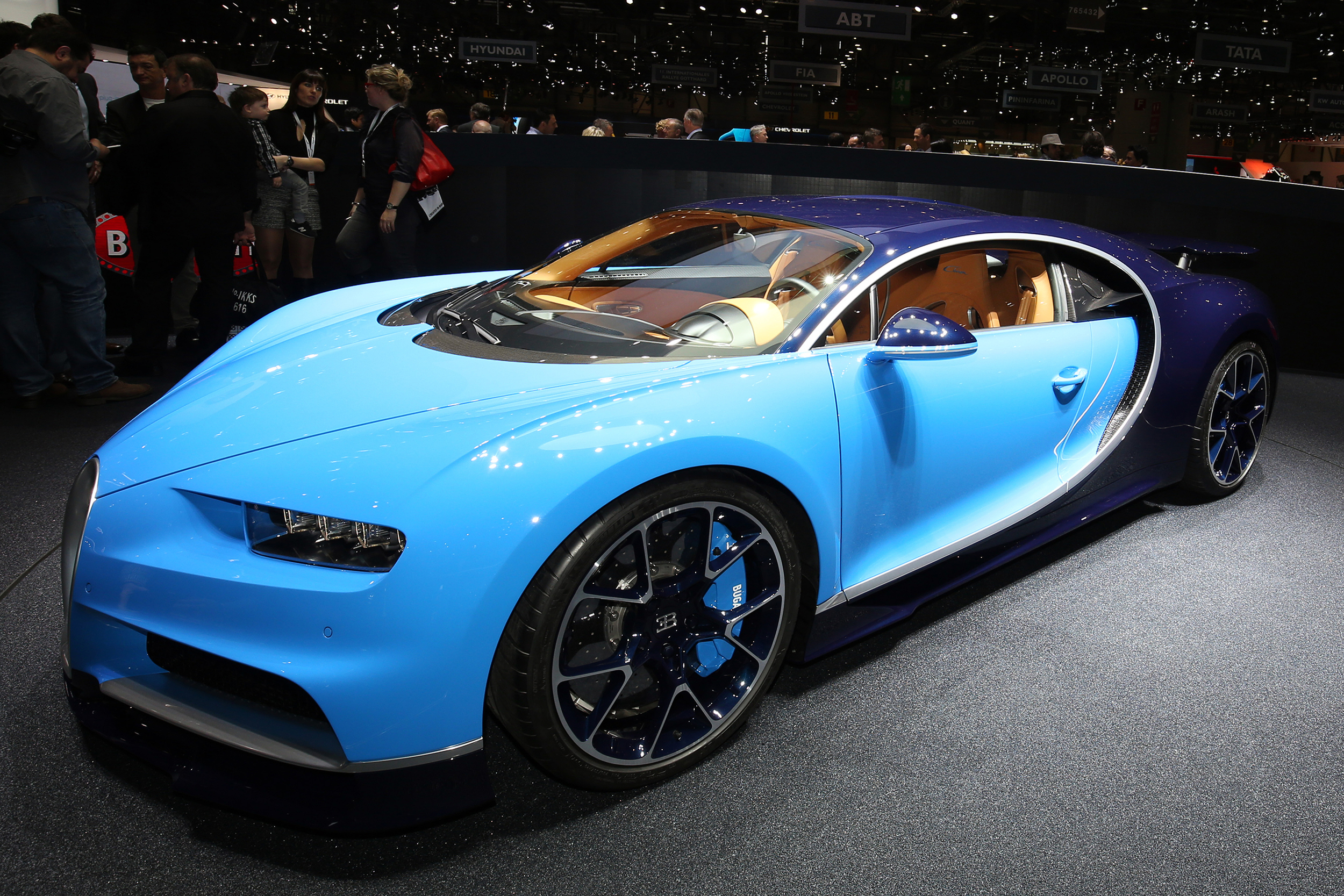
Bugatti has revealed its new Chiron supercar.
Described as ‘the world’s most powerful, fastest, most luxurious and most exclusive production super sports car’ the Chiron is the world’s first production sports car with 1,500 HP.
With torque of 1,600 Nm between 2,000 and 6,000 rpm, the Chiron offers a limited maximum speed of a whopping 260mph, and 0 to 62mph time of less than 2.5 seconds. This is the result of the unique eight-litre W16 engine that has been newly developed by Bugatti in combination with the four new, larger turbochargers that are controlled by the Bugatti two-stage turbocharging. A new carbon fibre monocoque, a newly designed adaptive chassis, tyres developed especially for Bugatti and other innovative technologies, help the Chiron ‘for the first time’ become an agile, modern Bugatti with handling that ‘ensures maximum driving pleasure’.
Limited to a series of 500 units the basic price is €2.4 million net (£1.8 million) with Bugatti confirming advance orders have already been received for one third of the total production.
“It is part of human nature to cross boundaries and set new records – to run 100 m faster than ever before, to fly even further into space and to enter new realms. This striving is also our driving force at Bugatti,” said Wolfgang Durheimer, President of Bugatti Automobiles S.A.S., at the presentation of the Chiron. “The Chiron is the result of our efforts to make the best even better.”
The first Chiron is due to be delivered to a customer this autumn.
Motorshow, News, Sports Car, Supercars
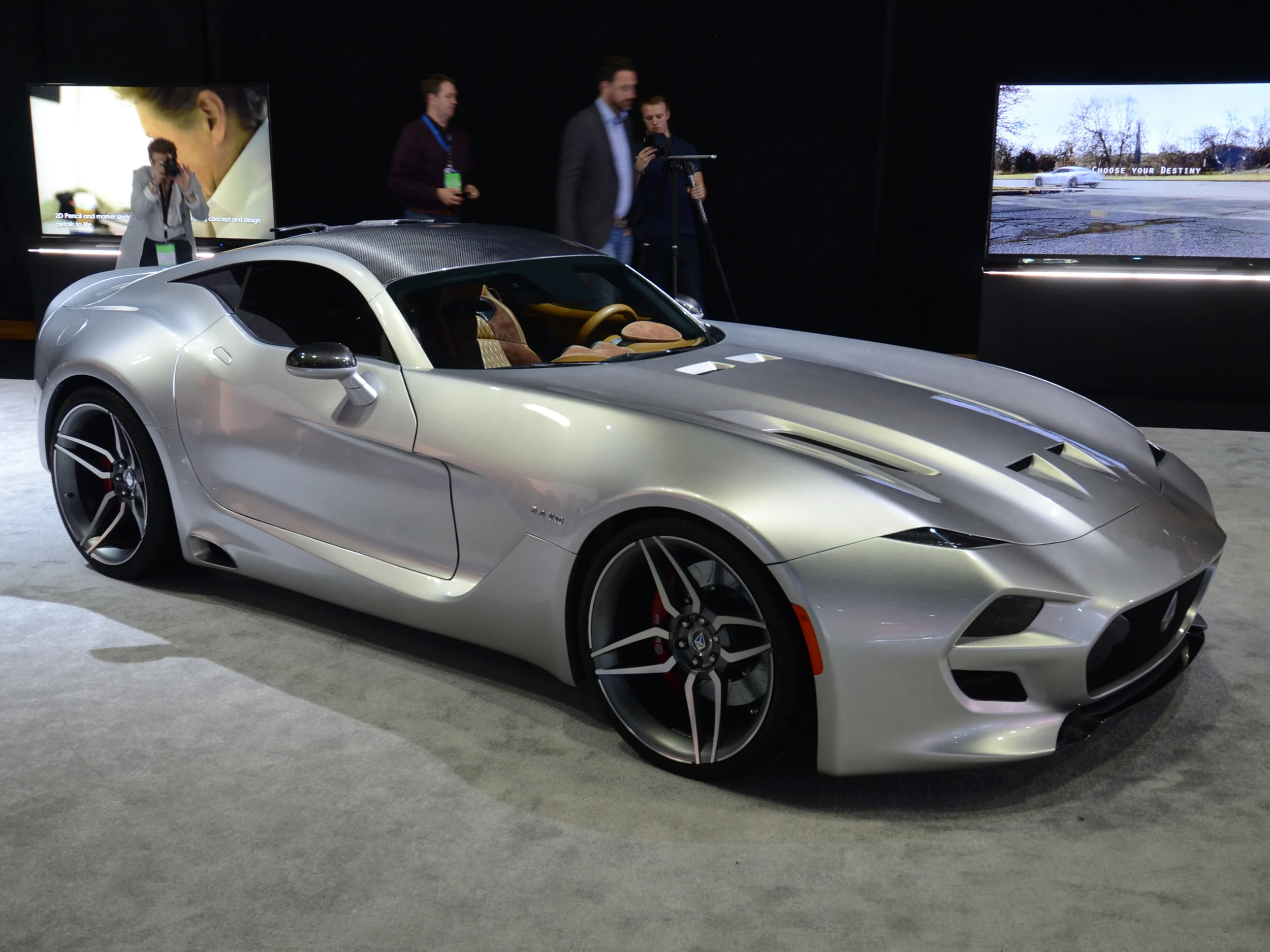
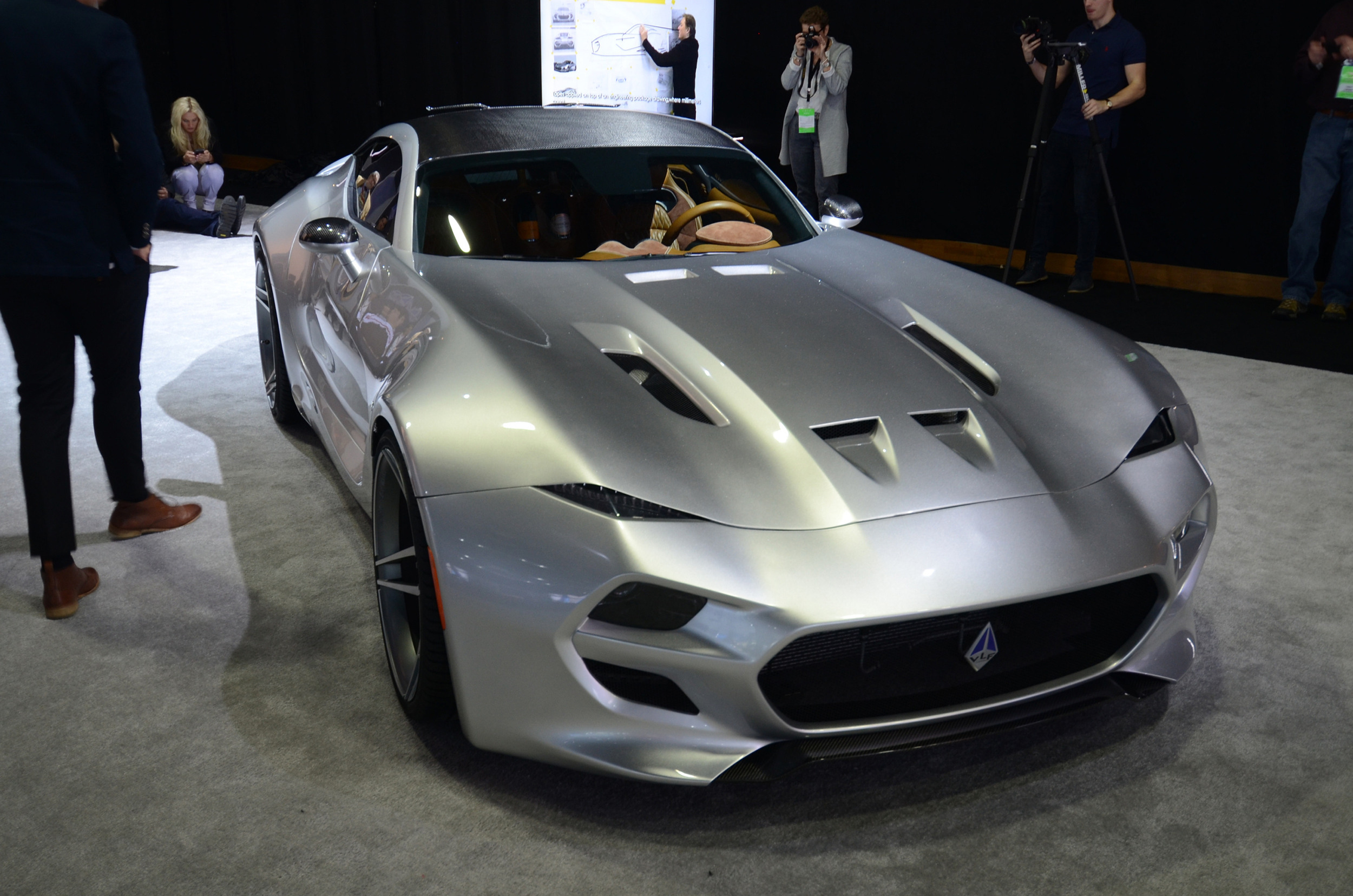
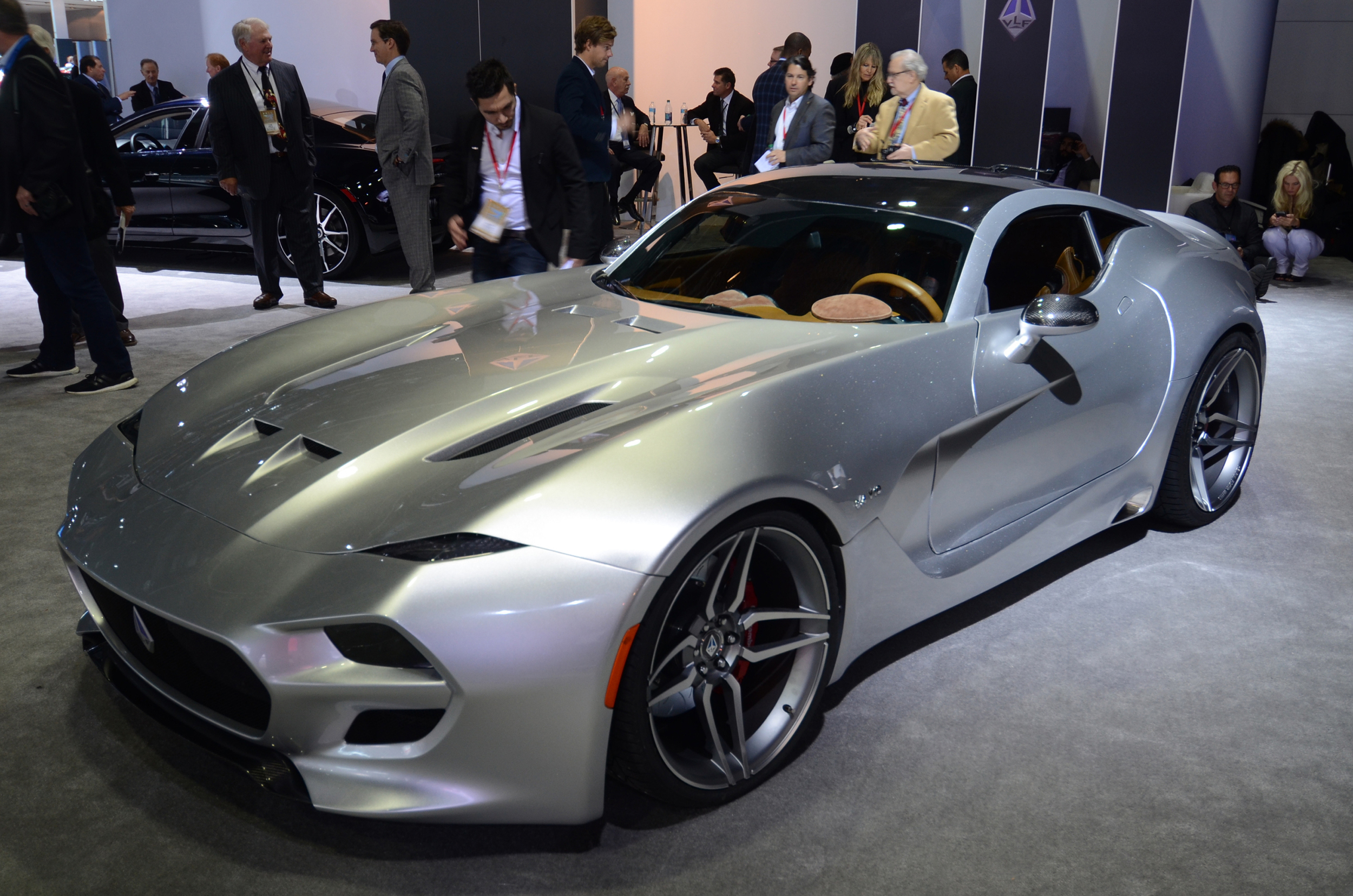
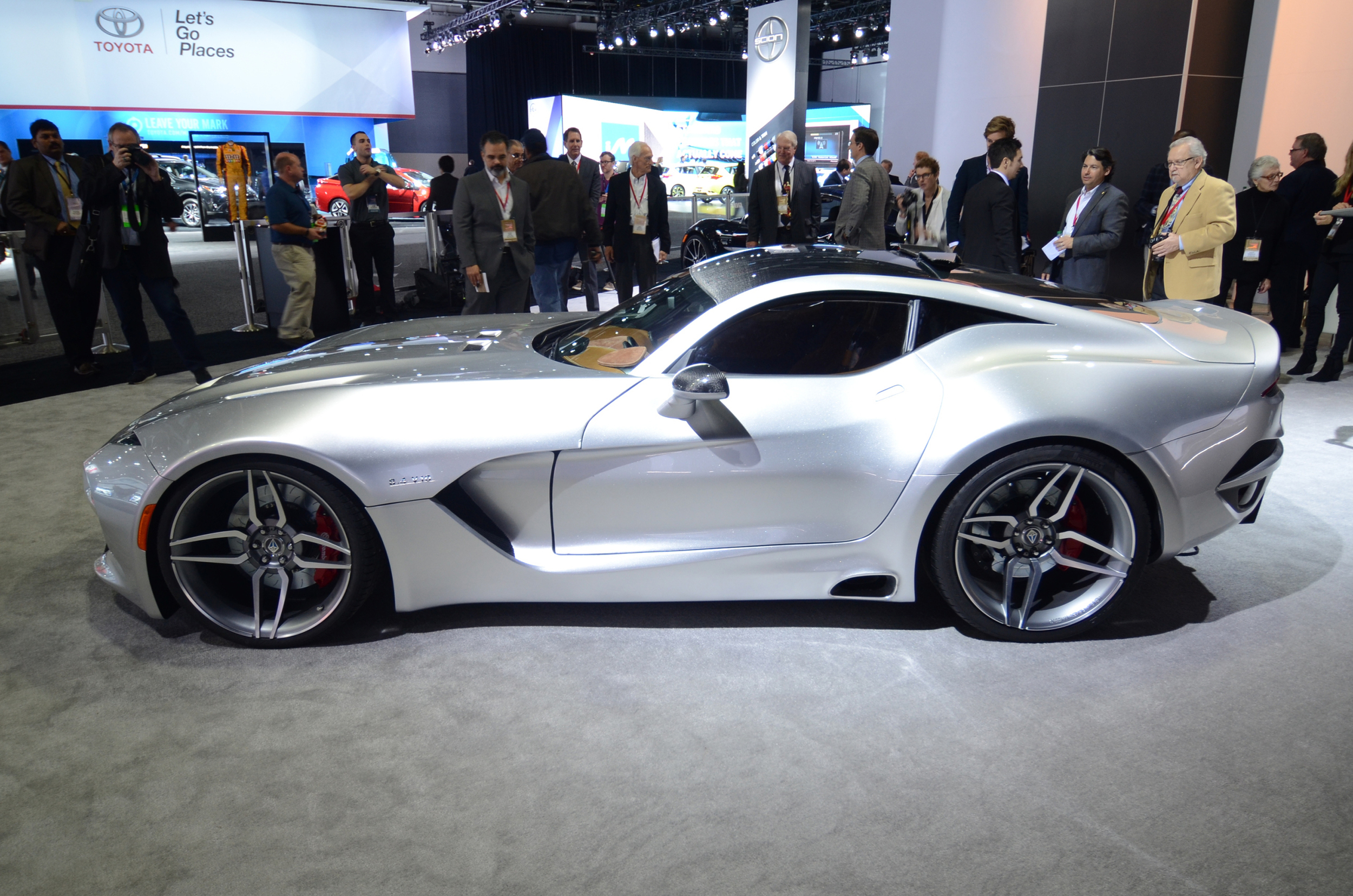
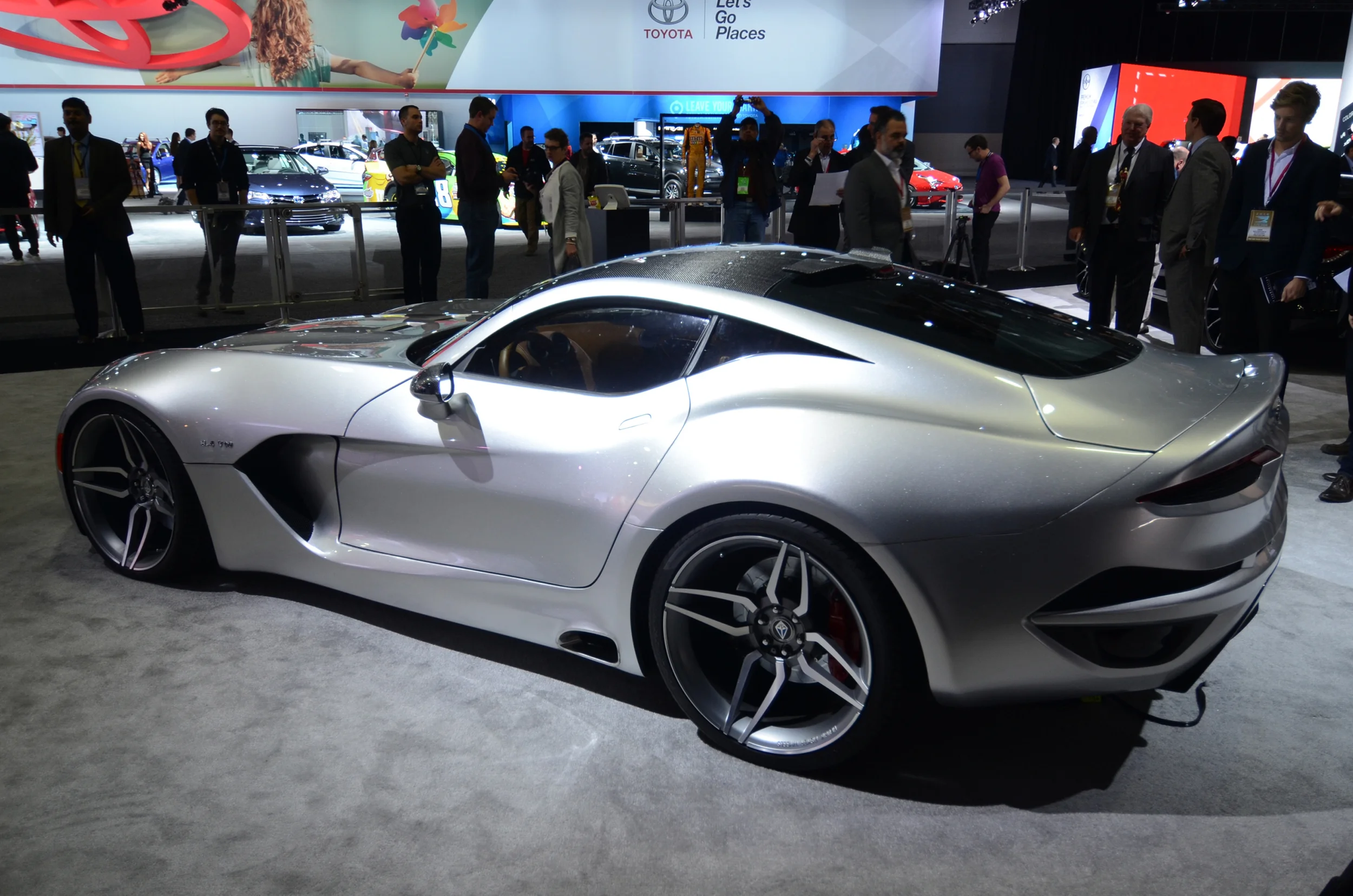
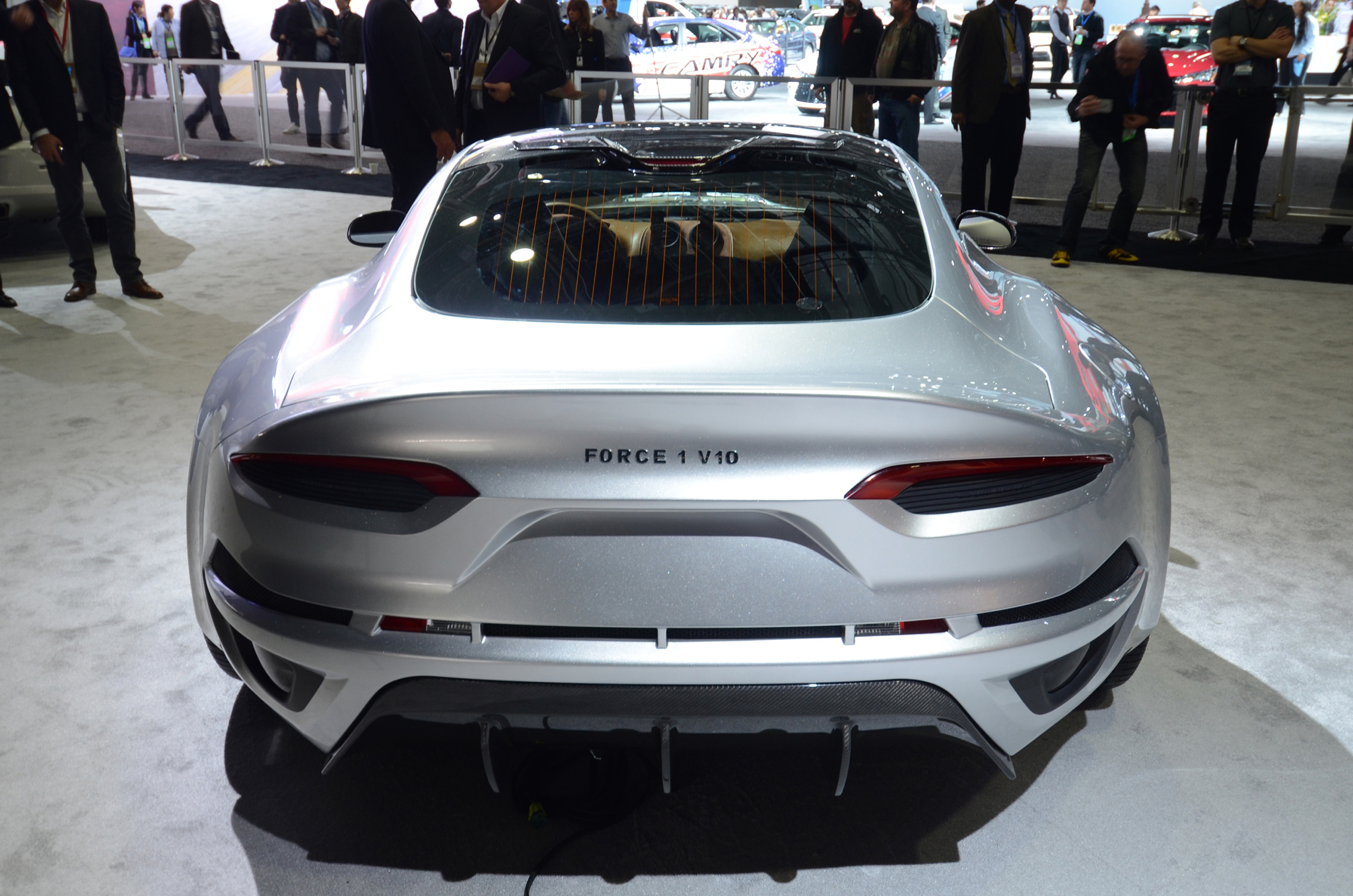
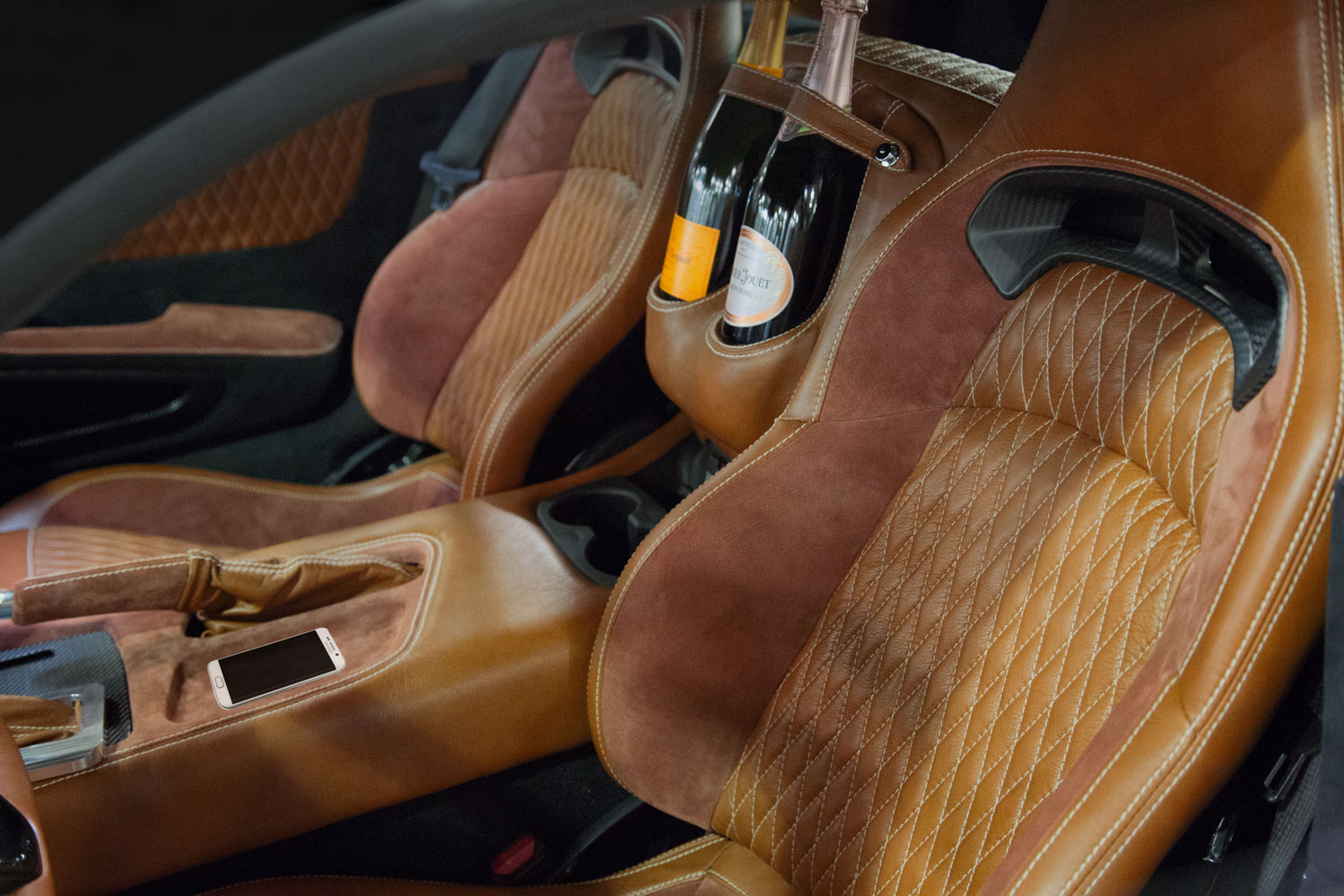
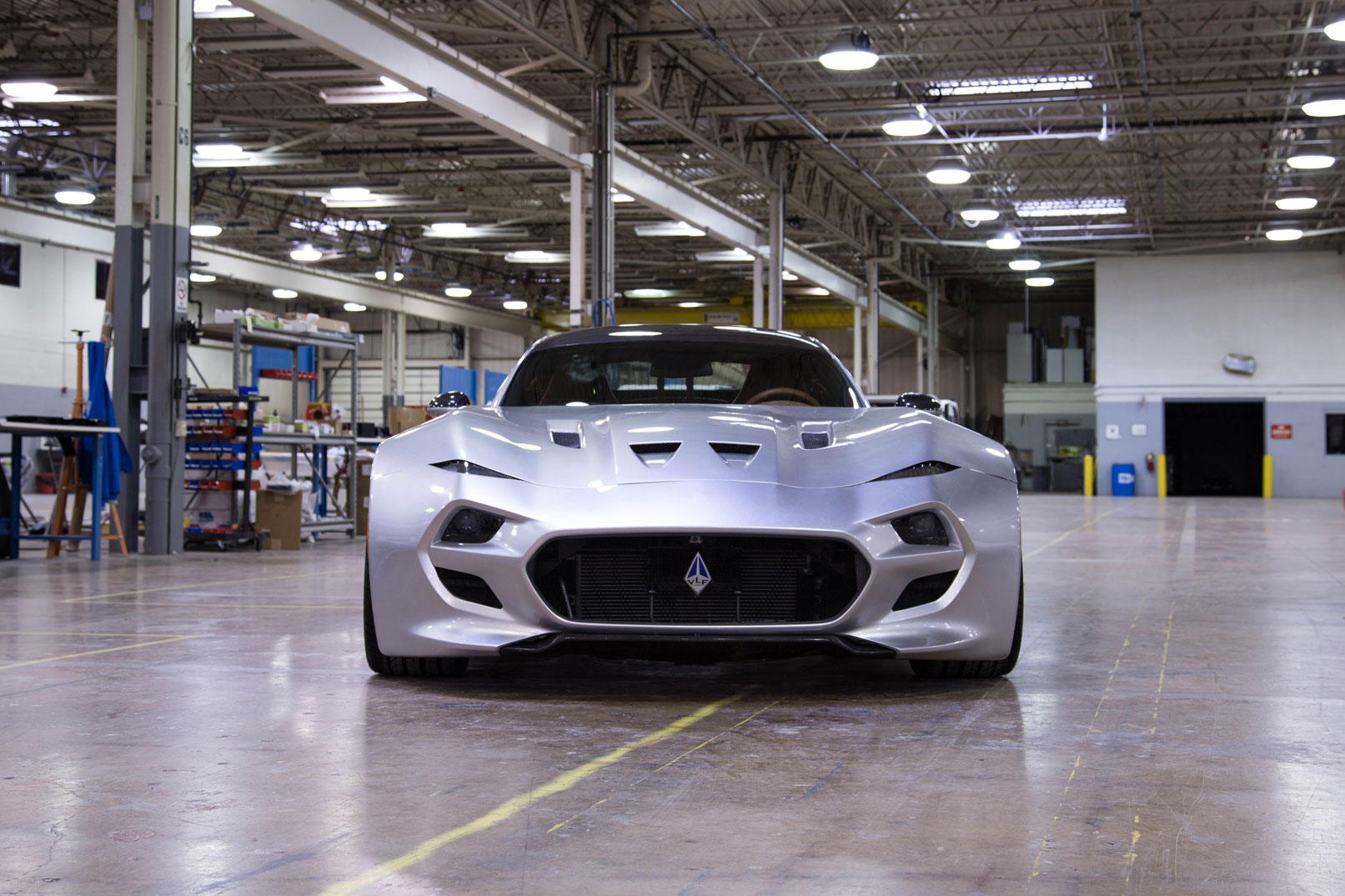
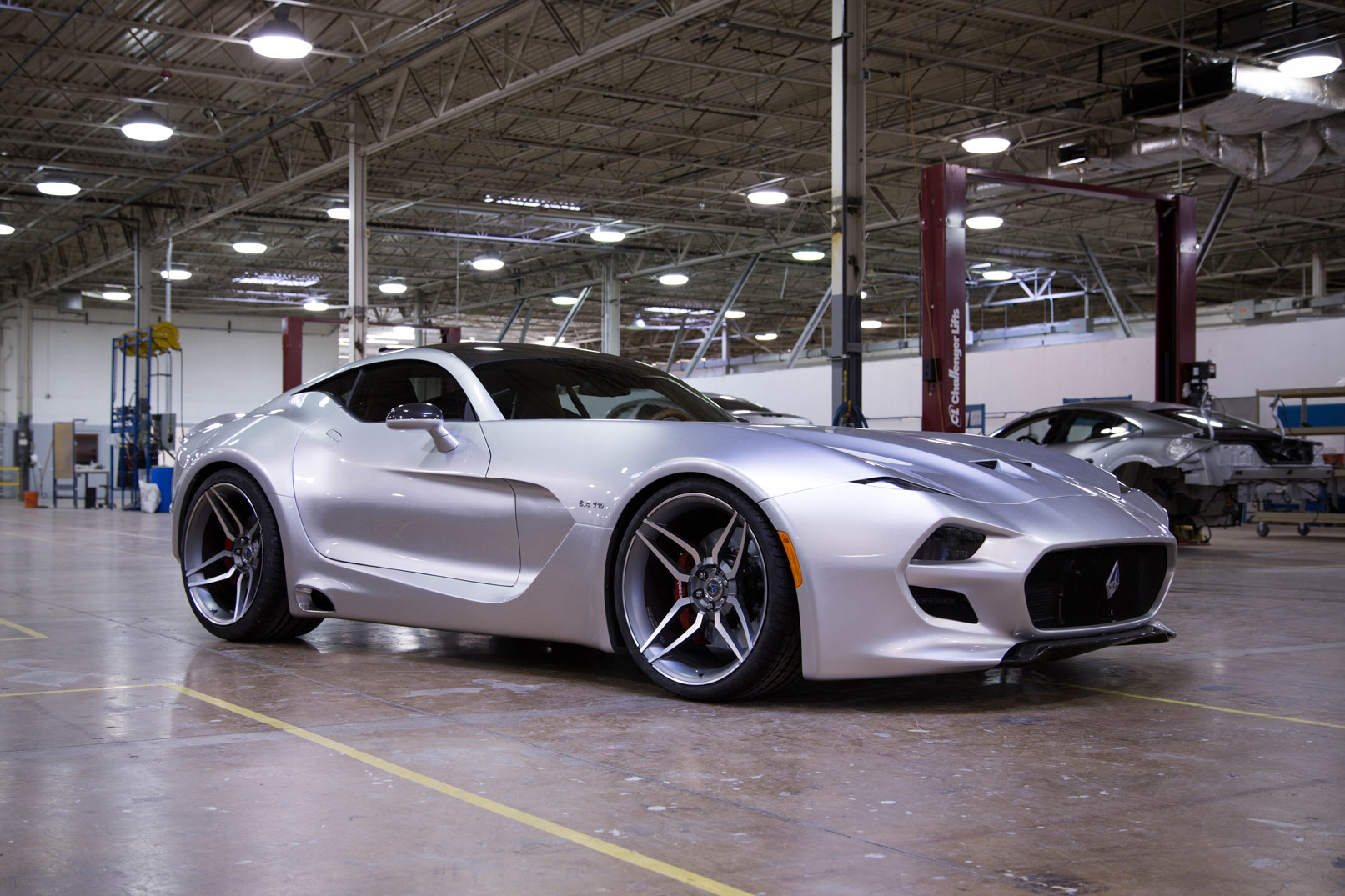
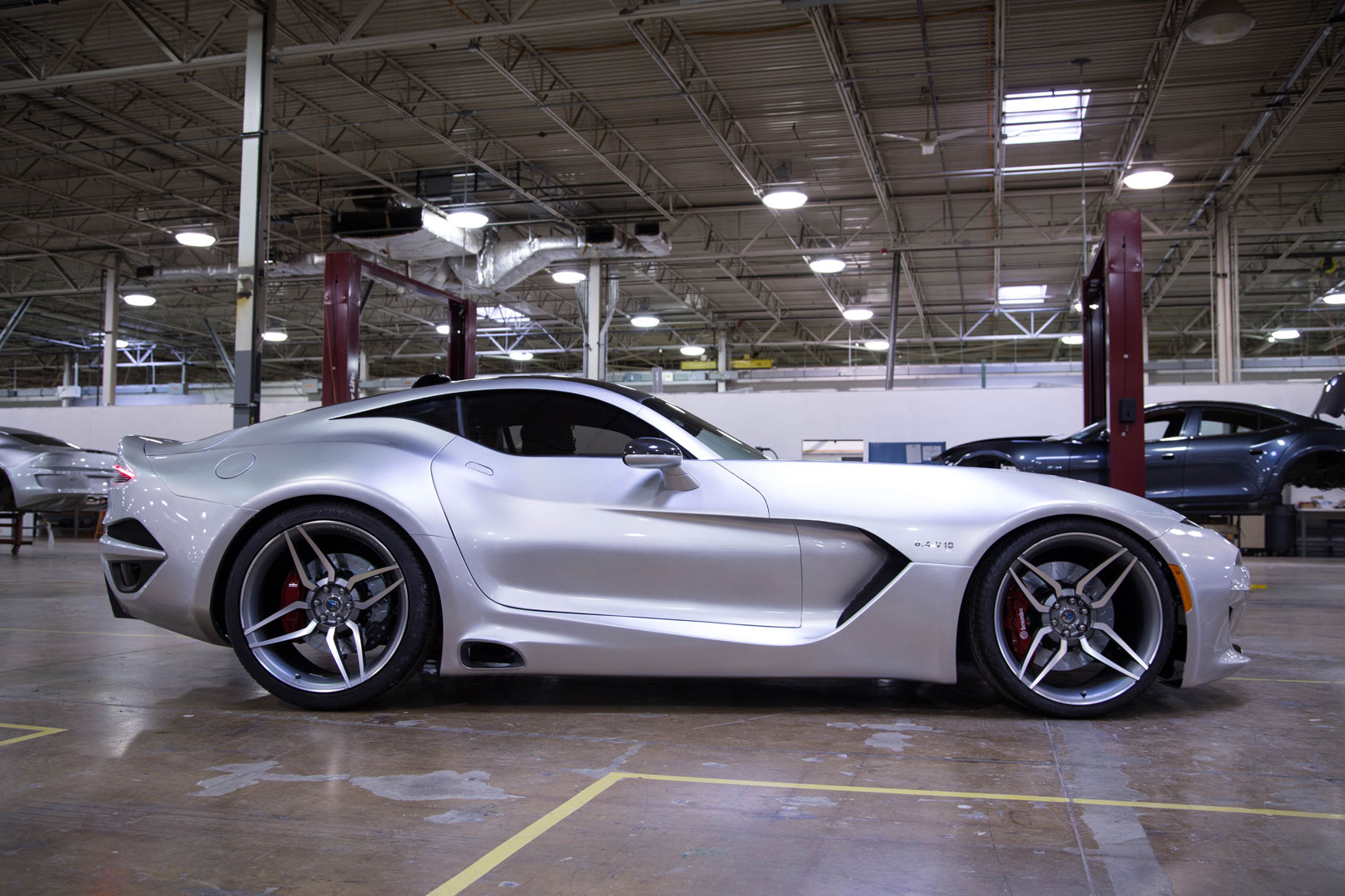
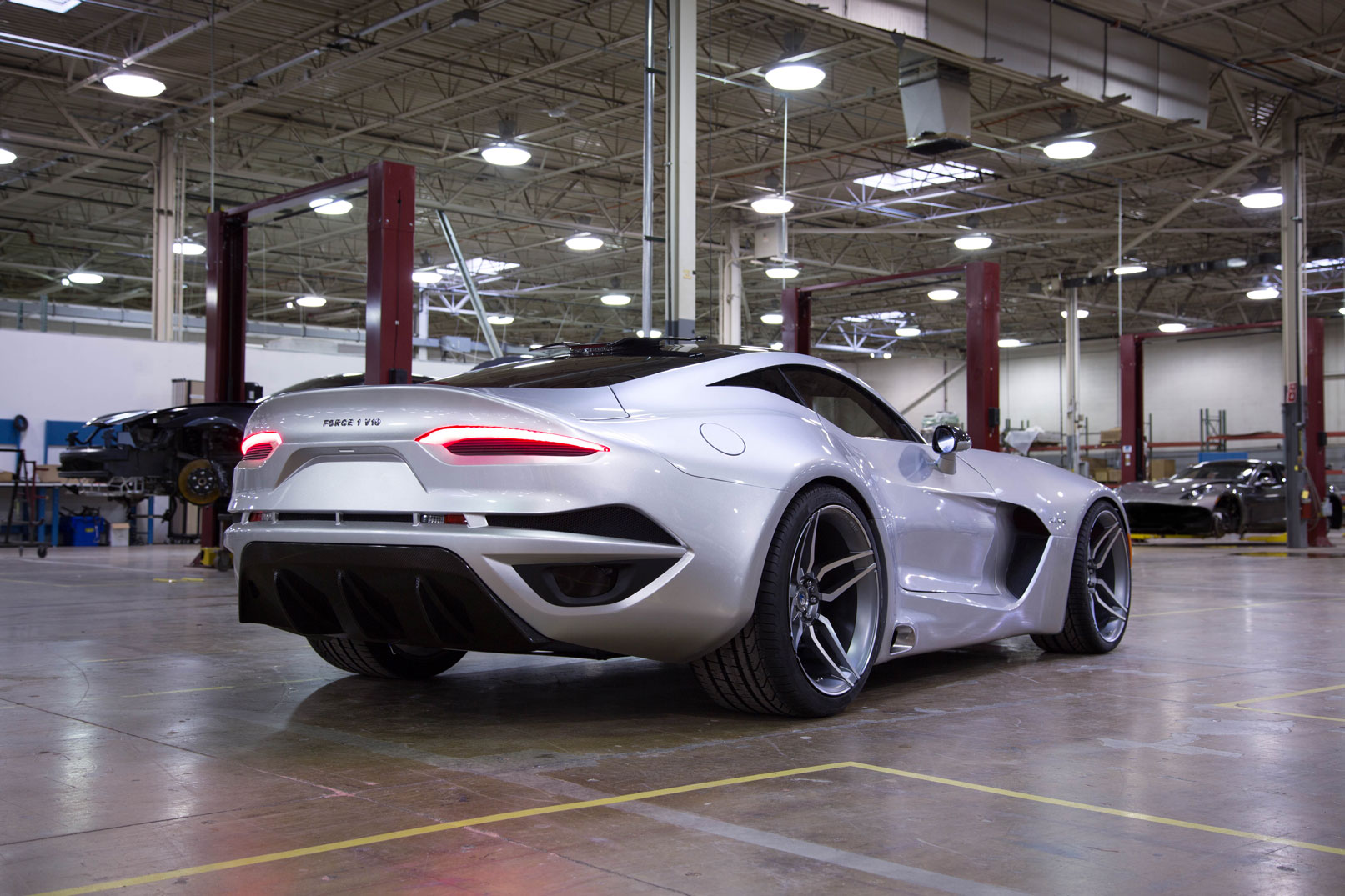
VLF Automotive has pulled the covers off its new all carbon fibre-bodied sports car, the Force 1.
The American made two-seater is described as a high-performance, low-production sports car, manufactured in Auburn Hills, Michigan by the newly launched VLF Automotive - of which former Aston Martin designer Henrik Fisker is a partner and design chief.
VLF, established in 2015, is named after the founding members - former General Motors Vice Chairman Bob Lutz, manufacturer Gilbert Villarreal and entrepreneur and designer Henrik Fisker. The company has announced the production of 2 models in 2016 - the Destino V8 and Force 1 V10.
The exterior design of the Force 1 has 'classic American sports car proportions' with a long bonnet, short front overhang, long tail and pushed out wheels. “In the case of Force 1, there is an extremely pushed back green house,” Fisker explained. “The sculpture on Force 1 is like a family succession to the Destino, dramatic and powerful, relative flat surfaces on the high end of the body side, with lines full of tension, emerging onto a rounder lower section, where Force 1 has a large functional outlet." The car has one of the most powerful naturally aspirated road engines in the world, according to VLF, delivering ‘the best performance in its price class’. The 745hp, 8.4-litre V10 engine enables a 0-60mph time of 3.0 seconds flat.
The Force 1 incorporates downforce elements such as the deep front spoiler and aggressive rear diffuser in pure visible carbon fibre. At the top of the rear glass sits a unique rear wing spoiler also housing the in car Wi-Fi and third brake light. Both the front and rear signature Henrik Fisker wheels feature a concave section design to improve strength of the wheel and requiring less mass. The 21-inch wheels with wide high-performance Pirelli tires sits in ‘lean, sculptured, pronounced wheel arches’. The front features an aggressive grille housing the VLF logo in the centre and two ultra-slim lights sitting above the grille. The interior is described as luxurious, with hand stitched ultra-soft leather, Alcantara, suede with several other unique features, such as a champagne holder.
Production commences at the end of April 2016 in Auburn Hills and first customer deliveries begin in the third quarter of 2016, with the base price starting at $268,500 (£187,992). The Force 1 V10 will be produced in limited numbers with an initial production of only 50 units.
VLF is expected to have seven dedicated dealers with full service capability, throughout North America, and several international dealers appointed in 2016.
Concept Car, Events, News, Motorshow, Supercars








Automotive newcomer, Faraday Future (FF), has introduced its plan to rethink mobility, unveiling the FFZERO1 Concept, which is making its public debut at the Consumer Electronics Show (CES) in Las Vegas.
The company’s first ever concept is a high performance electric vehicle built upon FF’s Variable Platform Architecture (VPA), a modular engineering system optimised for electric vehicles, on which all future FF production vehicles will be based.
The VPA is designed to minimise production costs, deliver quality and safety, increase speed to market, and support a range of different vehicle types and sizes.
The high performance FFZERO1 Concept was applied to the VPA in order to maximise the platform’s potential and showcase its flexibility.
It features adaptive personalisation, seamless transfer of custom vehicle configurations, access to live images and real time data visualisation. The smartphone has been directly integrated into the steering column, enabling it to serve as the interface between the vehicle and the driver in – and outside – of the car.
The FFZERO1 Concept could be fully autonomous, meeting its driver at the track and perhaps taking a few perfect laps on its own to compare with, and improve upon, its driver’s performance.
The interior, primarily white with a carbon fibre finish, features a NASA-inspired single-seat configuration, offering a comfortable, weightless body position, says FF, holding the driver at a perfect 45-degree angle, thereby helping to promote circulation.
The propeller-shaped, asymmetric instrument panel is a theme that will be incorporated into the future FF design DNA. It runs seamlessly into a Halo Safety System with integrated head and neck support, oxygen, and water supply fed to the driver through a prototype helmet. The system could also gather biometric data about its driver.
Utilising lightweight materials and composites on the VPA platform, the FF design team experimented with new driver-focused proportions, pushing the canopy forward for a perfectly aerodynamic teardrop profile.
“The FFZERO1 Concept is an amplified version of the design and engineering philosophies informing FF’s forthcoming production vehicles,” said Richard Kim, head of design, Faraday Future. “This project liberated our designers and inspired new approaches for vehicle forms, proportions and packaging that we can apply to our upcoming production models.”
Powered by four motors, one at each wheel, the FFZERO1 is built for the track. If developed for limited production, it will have more than 1000 horsepower and will accelerate from zero to 60 in under three seconds, with a top speed in excess of 200 miles per hour.
FF has also announced a strategic cooperation with global technology brand, Letv. The two companies will build advanced electric vehicles by bringing together resources from four domains: technology, automotive, internet and cloud, and entertainment content.
Headquartered in California, the FF team is composed of experts in automotive, aerospace and technology fields who believe the future mobility experience should integrate seamlessly to the connected age.
The company plans to invest 1 billion US Dollars in the creation of a manufacturing facility in North Las Vegas. The company is set to break ground on this phase one investment in the next few weeks, and ultimately employ 4,500 people.
Events, Luxury, News, Sports Car, Supercars

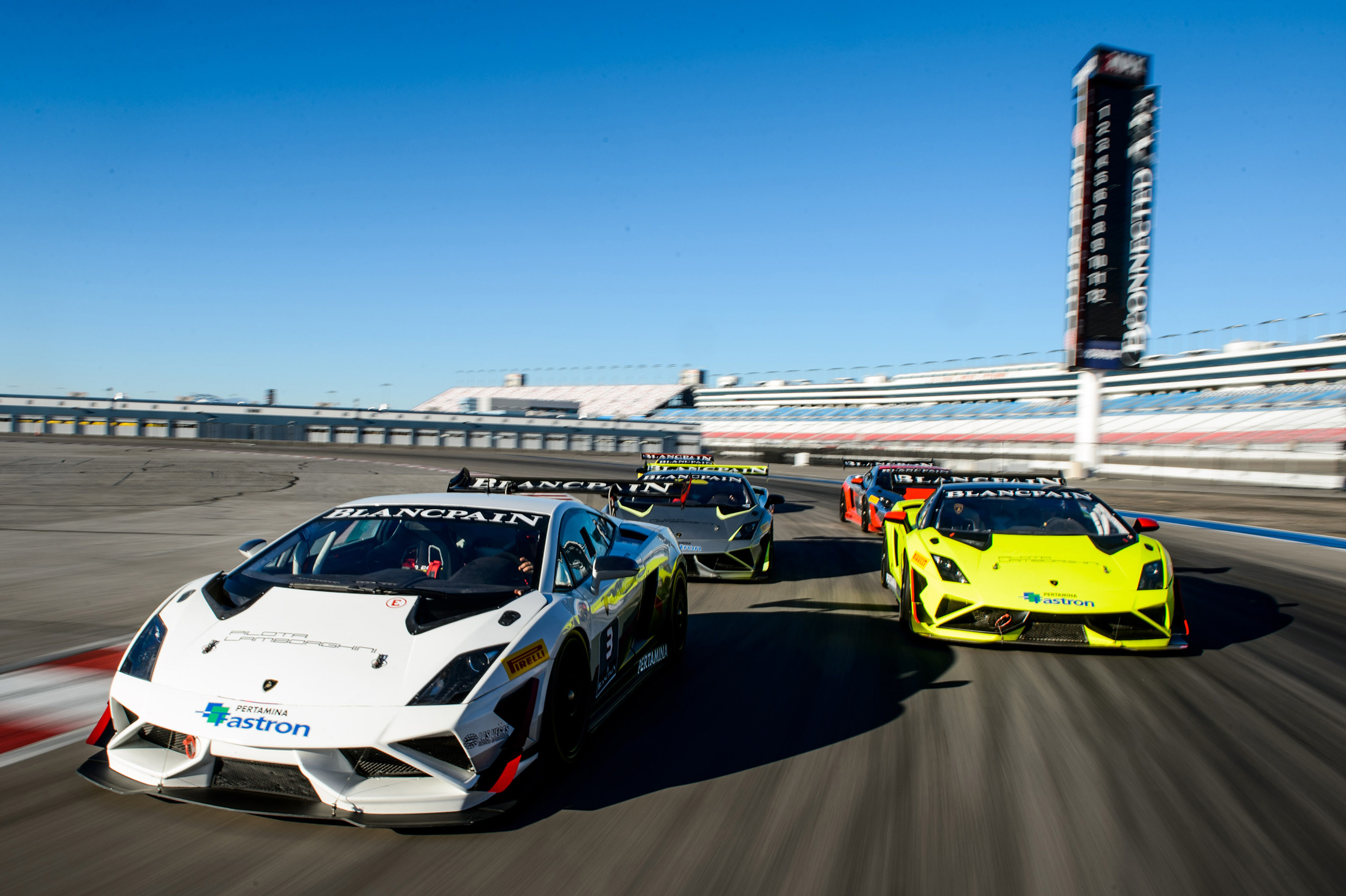
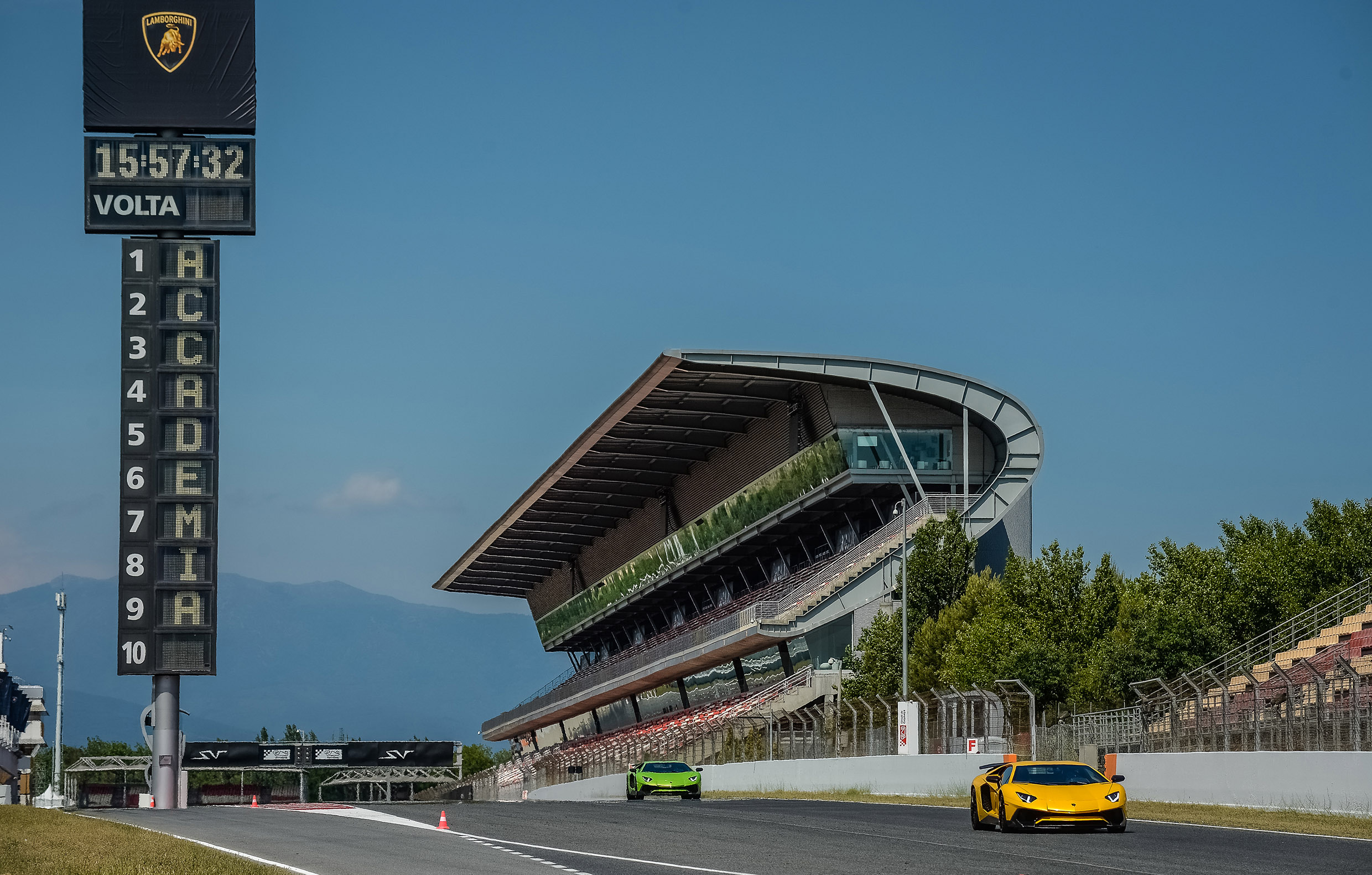
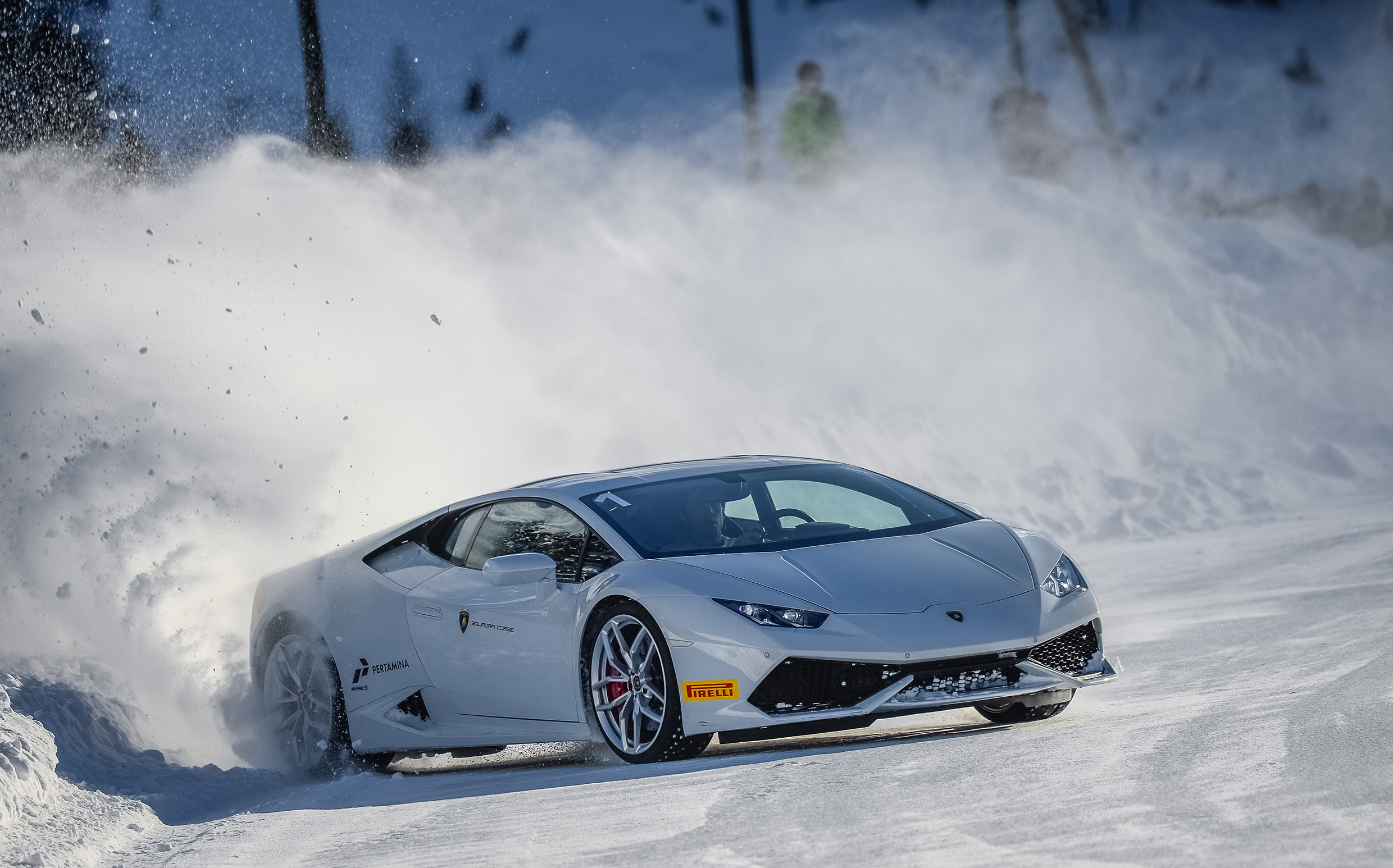
Automobili Lamborghini has announced details of its programmeme of Esperienza and Accademia track driving courses for 2016, with locations in Europe, America, Asia and Australia.
The 2016 season will get under way in Europe, with the Winter Accademia on the evocative icy surface of Livigno, Italy, to be held in late February. Hot on its heels, the famous resort of Aspen, Colorado, is the venue for the American event.
Following the winter dates, the Phillip Island circuit hosts the first Accademia course in Australia. After the first leg at Italy’s Imola circuit, the Accademia will follow some important European rounds of the Lamborghini Blancpain Super Trofeo one-make series, including the historic Nurburgring circuit, and Valencia, which is also the location for the race series’ world finals.
In the United States the Accademia will be held at the Laguna Seca circuit, while Las Vegas is the setting for the second edition of the Pilota Lamborghini course, dedicated to competitive racing.
The 2016 Lamborghini Esperienza calendar will also take in four continents, with more than twenty dates scheduled at some of the most prestigious circuits in Europe, the United States, Asia and Australia.
Lamborghini Esperienza is the first step for those who wish to get closer to the world of Lamborghini, providing an introduction to the Raging Bull brand and its legendary super sports cars. For the Imola Esperienza, activities include a visit to the Lamborghini factory and museum in Sant’Agata Bolognese (Bologna), as well as the track driving.
The Lamborghini Accademia offers fans the chance to drive on the track (Track Accademia) or on ice (Winter Accademia). Each Accademia offers two types of programme – intensive and advanced – giving the participants the opportunity to take their first steps towards the world of competitive racing.
The course involves multiple training sessions during which drivers undertake various exercises including slaloms, acceleration, braking and oversteering.
Each track day is open to a maximum of 24 participants on the intensive course, and 20 on the advanced course. Drivers are divided into small groups to make the experience highly exclusive and personalised.
The most advanced stage of the Accademia course is the Pilota Lamborghini course, the first edition of which was held in November at the Las Vegas Motor Speedway. This new programme is for those with the desire to become a racing driver, through a series of tests which simulate a full-on competitive race weekend.
Over 2,000 attendees are expected at the Esperienza and Accademia courses during 2016. All participants will be able to put themselves to the test and perfect their driving aboard the Lamborghini Aventador LP 700-4, the V12 benchmark for luxury super sports cars, and the Lamborghini Huracan, in the Coupé, Spyder and 2WD versions.
The Esperienza and Accademia courses are part of the Lamborghini Squadra Corse programme, which since 2013 has offered an integrated approach to Lamborghini driving experiences, right through to the world of competitive racing with the Lamborghini Blancpain Super Trofeo and GT3.
Like this year, in 2016 Lamborghini Squadra Corse will also select drivers from the Young Drivers and GT3 Junior Programme to participate as instructors at the Esperienza and Accademia events around the world.
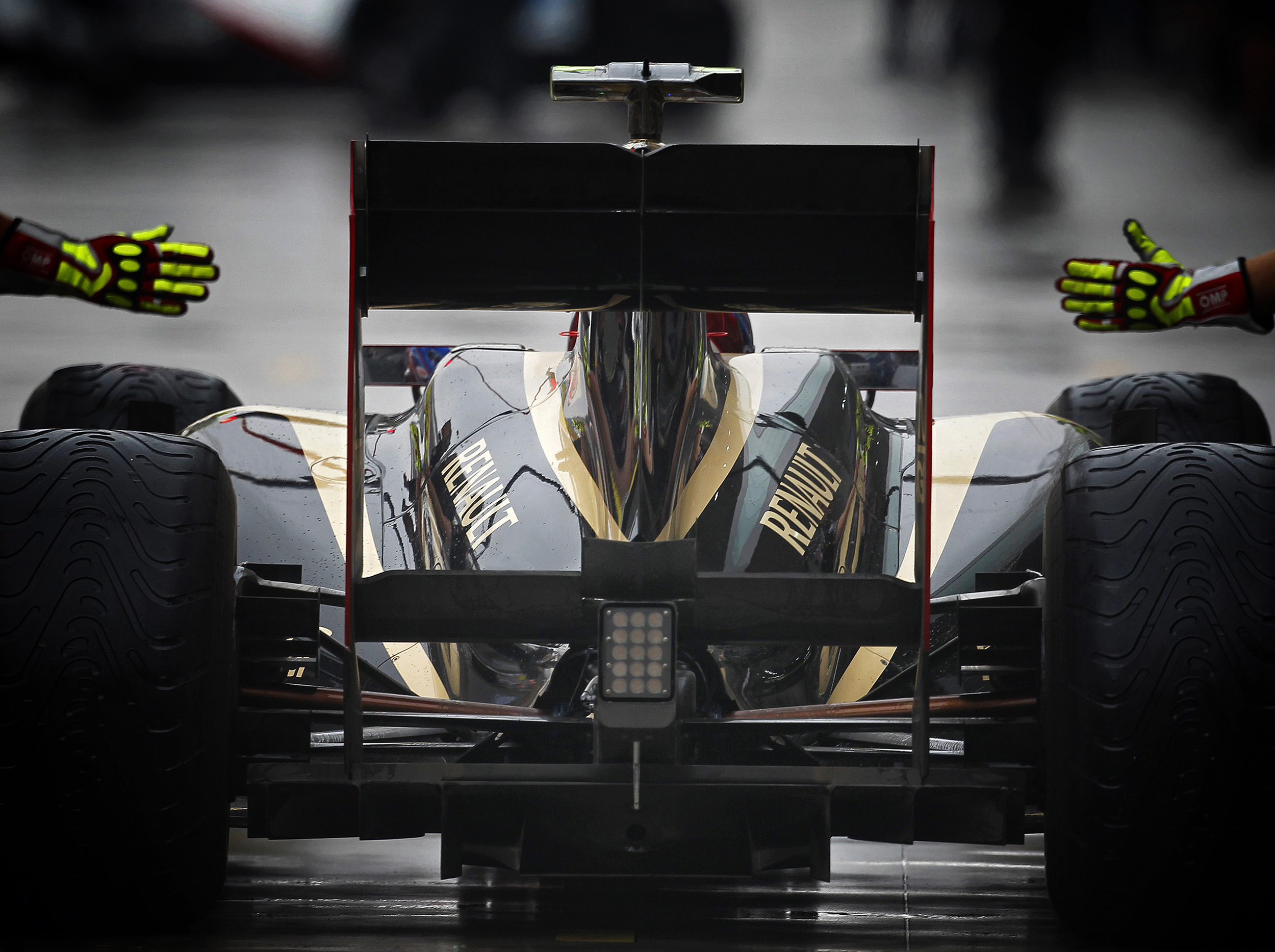
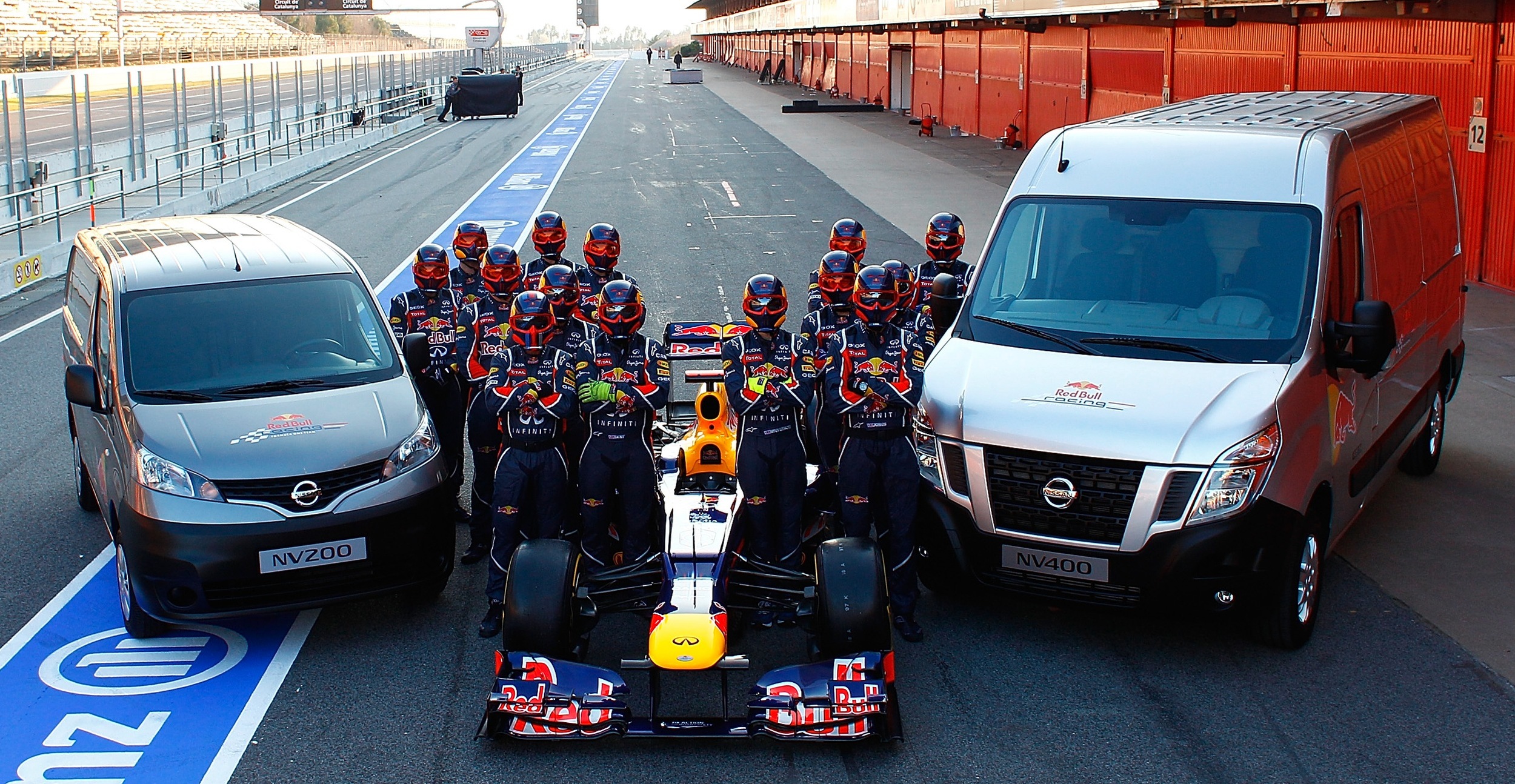
12-time Constructor's Champion Renault, with nearly 40 years in the sport, is an iconic brand in Formula 1. Work continues on finalising the terms to the acquisition of the Lotus F1 team in the 'shortest timeframe possible'. The Lotus F1 Team stood out as the ideal option for Renault having worked together for 15 years. As a full team, Renault will says it will take maximum benefit from its victories, adding 'the payback as an engine supplier proved to be limited'.
Renault has had uninterrupted involvement in Formula 1 for almost 40 years and has taken part in more than 600 grand prix, claiming 168 race wins, 12 Constructors' titles and 11 Drivers' crowns.
"Renault had two options: to come back at 100 percent or leave. After a detailed study, I have decided that Renault will be in Formula 1, starting 2016. The final details supplied by F1's main stakeholders gave us the confidence to accept this new challenge. Our ambition is to win, even if it will take some time," said Carlos Ghosn, Chairman and CEO, Renault.
Meanwhile, Nissan, Infiniti and the Red Bull Racing Formula One team have reached mutual agreements to discontinue the partnership between the two automotive brands and the F1 team at the end of December this year, one year earlier than originally stipulated.
Infiniti and Red Bull Racing started their commercial partnership in 2011 before Infiniti became the title sponsor of the team in 2013.
Coupe, News, Supercars, Convertible




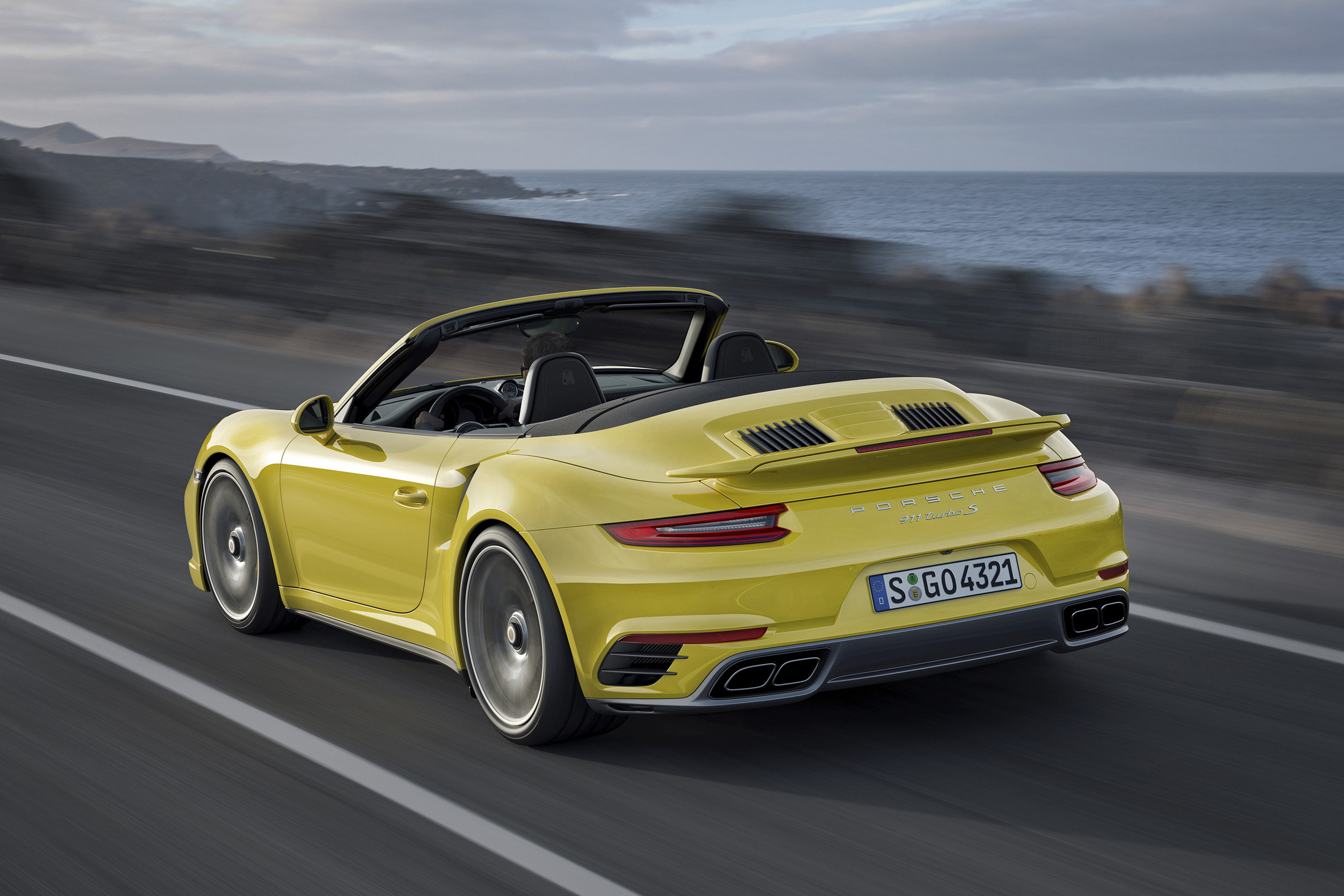

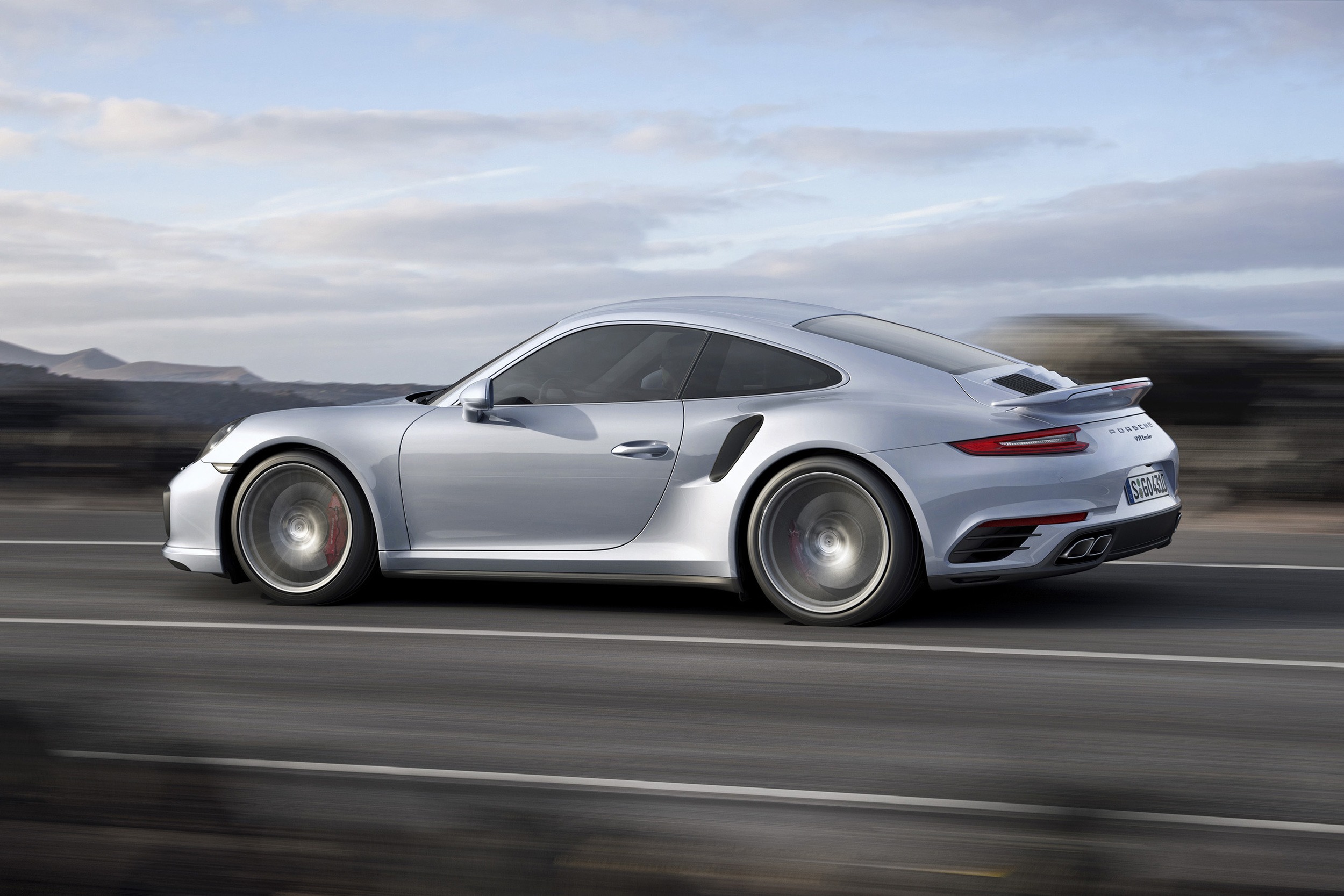

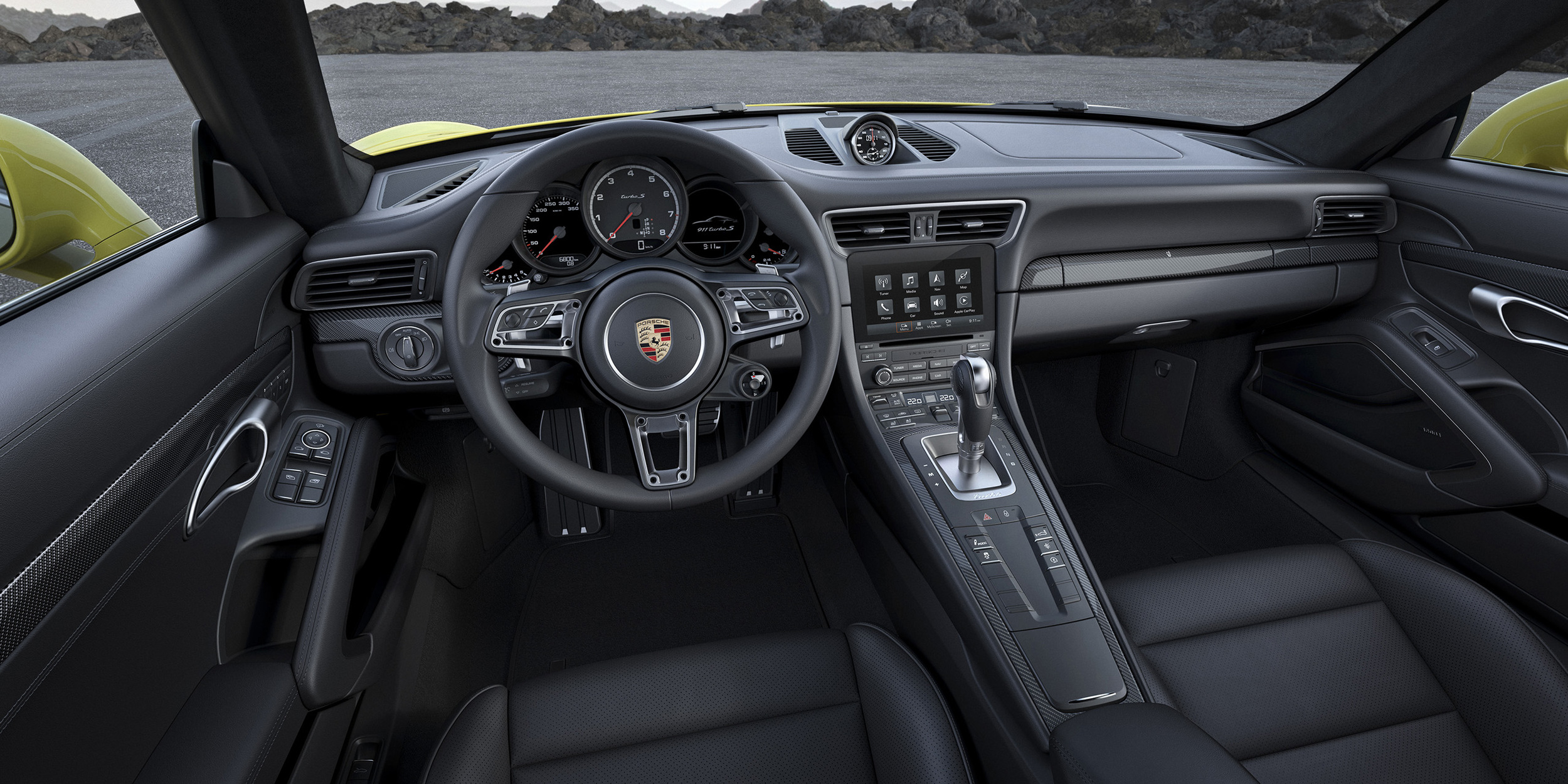
Scheduled to make their world debut at NAIAS in Detroit, the range-topping 911 models now feature 20 hp (15 kW) more power, a 'sharper design and even broader everyday usability'.
The new generation 911 Turbo models adopt 'significant characteristics' borrowed from the latest Carrera models, supplemented by typical 911 Turbo special features, says Porsche. The newly-formed nose with side-mounted airblades and narrow LED front lights with double fillets give the front end a wider look.
In profile, the sports car runs on new 20-inch diameter wheels. On the 911 Turbo S the centre lock wheels now feature seven instead of ten double spokes. Also new are the wheel dimensions for the 911 Turbo: with 9J x 20 rims at the front and 11.5J x 20 rims at the rear, the new wheels are each half an inch wider than previously.
The rear body styling was also 'thoroughly revised' says Porsche with 'eye-catching' three-dimensional style rear lights with four-point brake lights and 'aura-style' illumination, also borrowed from the 911 Carrera series.
The exit openings for the exhaust system at the rear as well as the dual tailpipes were also redesigned as was the grille of the rear engine lid which now features three parts: the right and left sections have longitudinal louvres, and in the middle there is a separate cover for optimised air induction for the engine.
Available in both Coupe and Convertible versions, the twin-turbocharged, 3.8-litre flat-six engine in the 911 Turbo now has an output of 540 hp (397 kW). The 911 Turbo S now develops 580 hp (427 kW) courtesy of new turbochargers with larger compressors.
The engines now also have what is known as a 'dynamic boost function' to 'further raise engine responsiveness in dynamic operation'. The 911 Turbo S Coupe sprints to 62 mph in 2.9 seconds. Its top speed of 205 mph is eight mph higher than before. The 911 Turbo reaches the 62 mph mark in 3.0 seconds, and its top speed is 198 mph - three mph faster than the previous model. At the same time, fuel consumption has been reduced further with the coupes now returning 31 mpg, and the convertibles 30.4 mpg. This represents a gain of approximately two miles per gallon for all versions which has been delivered via 'further advances' in electronic engine and transmission management with revised gear change mappings.
The new 911 Turbo and Turbo S now feature, as standard, a new GT sport steering wheel - 360 mm in diameter and with a design adopted from the 918 Spyder. It includes a 'Mode Switch' - a rotary ring with stepped positions that is used to select one of the four modes Normal, Sport, Sport Plus or Individual. Another new feature of the Sport Chrono Package is the Sport Response button at the centre of the mode switch. Inspired by motor sport, at the push of a button it pre-conditions the engine and transmission for optimum responsiveness. In this state, the vehicle can produce instantaneous acceleration for up to 20 seconds, such as during an overtaking manoeuvre. An indicator in the instrument cluster in the form of a running timer shows the driver the elapsed time.
On sale now, prices for the new Porsche 911 Turbo start at £126,925 OTR or £135,766 OTR for the 911 Turbo Cabriolet. The 911 Turbo S costs £145,773 OTR and £154,614 OTR for the 911 Turbo S Cabriolet.
First customer deliveries are expected at the end of January 2016.
Hybrid, News, Coupe, Diesel, Supercars
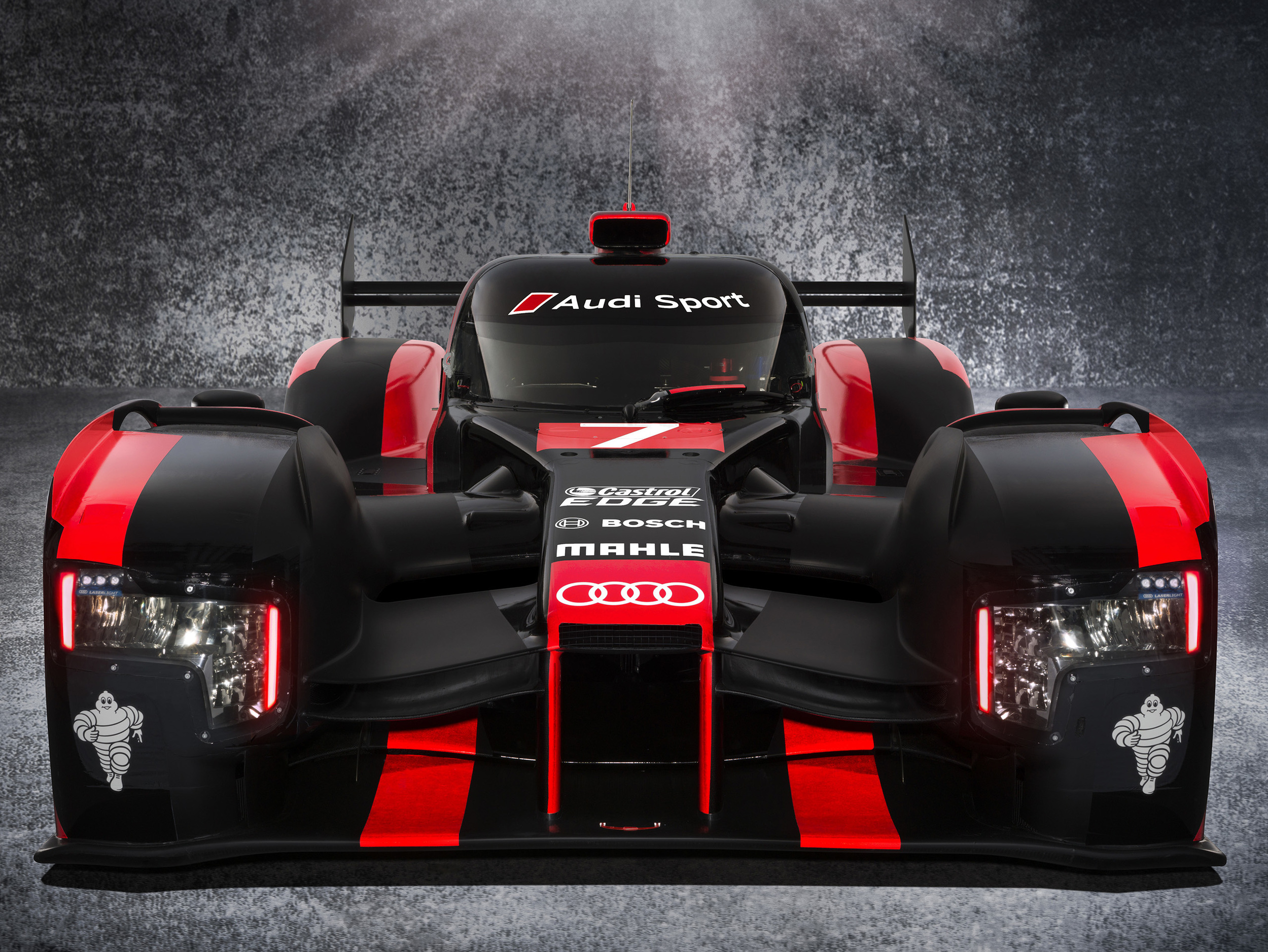
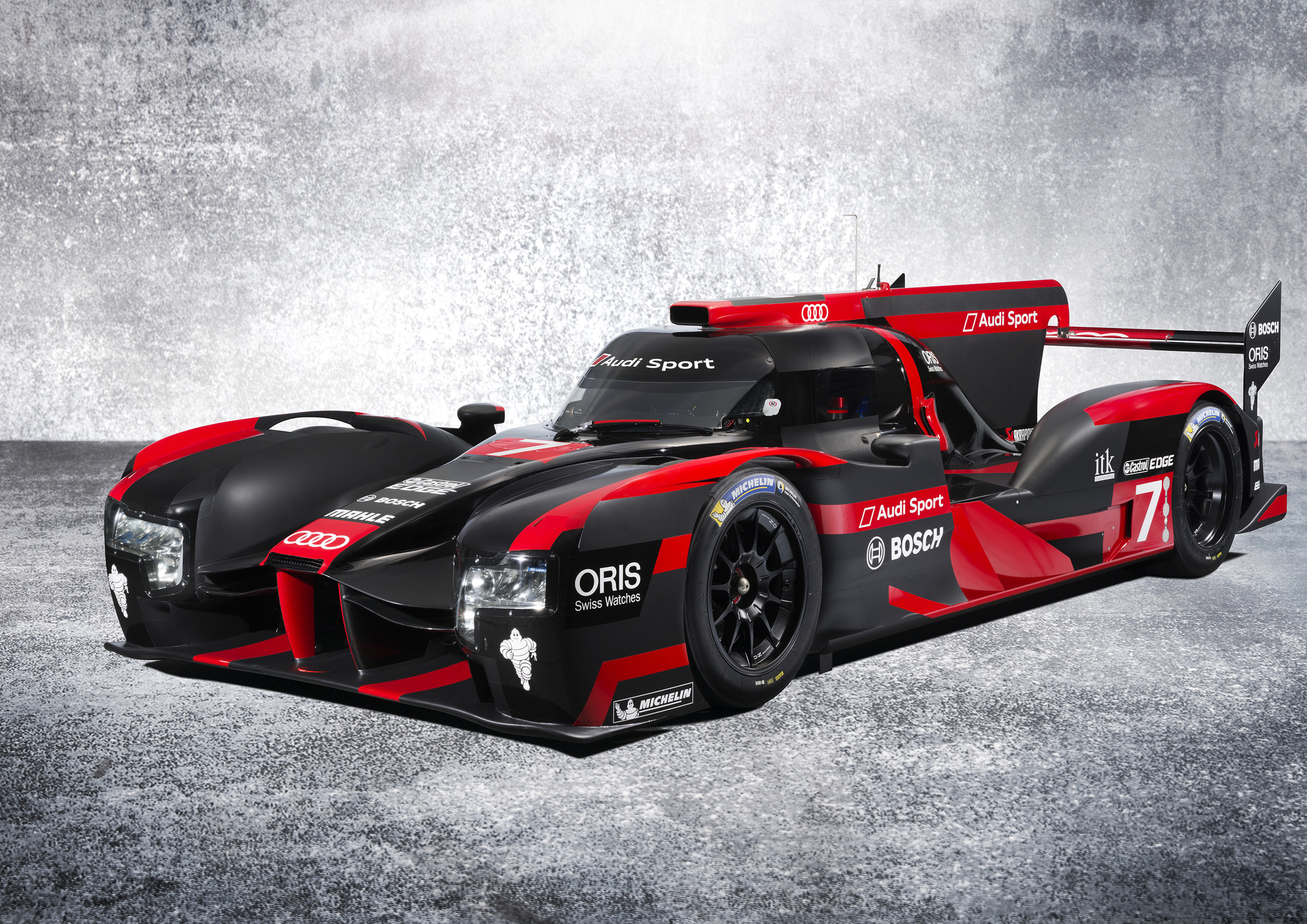
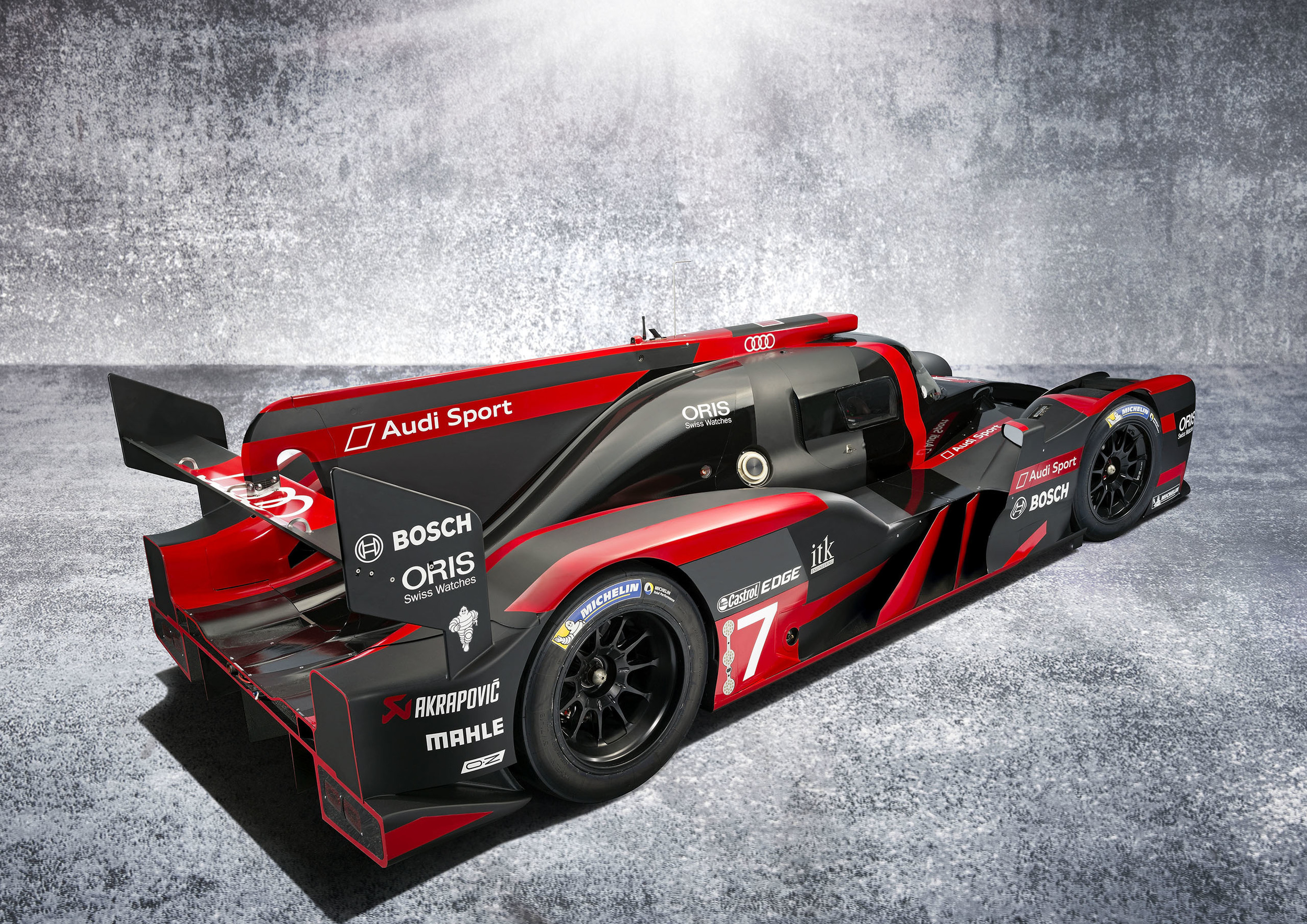
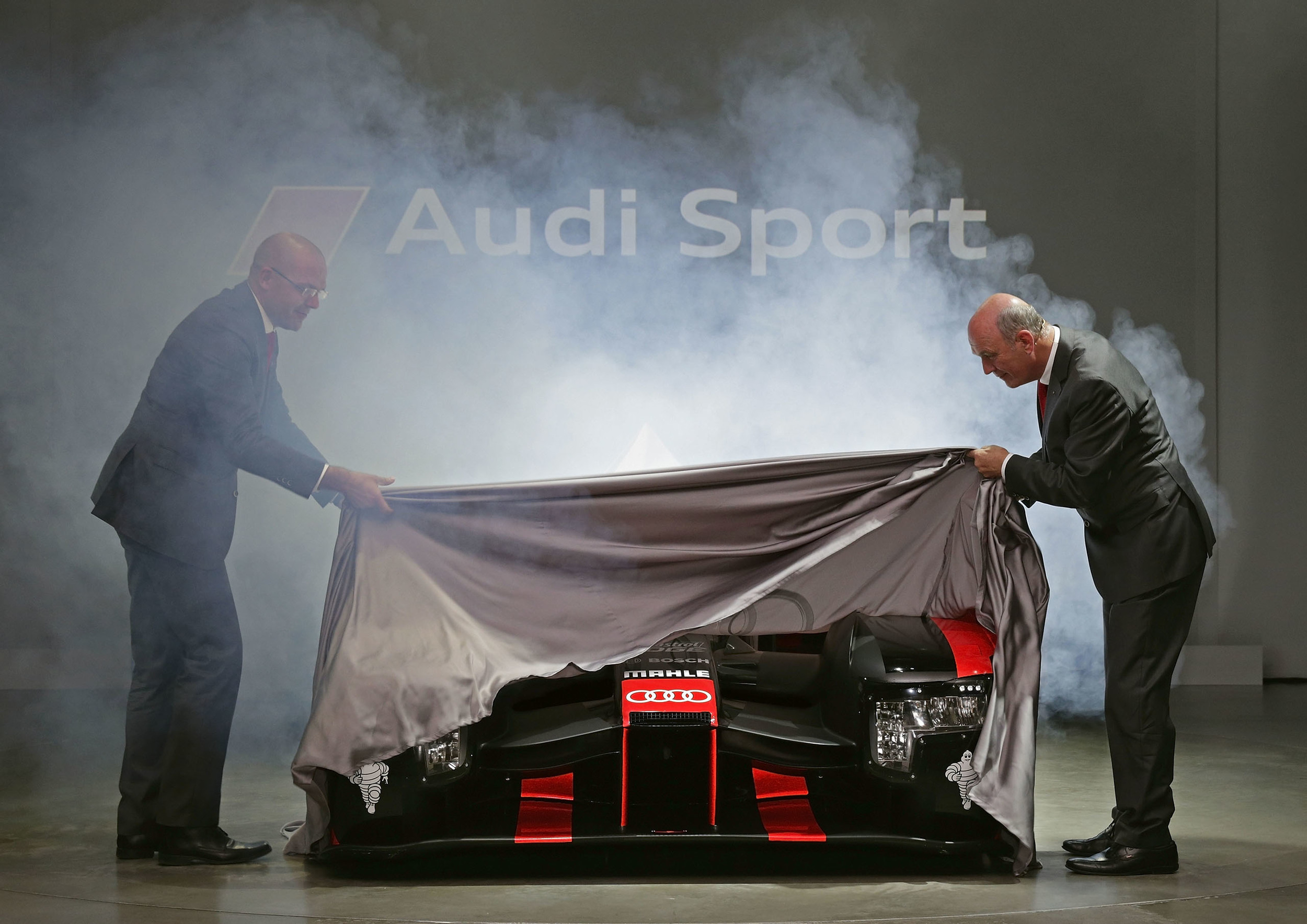
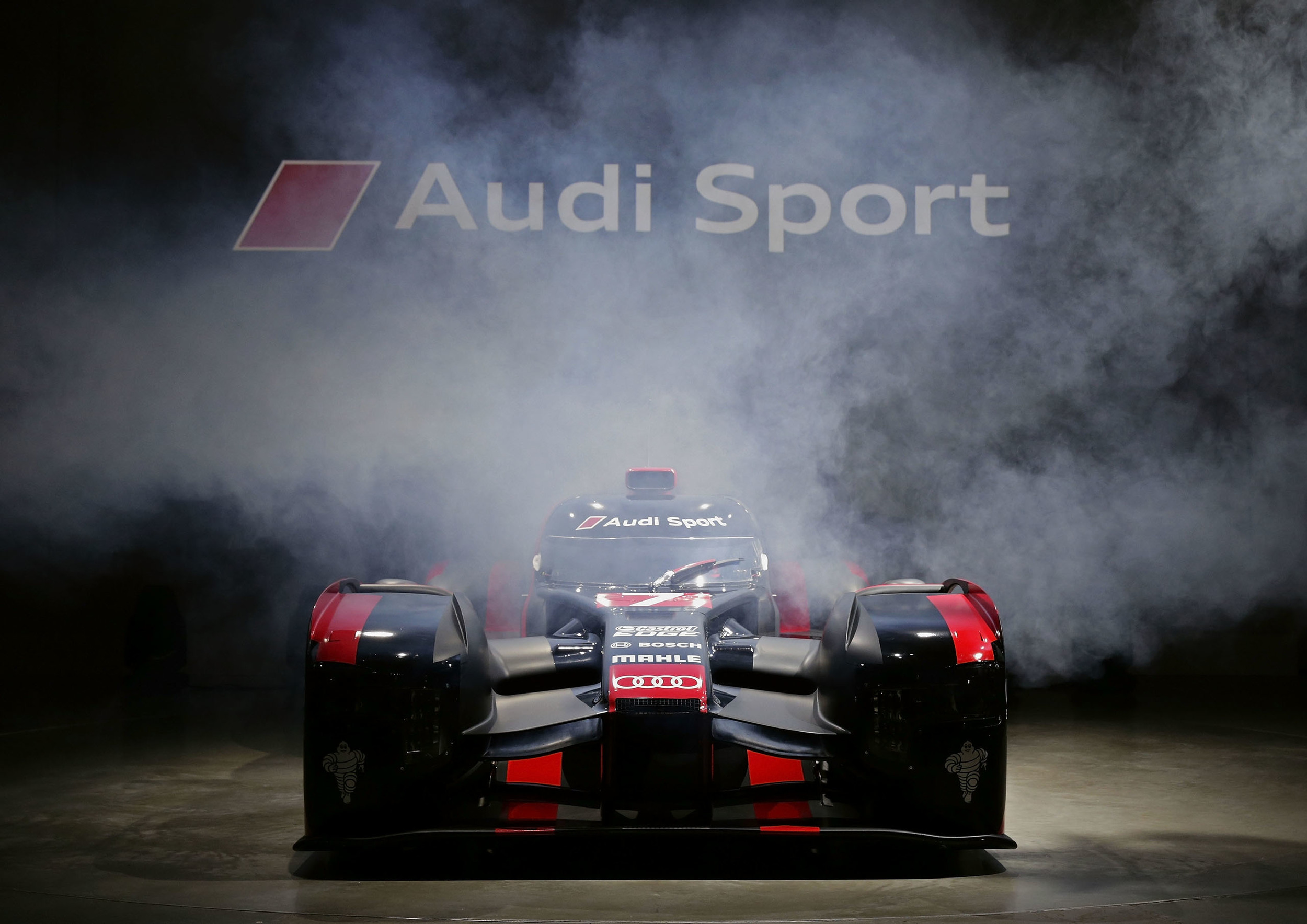
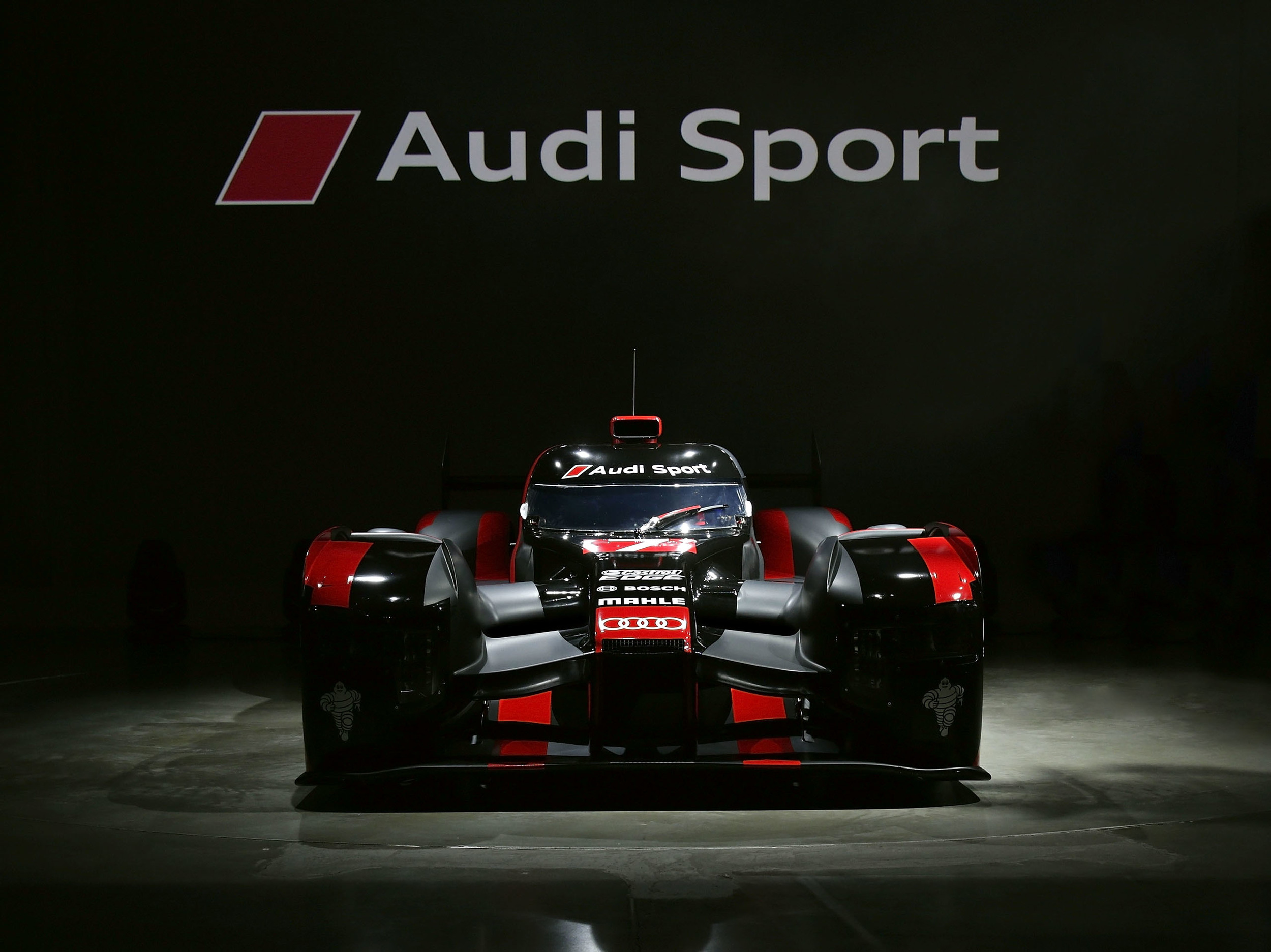
The most powerful and efficient race car Audi has ever built has been 'fundamentally re-designed' by Audi Sport. Featuring 'innovative aerodynamics' representing the next stage in lightweight design and a modified hybrid system with lithium-ion batteries for energy storage, there is also an efficiency-optimised TDI engine.
"With our new Audi R18, we're setting a clear signal: Audi continues to put the pedal to the metal in motorsport, deliberately relying on TDI - the world's most successful automotive efficiency technology - at Le Mans," says Head of Audi Motorsport Dr. Wolfgang Ullrich.
In the 2016 FIA World Endurance Championship (WEC) that will start at Silverstone (Great Britain) on April 17, Audi Sport Team Joest will be fielding two new Audi R18 cars. In the interest of maximum cost efficiency, Audi and its Group sister brand Porsche, have both agreed to each compete in the Le Mans 24 Hours, the WEC season's pinnacle event, with only two instead of the most recent three cars.
"We're proud about being able to again represent the Audi brand in 2016 with such an extensive commitment in motorsport," says Dr. Wolfgang Ullrich. "The new Audi R18 marks a major step that we're expecting a lot of at Le Mans and in the WEC. In the DTM, we already had the strongest car in 2015. That's what we'd like to build upon. Plus, the high demand for the new Audi R8 LMS is equally gratifying as the many young talents that are interested in the Audi Sport TT Cup."

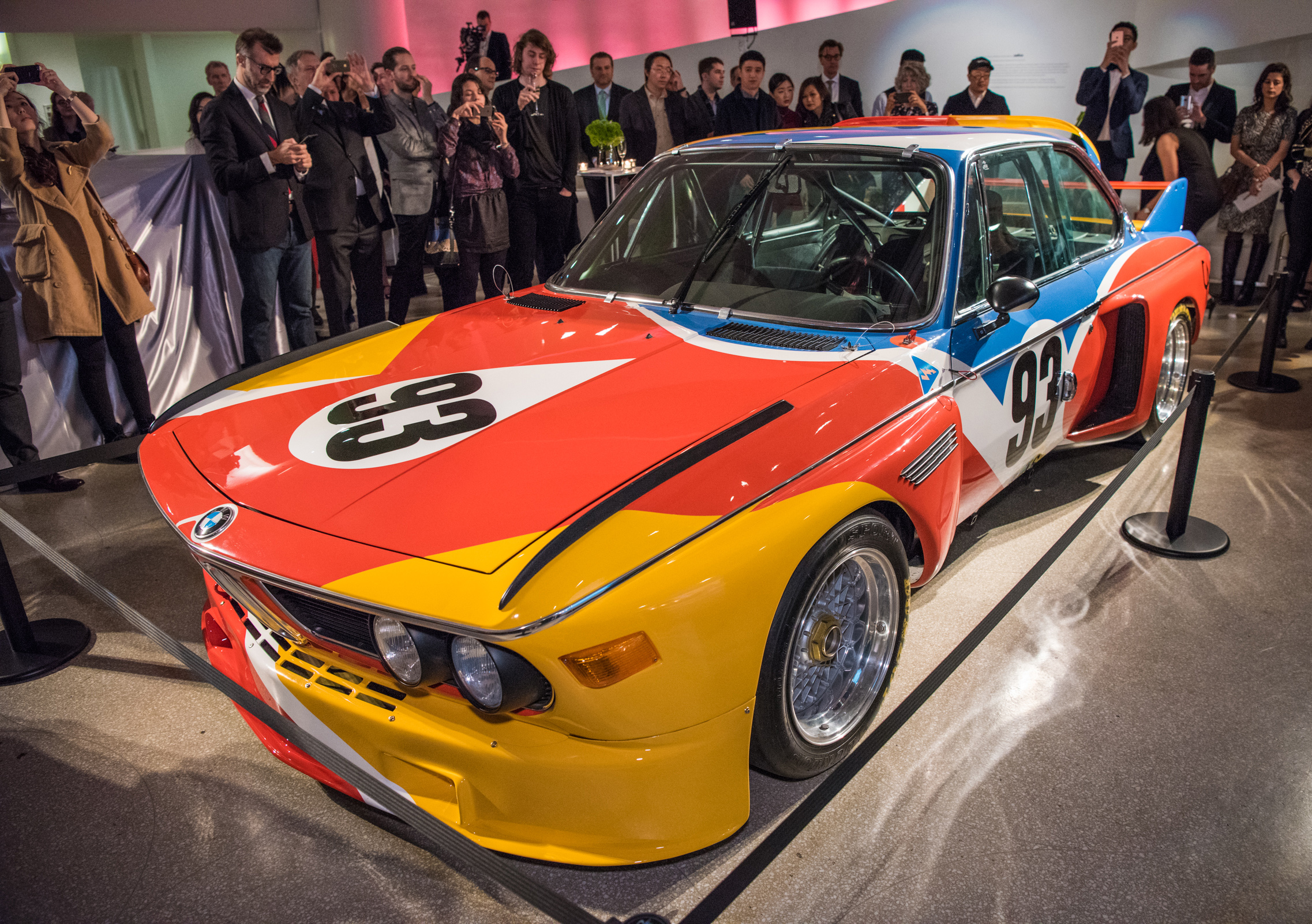
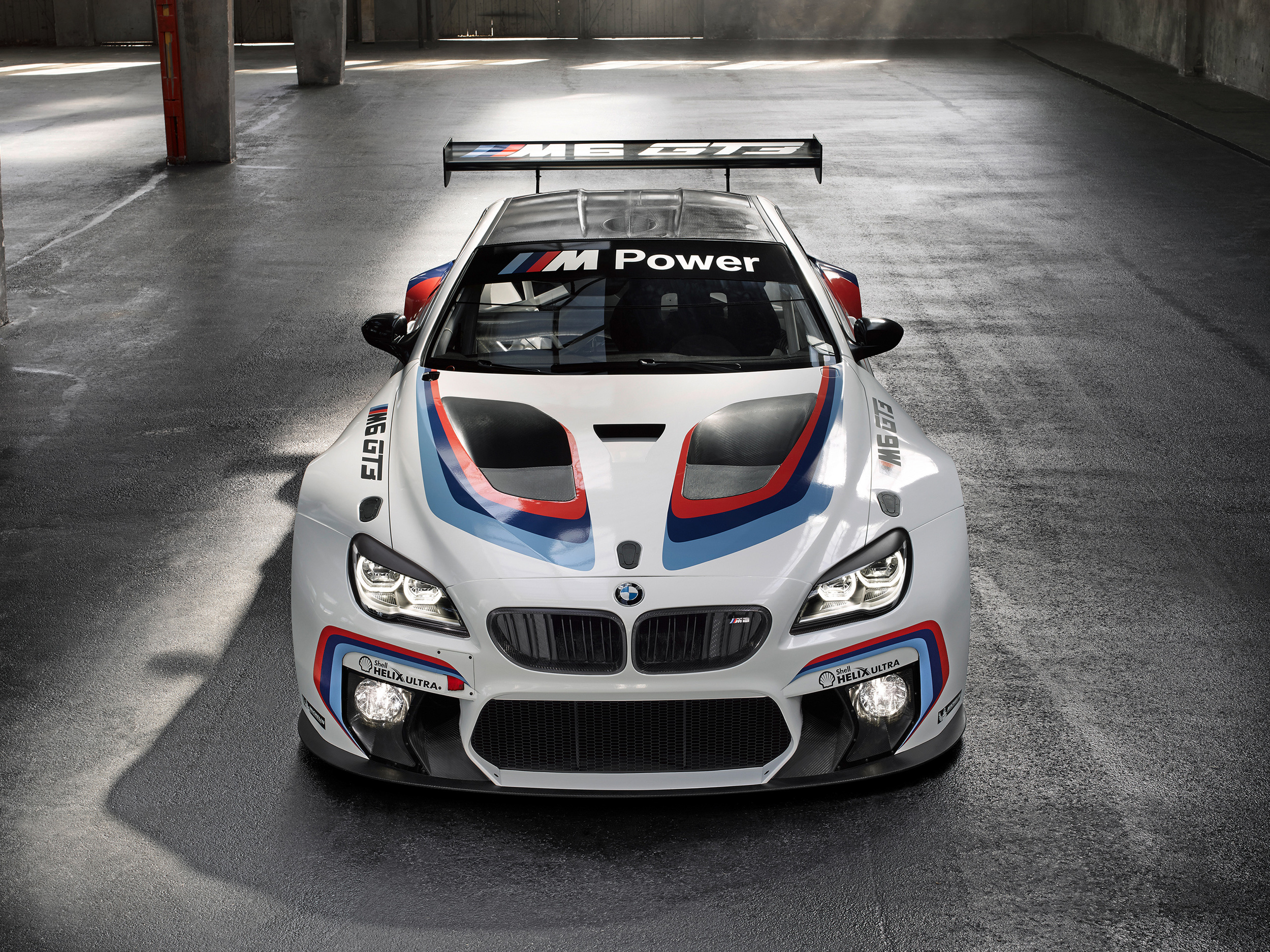
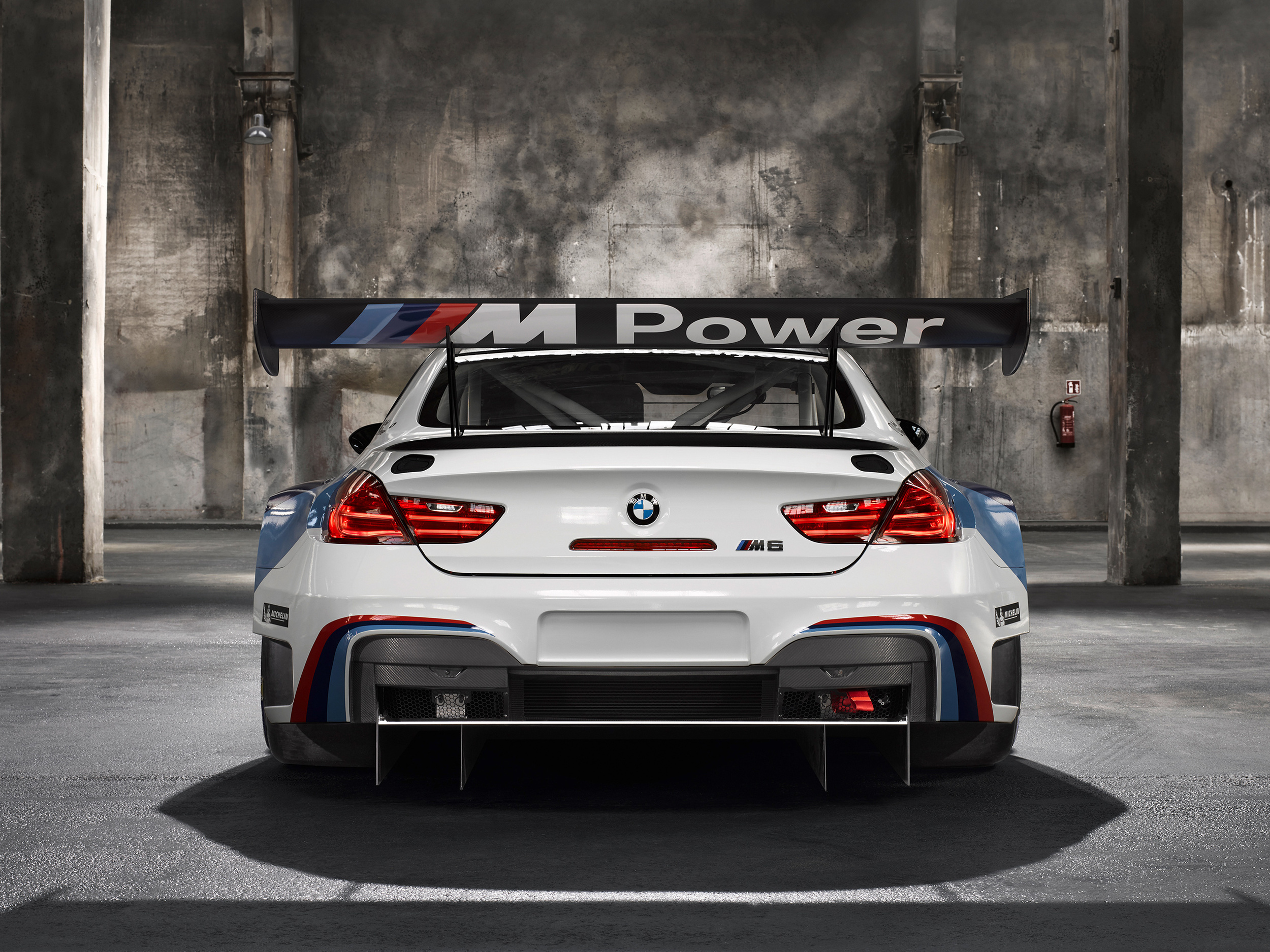
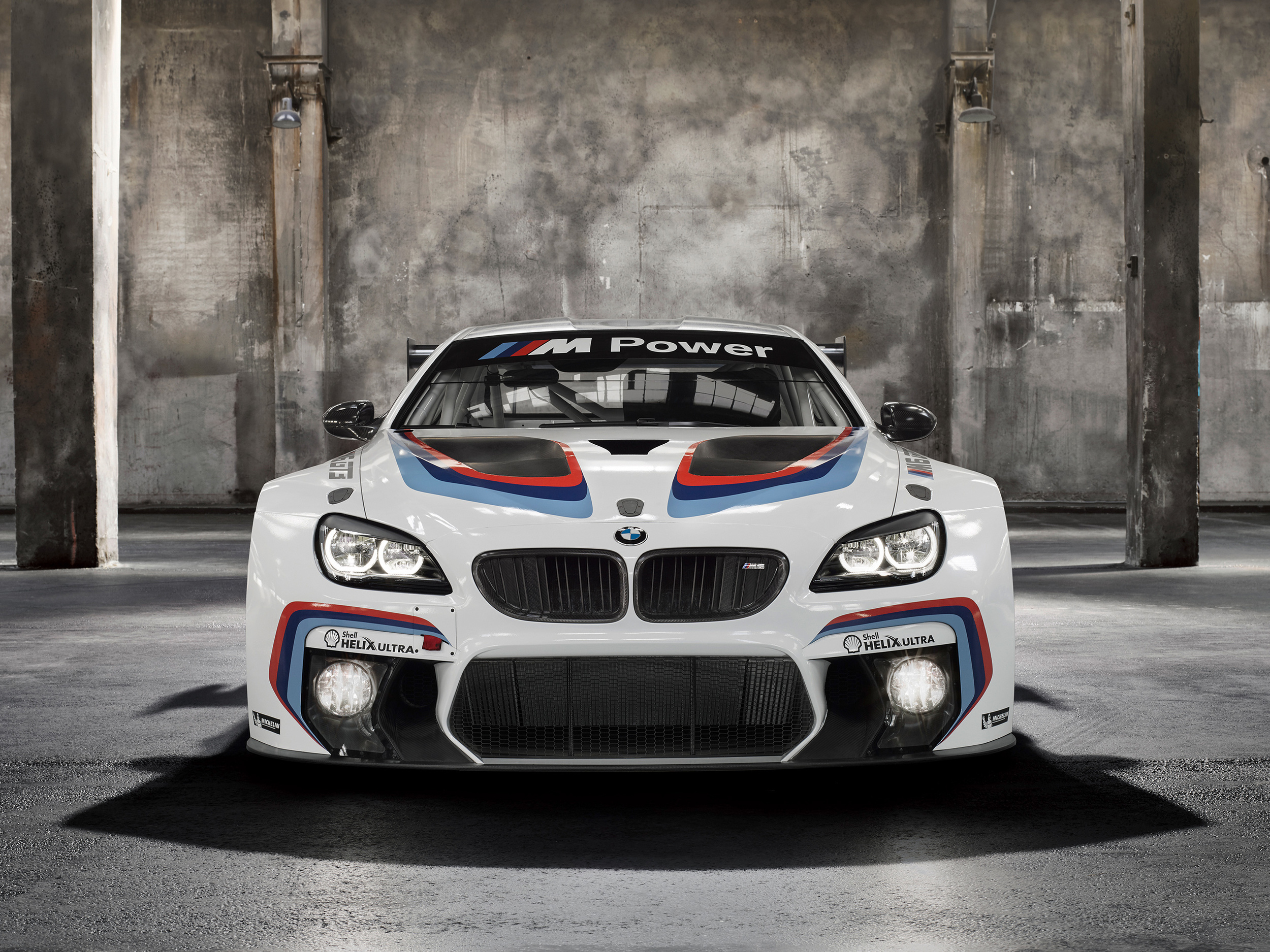
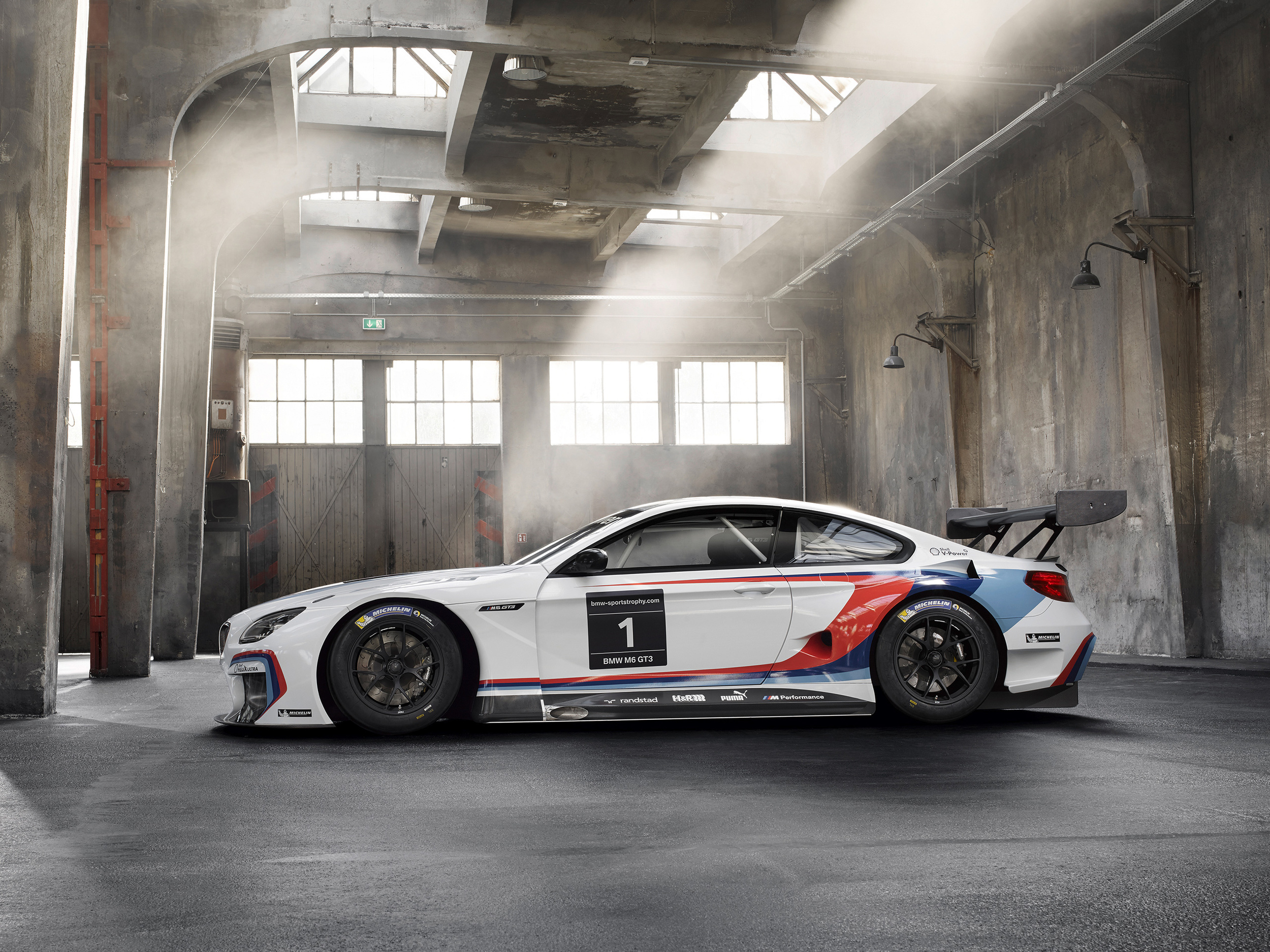
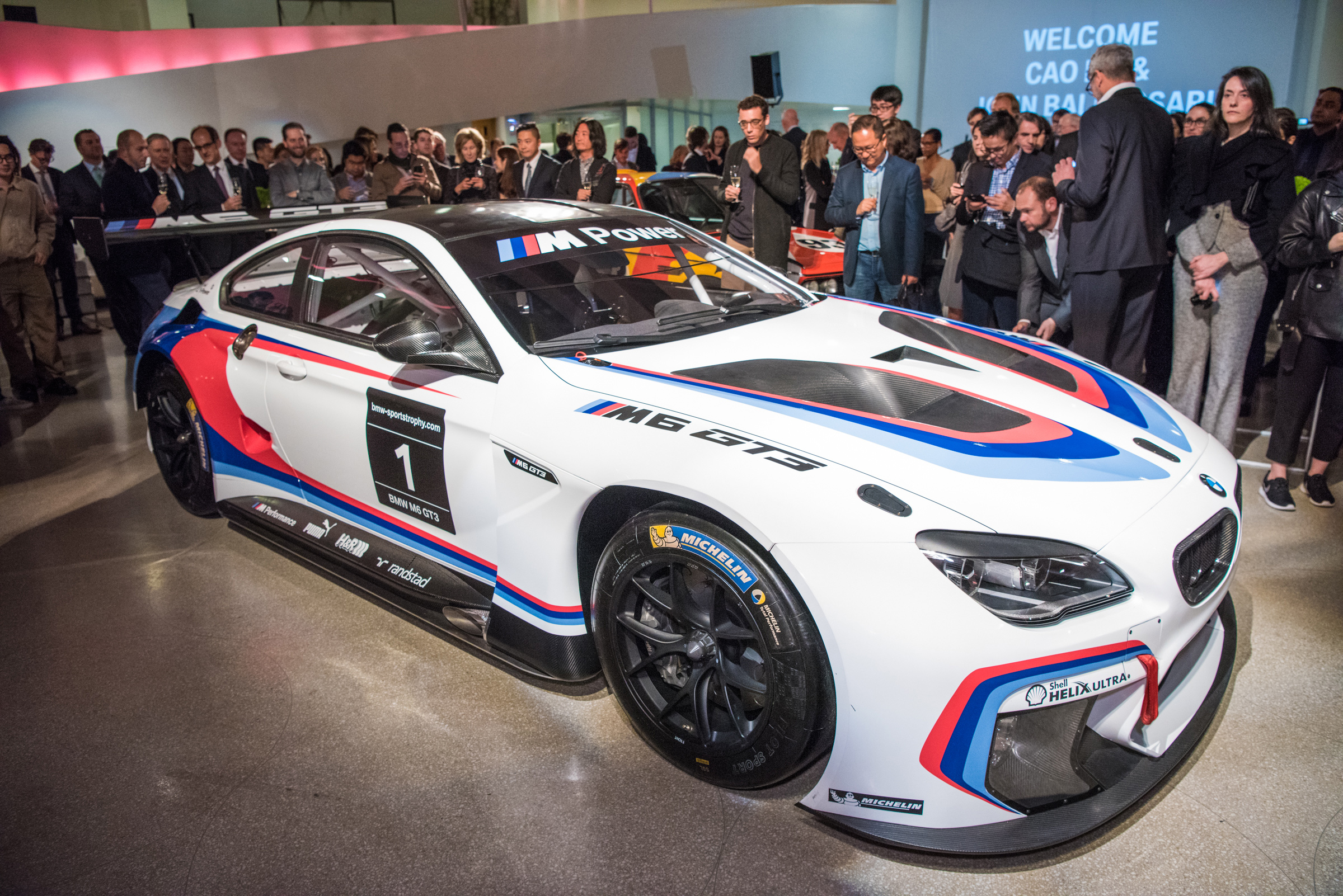

Fei and Baldessari are each due to create unique versions of the BMW M6 GT3 in the coming year, ready for presentations in museums in 2017, before appearing in action on the racetrack.
The BMW M6 GT3 spearheads the range of cars available to the BMW customer racing programme. It is powered by a 4.4-litre V8 engine with M TwinPower Turbo technology, which has been modified slightly for use in motor racing. The powertrain has dry sump lubrication and generates up to 585hp - with the whole car weighing less than 1,300kg.
BMW Board Member, Ian Robertson announced the collaboration of the two artists at the Guggenheim Museum in New York. 'The 40th anniversary of the BMW Art Collection is a time to look ahead. The collection is the embodiment of the cultural commitment of the BMW Group - its vehicles stand for the combination of cutting-edge technology and inspiring art.
Cao Fei dubbed by BMW as one of the most promising and Chinese artists of her generation; expressed her excitement in joining the ranks of renowned artists such as Roy Lichtenstein, Andy Warhol and David Hockney. "I'm thrilled to be able to join the magnificent list of BMW Art Car artists. Acceleration, a concept that reminds me of my desire for speed as a runner during the Young Pioneers days, is deeply connected to the entangled contemporary relationships between velocity, energy, and the country."
John Baldessari, described as 'a great pioneer and godfather of an entire art scene in LA and beyond' told the press how he was honoured to have many of his respected peers recommend him as a BMW Art Car artist. 'Creating art that exists outside of a museum is important to me, and should be a goal for all artists. This will definitely be my fastest artwork yet.'
Since 1975 artists from the world over have been creating Art Cars on the basis of contemporary BMW automobiles. 'It is fantastic that the tradition of the BMW Art Car series will be continued with the BMW M6 GT3. Motorsport and the BMW Art Cars have always been very closely linked. Our racing cars in the special designs of well-known artists have cult status among the general public. I am convinced that the same will be true of the works by Cao Fei and John Baldessari. Naturally we want to fight for wins with the BMW M6 GT3 Art Cars. This combination of art and performance on the racetrack really is unique.' said Jens Marquardt, BMW Motorsport Director.

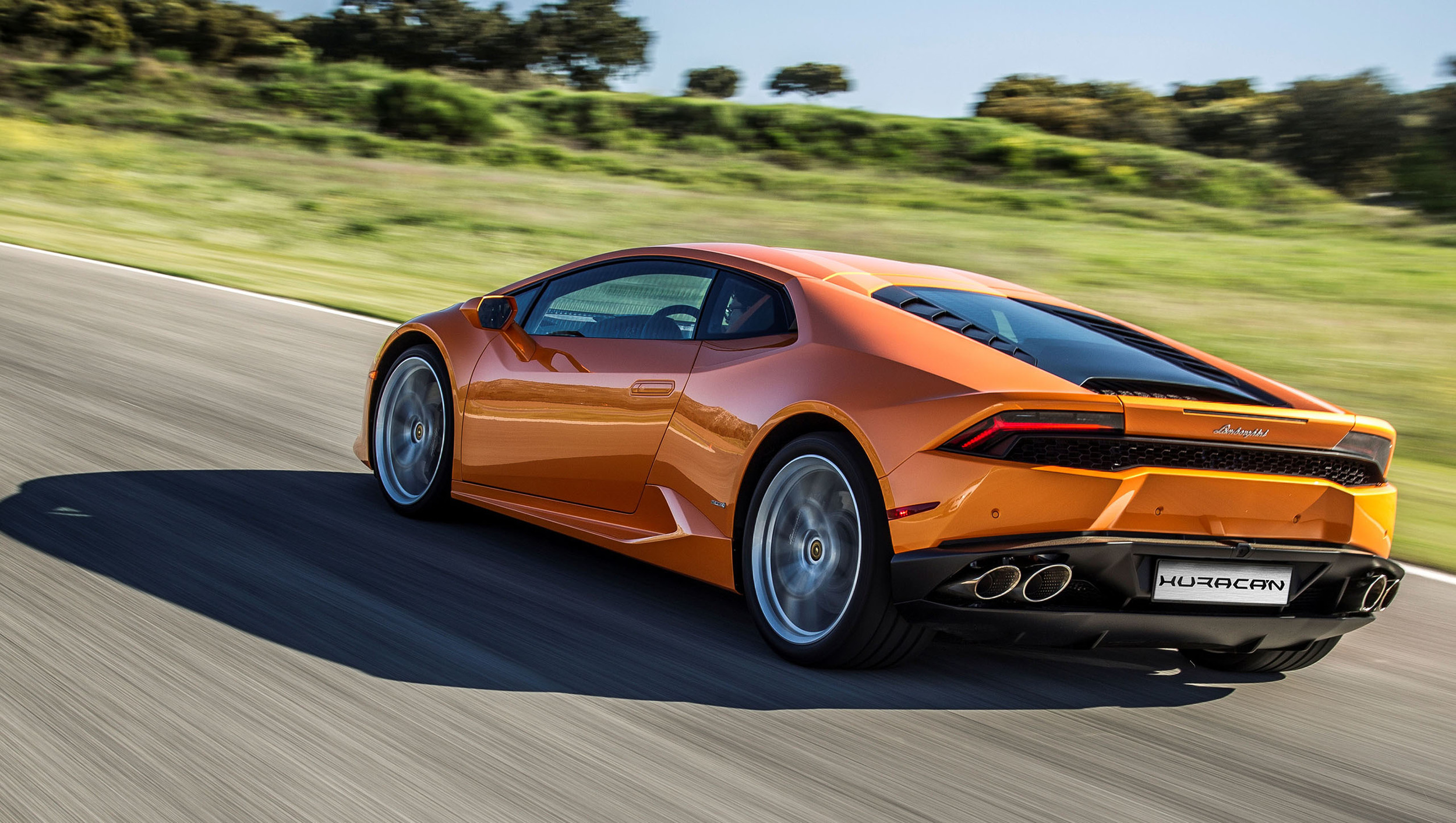
Focusing on efficiency, drivability and luxury the new updates have already been installed. As standard, both the Huracan coupe and newly-launched Spyder version include cylinder deactivation to improve engine efficiency; the first time this function is included in a naturally aspirated V10 engine. When full engine capacity is not required, five of the ten cylinders are temporarily deactivated by switching off one cylinder bank. When the driver accelerates, the system switches back instantaneously to ten-cylinder mode, while being 'virtually impossible' to detect by the driver, says Lamborghini. This feature reduces fuel consumption and CO2 to 283 g/km.
A fine-tuning of the electronically controlled 4WD system also provides a neutral and 'even more' improved driving behaviour, particularly in STRADA (Road) mode.
The trim colour choice has been significantly enlarged while interior refinements, as standard, now includes extra leather on the door handles and the upper parts of the centre console, while air vents are now painted in an exclusive matt black.
Lamborghini 'Ad Personam' - the brand's customisation program, has also added the availability of interior personalisation, as well as exterior options including heritage colours and matt paints. The options program has been further extended with new options available including Lamborghini's Sensonum audio system. The system delivers 390 Watts RMS, with a ten-channel amplifier and a range of ten loudspeakers in hexagonal-shaped grilles and the Sensonum badge.
Lamborghini's optional sports exhaust system, which can be specified with a style package for high gloss black tailpipes, is now available in all markets worldwide. New LED lighting in the engine compartment can be combined with the optional transparent engine bonnet and carbon fibre engine compartment. Cruise Control can be specified, and a travel pack provides additional storage nets front and rear, an additional 12V lighter and cupholders.

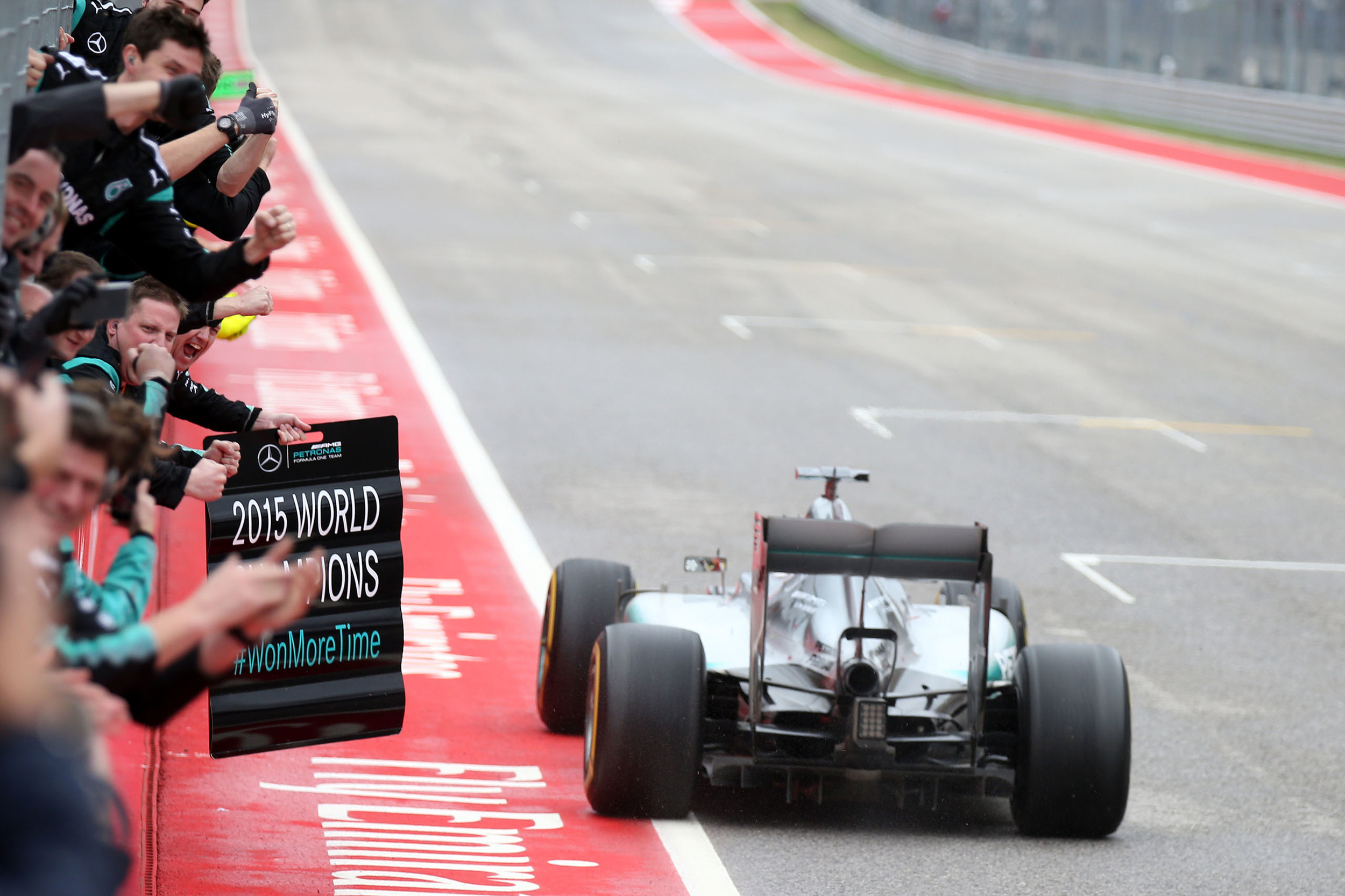
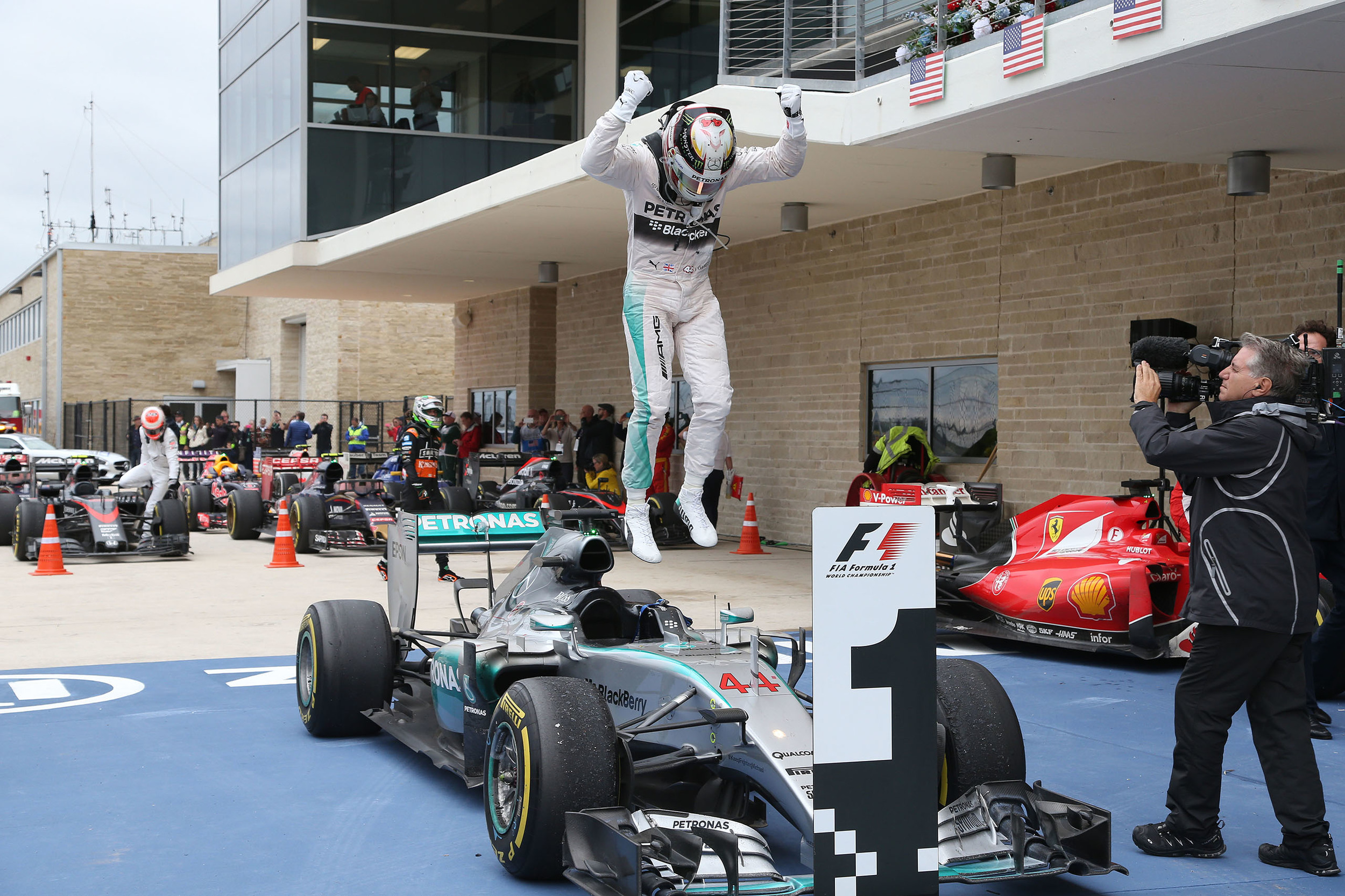
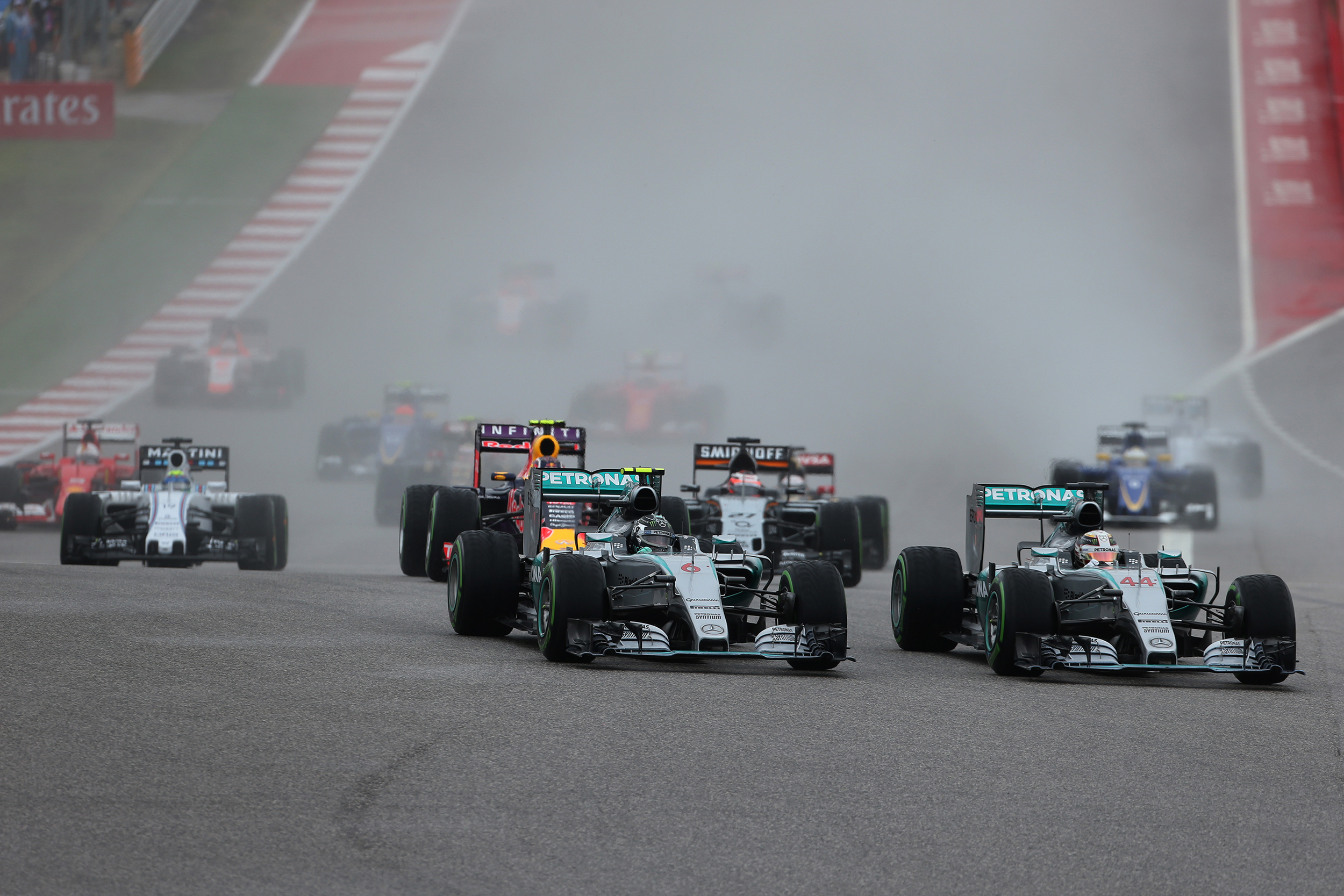

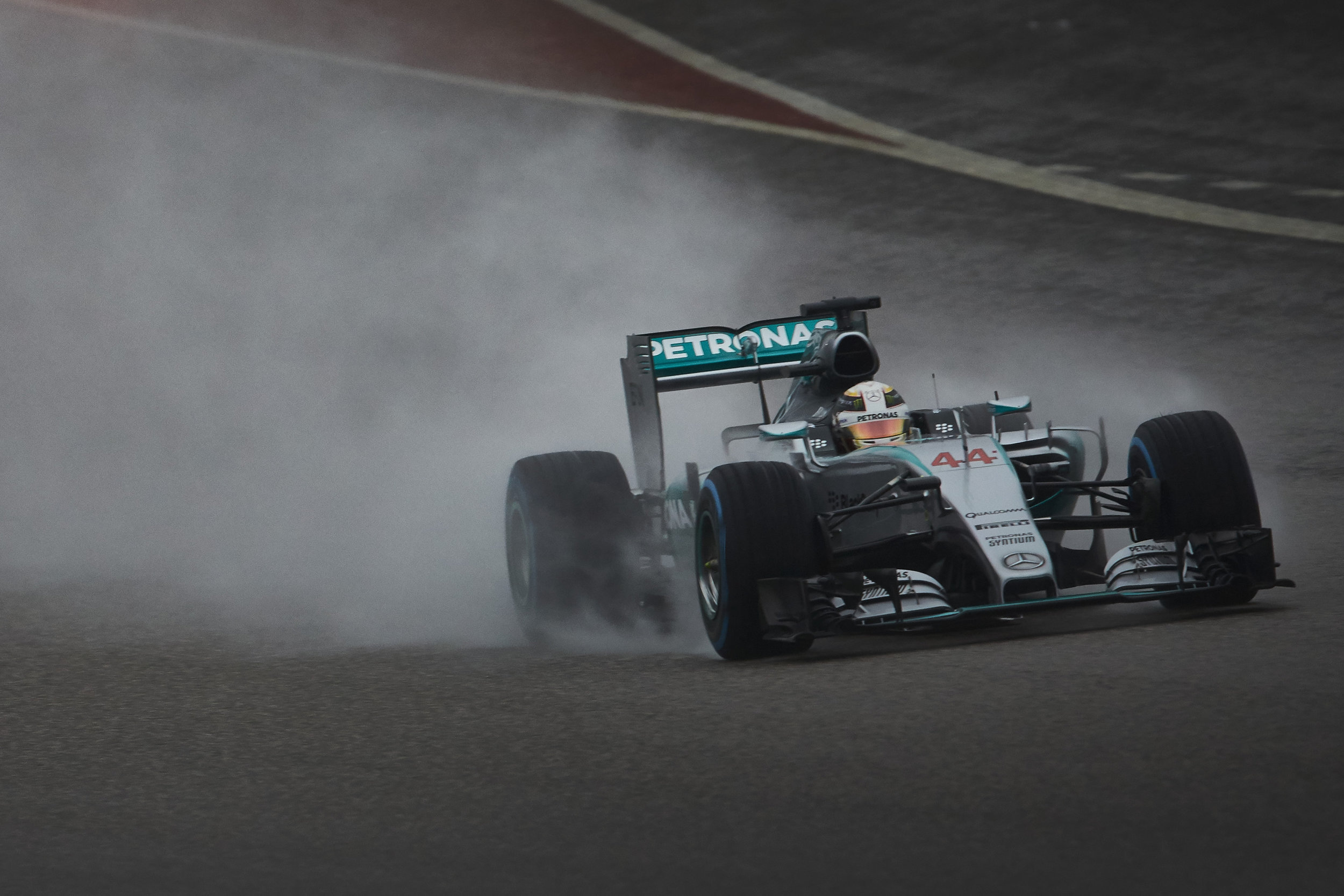


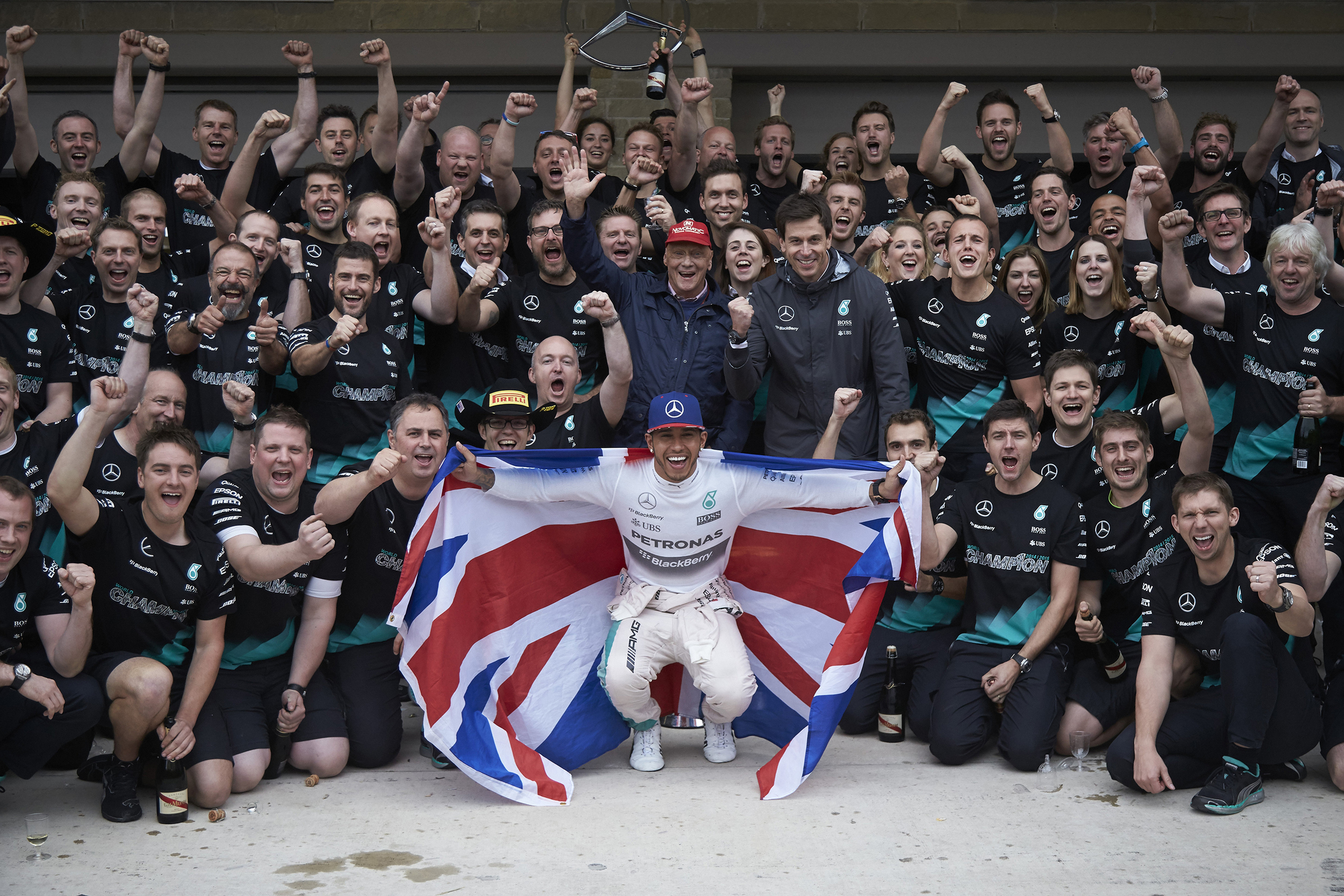
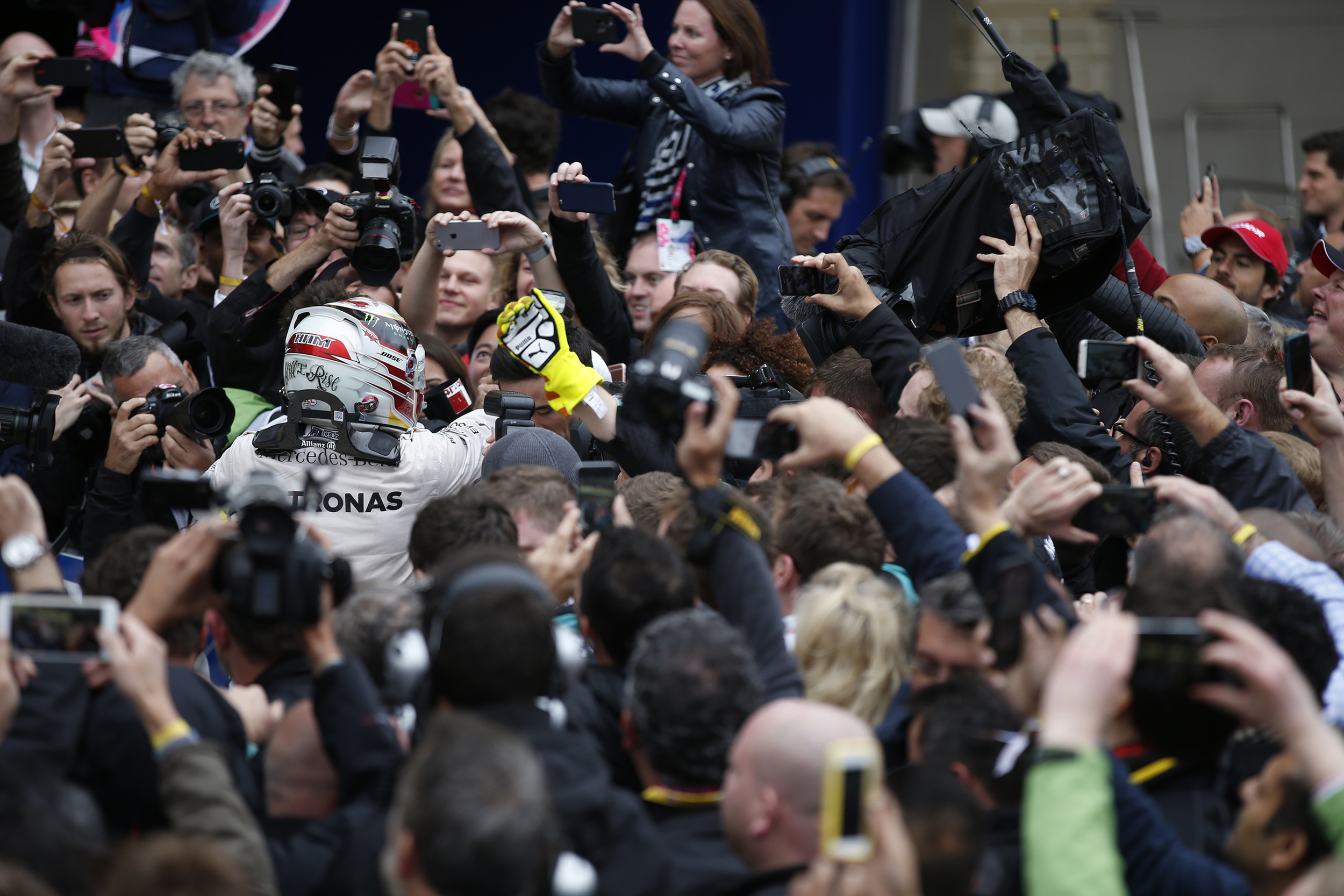
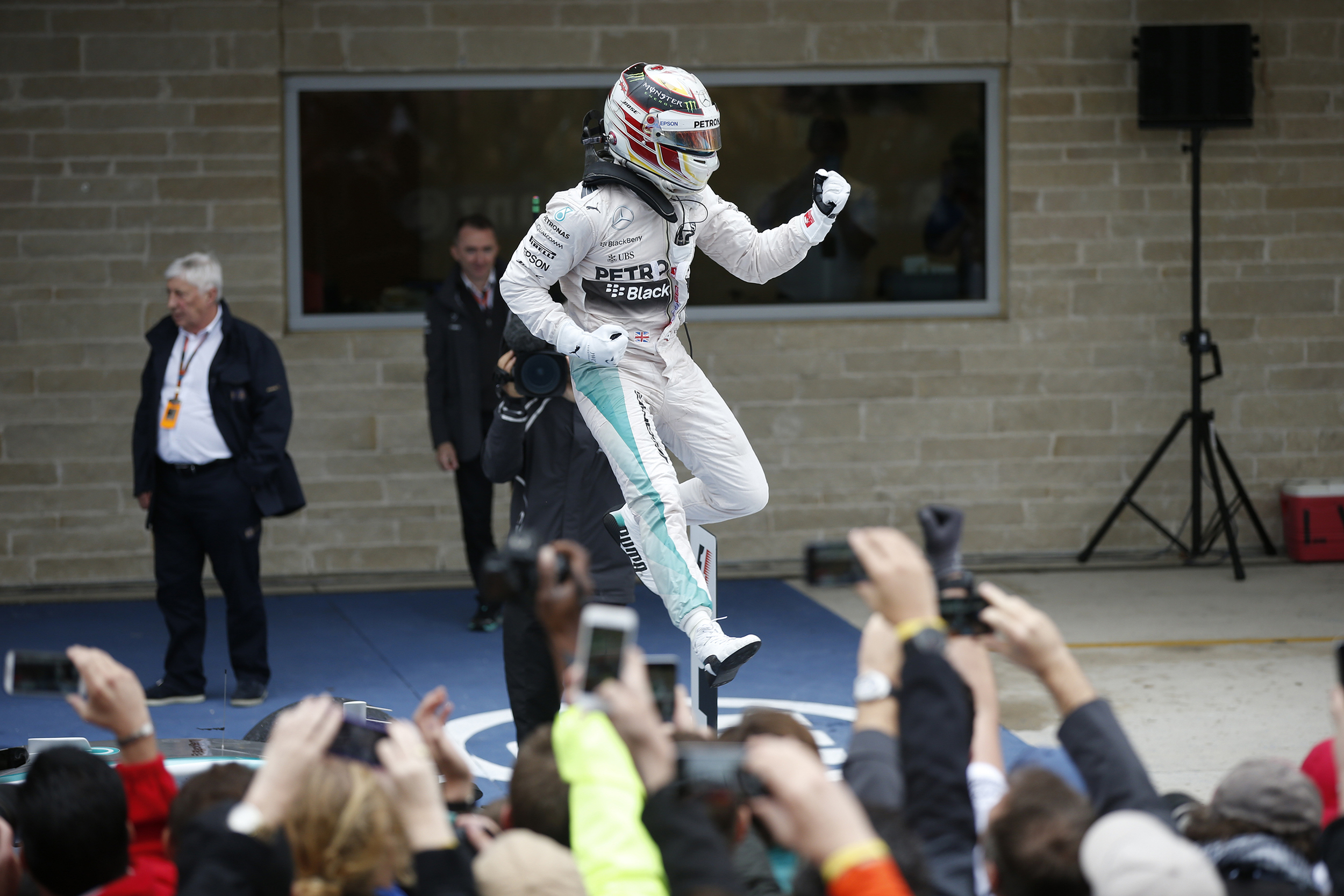
Taking victory in a dramatic United States Grand Prix, team-mate Nico Rosberg finished second and Sebastian Vettel third in a race weekend that featured extreme rain, a curtailed qualifying and plenty of safety cars.
Hamilton took his 10th win of the season, the 43rd of his Formula One career en route to becoming only the second British driver after Sir Jackie Stewart to be a triple World Champion and is now also the only Briton to successfully defend his crown.
With just 10 laps to go and running in second place behind his team-mate, Hamilton had fresher tyres - having just pitted under yet another safety car, and was able to pressure Rosberg in to making a mistake. It was the lifeline the British driver needed and he was able to capitalise, taking the lead on lap 48 of 56. Hamilton saw the car home, winning the race and sealing the Championship with it.
Hamilton said: "It's an overwhelming moment. The race today was really amazing and anything could have happened. The last 10 - 15 laps were extraordinary - it was just a crazy, crazy race. I was in the lead, then I was fourth and the conditions were really tricky. Nico was driving really well, too. All the way through, I was thinking; "The Championship is there somewhere.. how can I get it?" It was so close I could smell it and there was never a moment I didn't believe I could do it."
The British driver paid tribute to his hero Ayrton Senna: "It's just incredible to equal Ayrton, too. My target was always three titles as he was the one who inspired me. There is no one I want to equal now - I just want to carry on as far and long as I can."
Mexico is the next race for Hamilton and co, returning to the Autodromo Hermanos Rodriguez circuit after a 23 year absence.
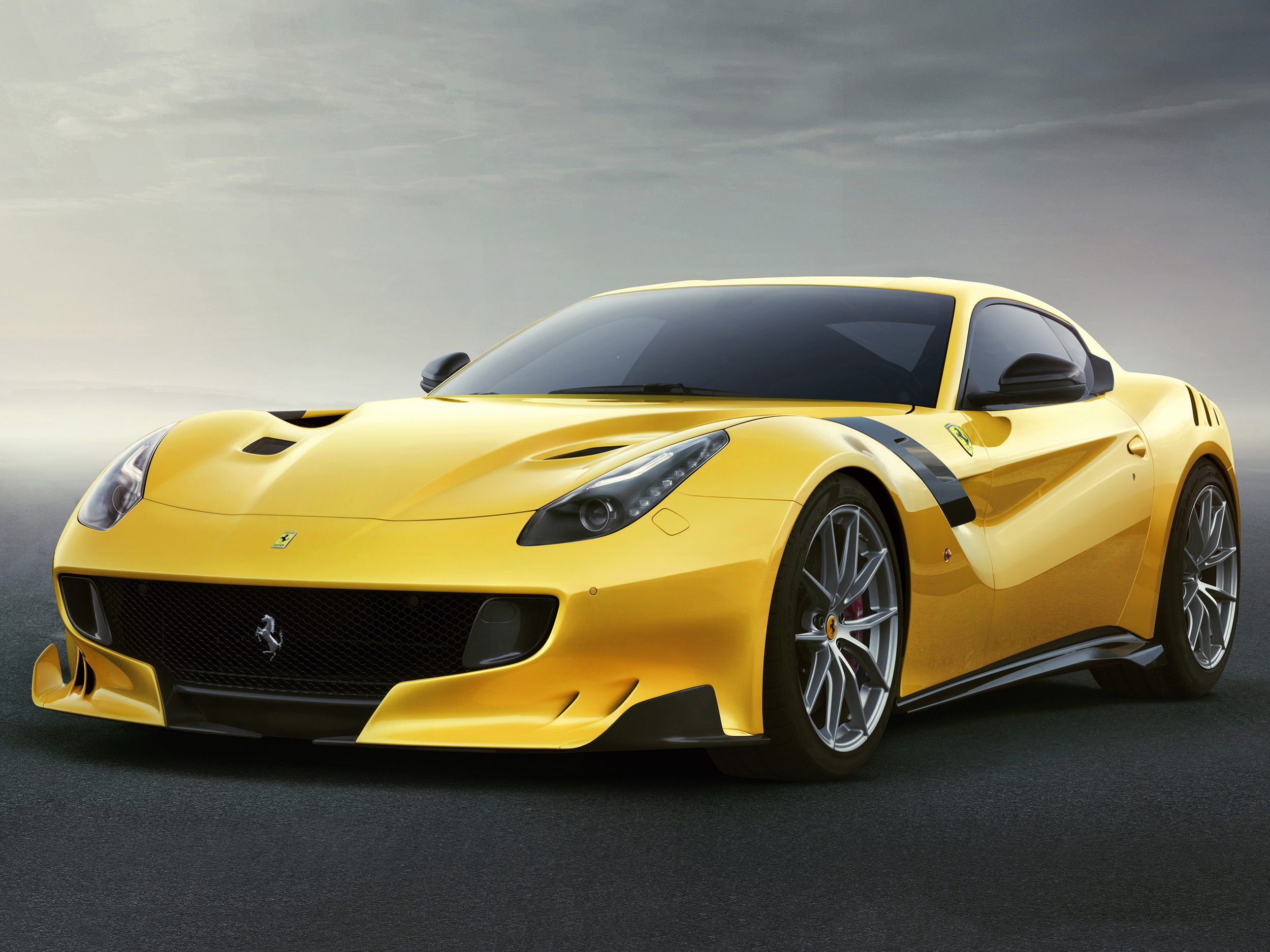


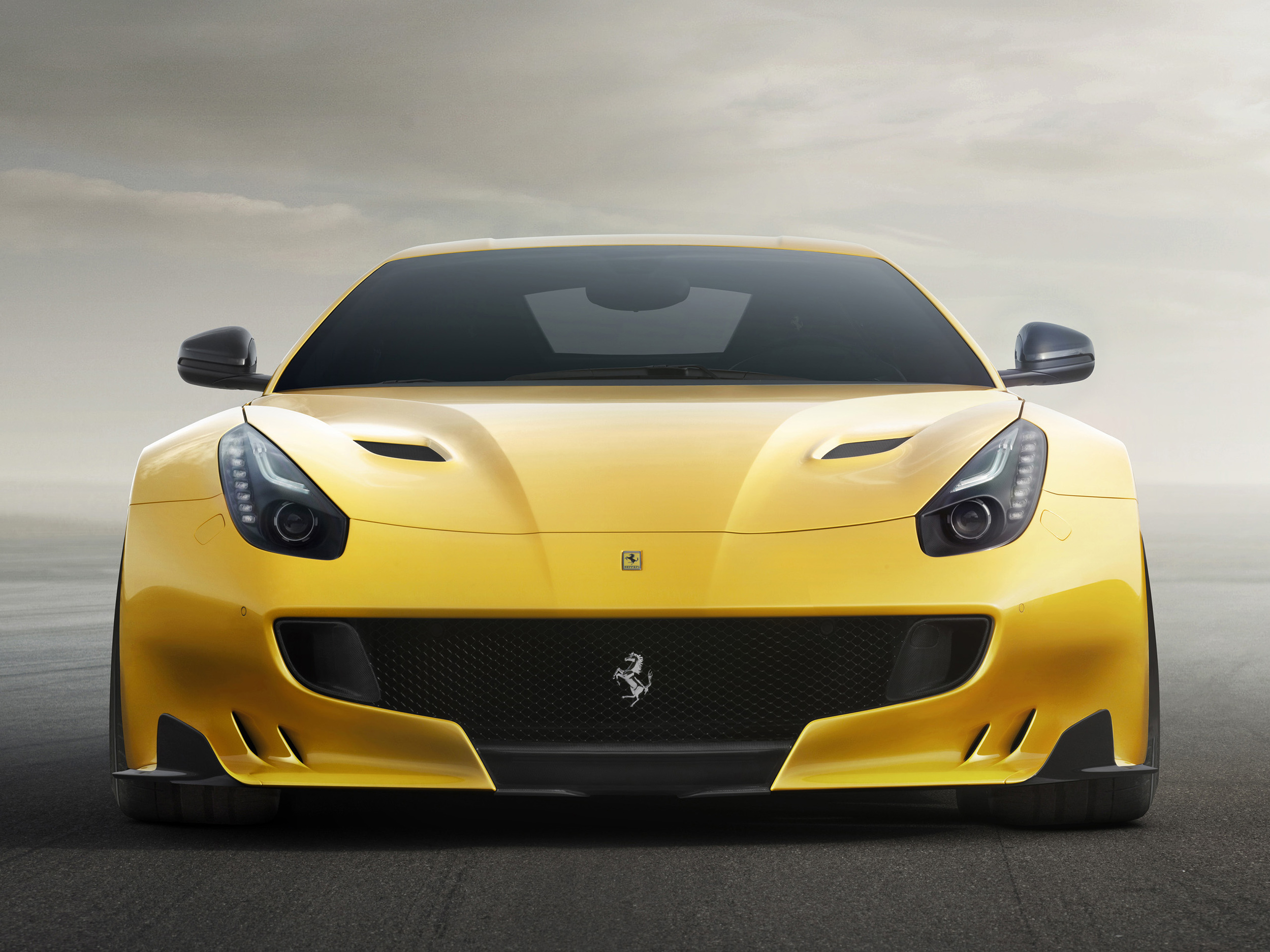
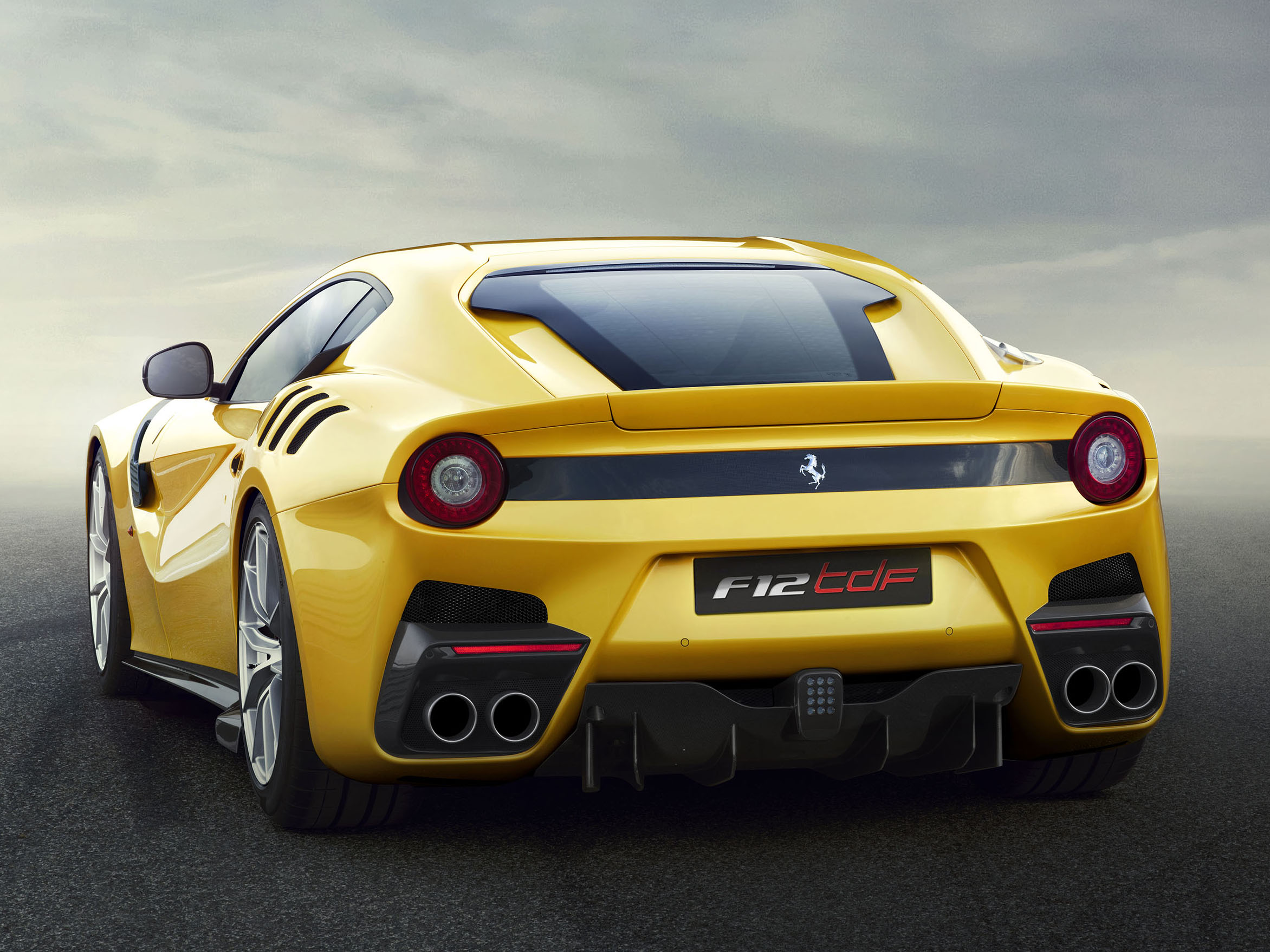


The legendary endurance road race was dominated by Ferrari in the 1950s and '60s, particularly with the 1956 250 GT Berlinetta which won four consecutive editions. A race that rewarded cars that combined maximum performance with the driveability and ease of use, the new F12tdf is described as 'the ultimate expression of the concept of an extreme road car that is equally at home on the track'. Only 799 will be built.
Powered by a 780 cv, naturally-aspirated V12 engine, derived directly from the F12berlinetta's engine. The car's 'exhilarating' dynamic behaviour, specifically its lateral acceleration in corners, is due to an 8 per cent increase in the ratio of the front tyres compared to the rear ones. The car's natural tendency to oversteer as a result of the change in tyre sizes is compensated for by the rear-wheel steering system - known as the Virtual Short Wheelbase, which is integrated with the other vehicle dynamic control systems.
Cornering speeds are also higher thanks to the significant increase in downforce, +87 per cent. A redesign of the bodywork, interior, engine, transmission and running gear, along with the abundant use of carbon-fibre inside and out, has slashed 110 kg off the car's overall weight. All of these factors combine to produce 'record performance figures' of 0-62mph in 2.9 seconds and 0-124mph in 7.9 seconds.
The F12tdf's specification is completed by lightweight alloys with five twinned spokes that are designed to have the narrowest section possible to reduce unsprung weight. Behind the alloys, stopping power comes from new 'Extreme Design' one-piece brake callipers already seen on the LaFerrari. This new-generation system means the car can brake from 62-0mph in just 30.5 metres and from 124-0mph in 121 metres.
Prices have yet to be announced.
Supercars, News, Coupe, Sports Car, Convertible
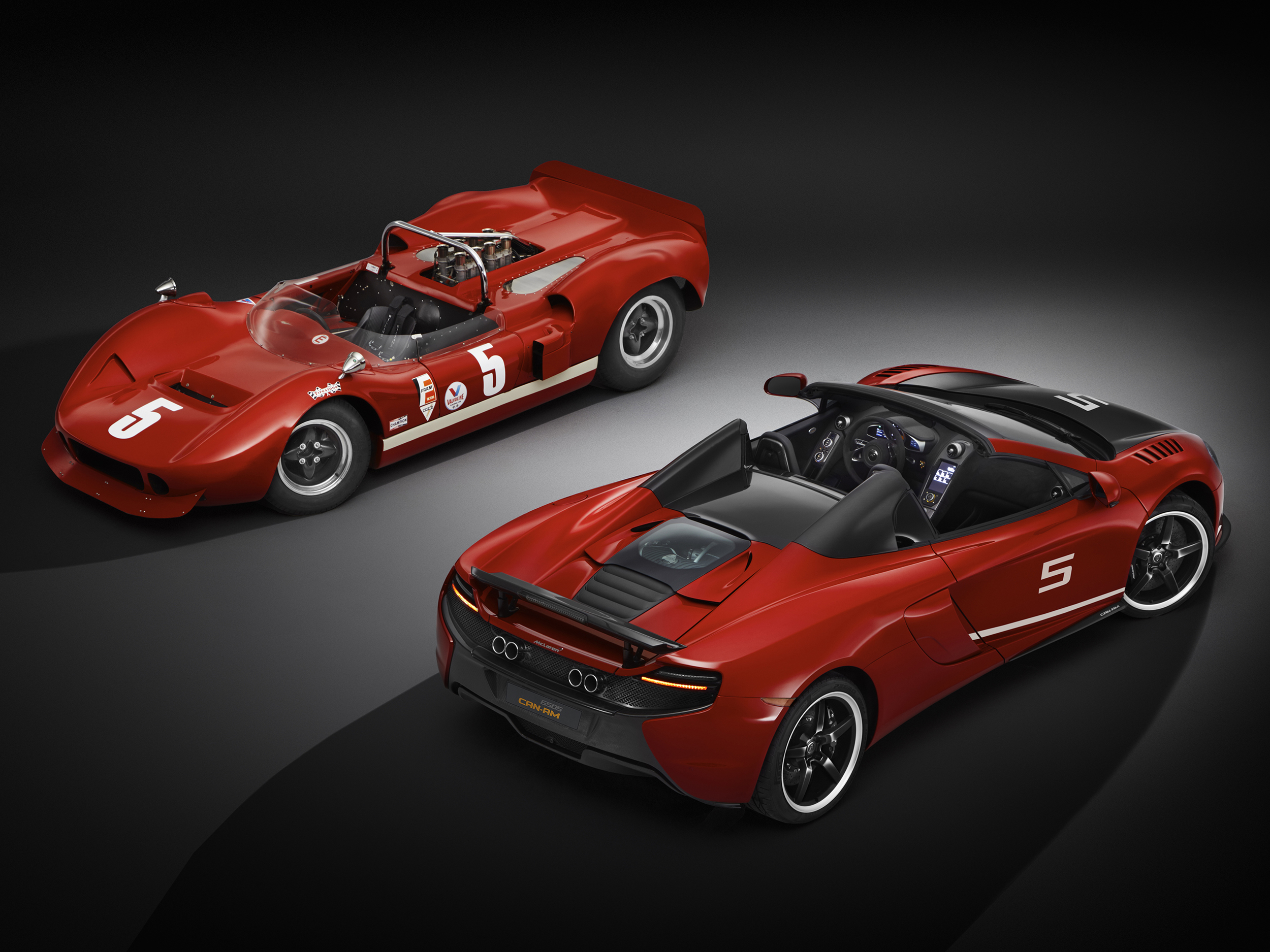
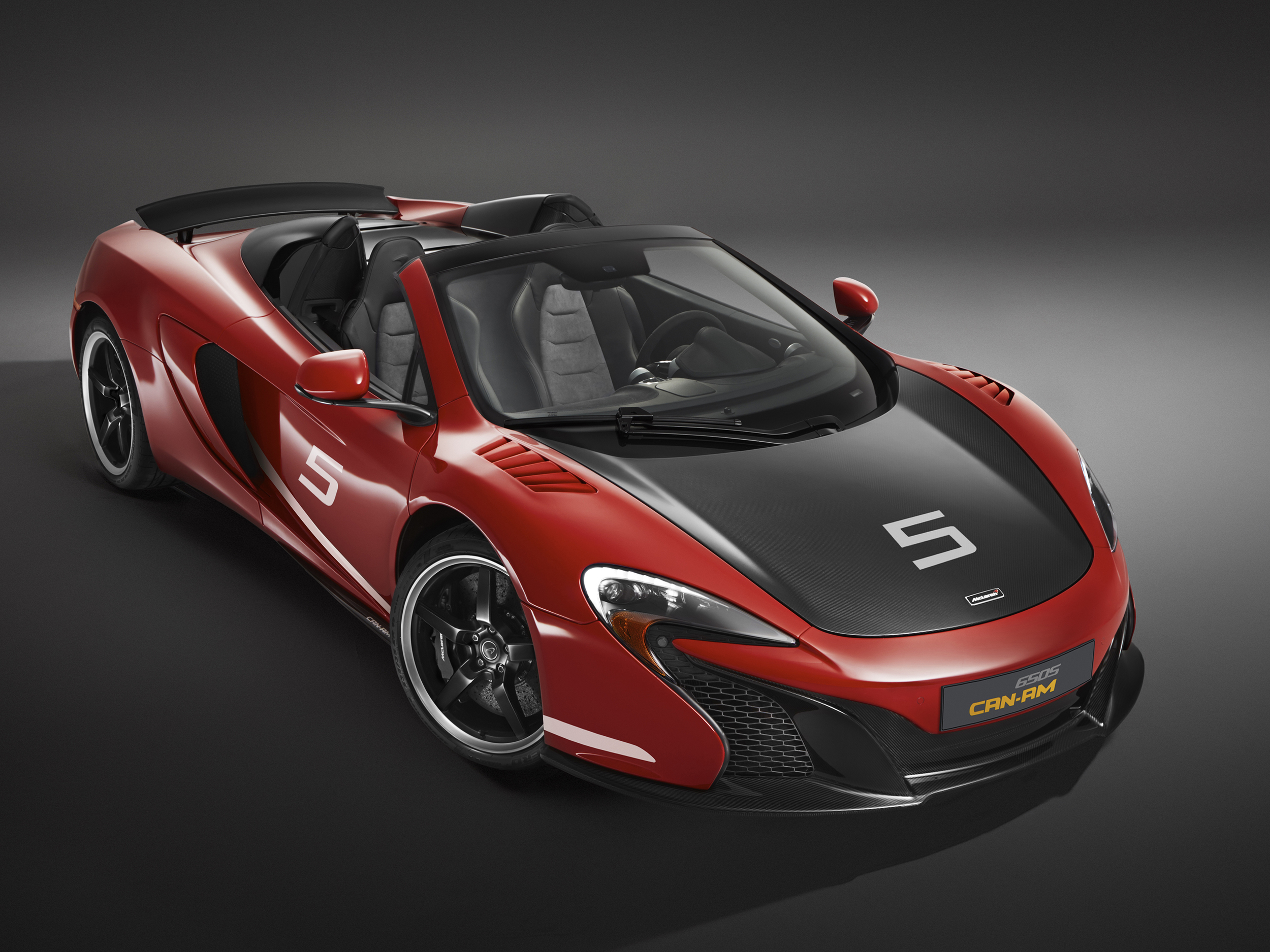
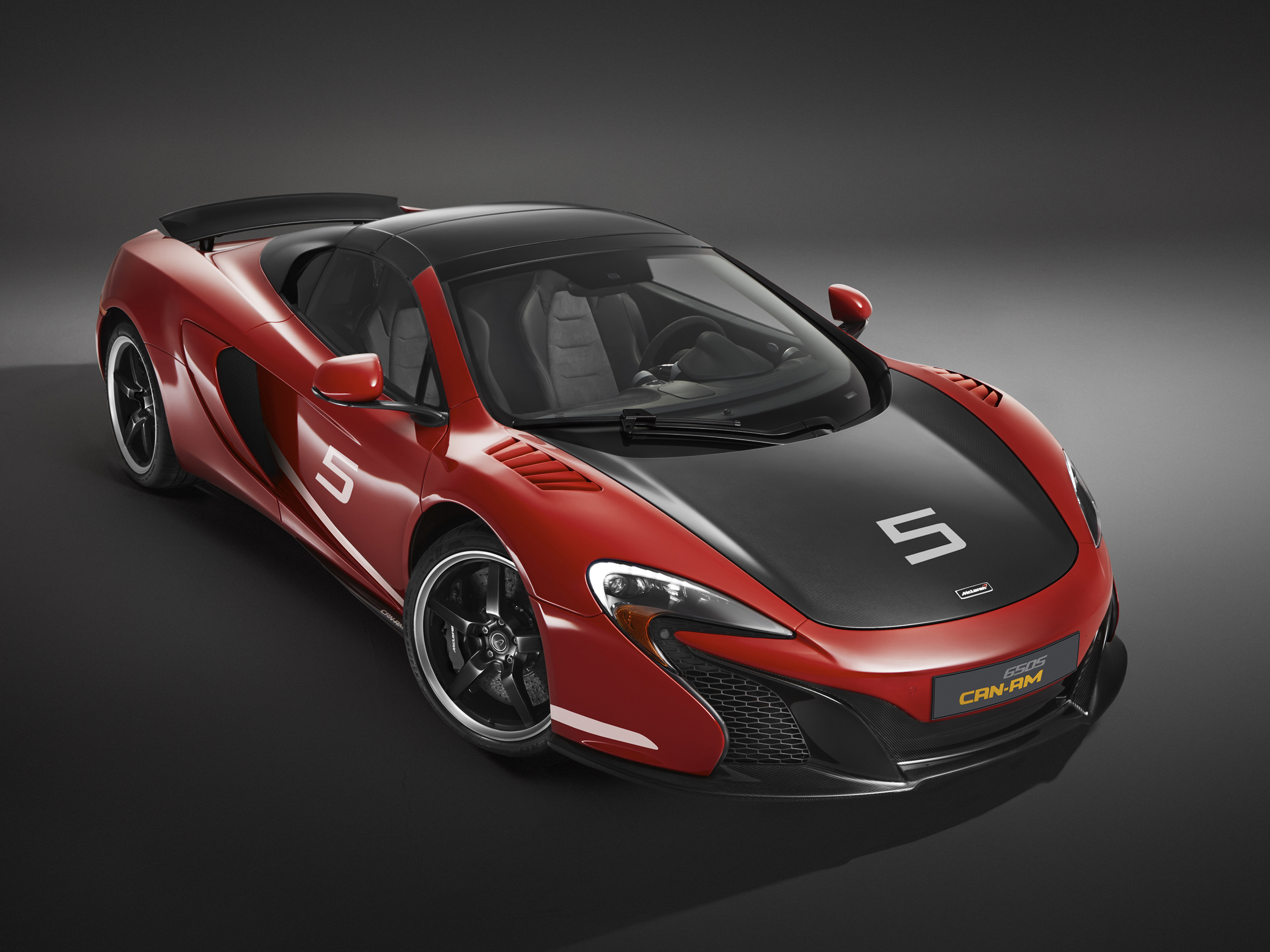
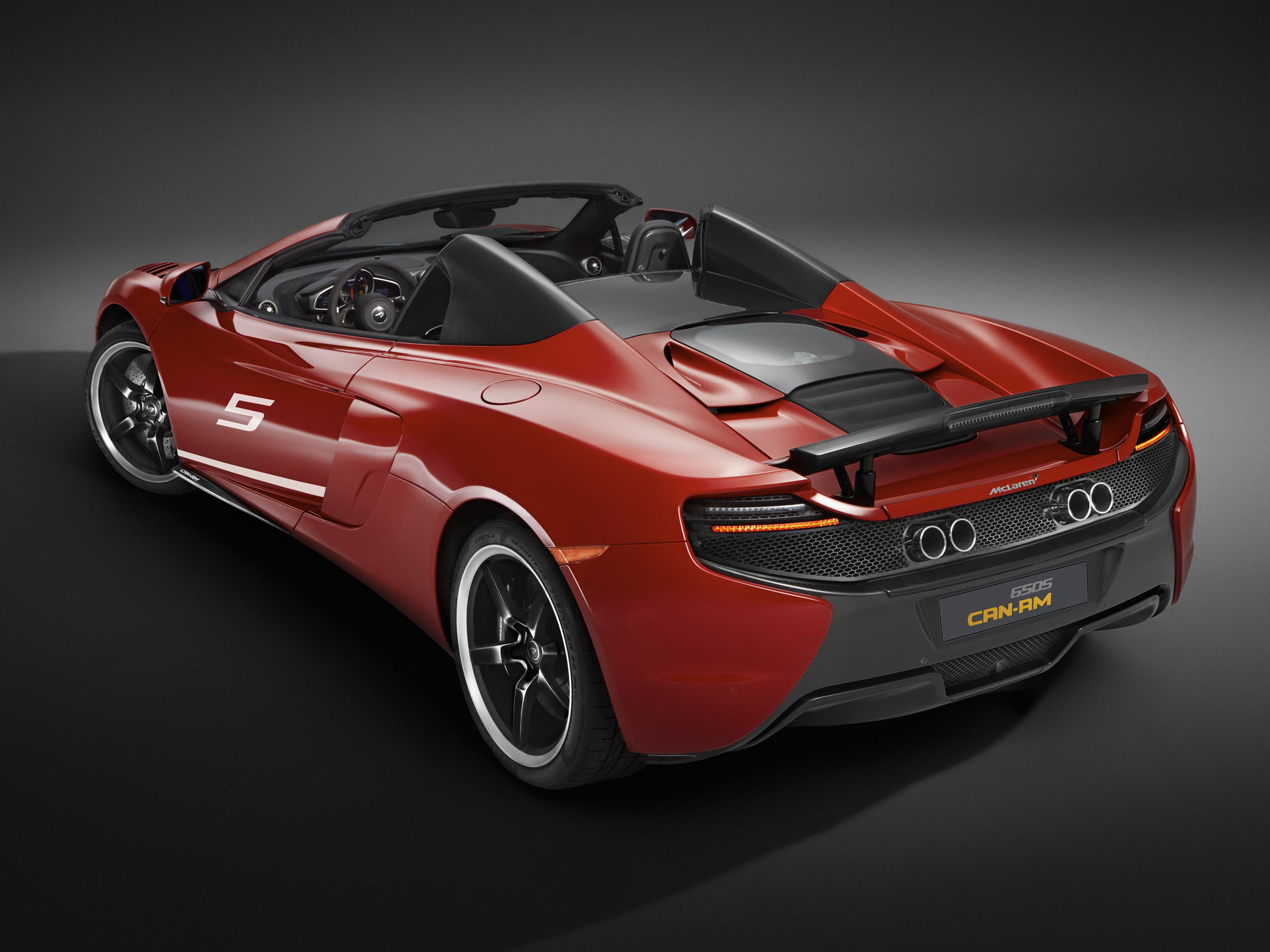
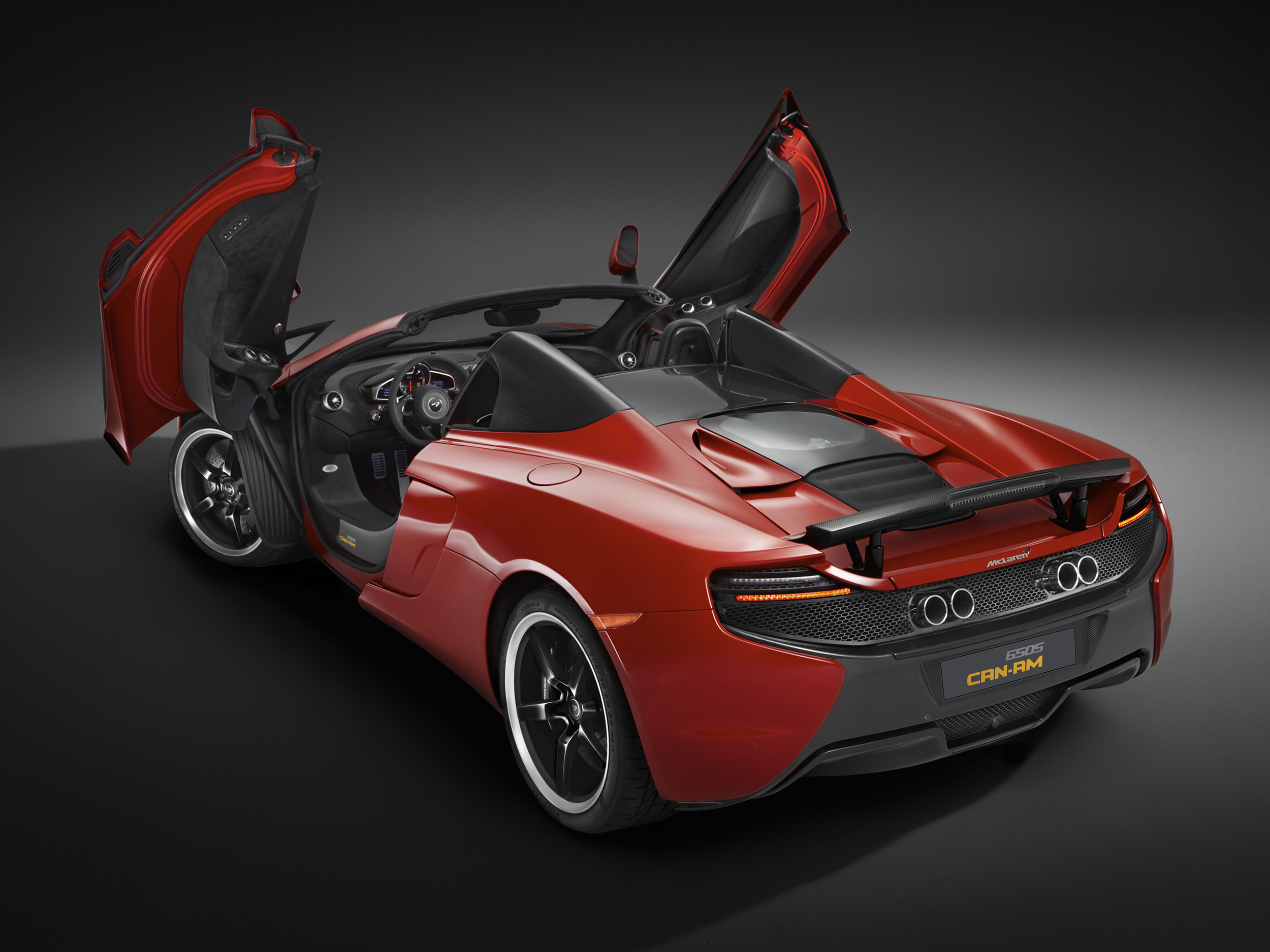
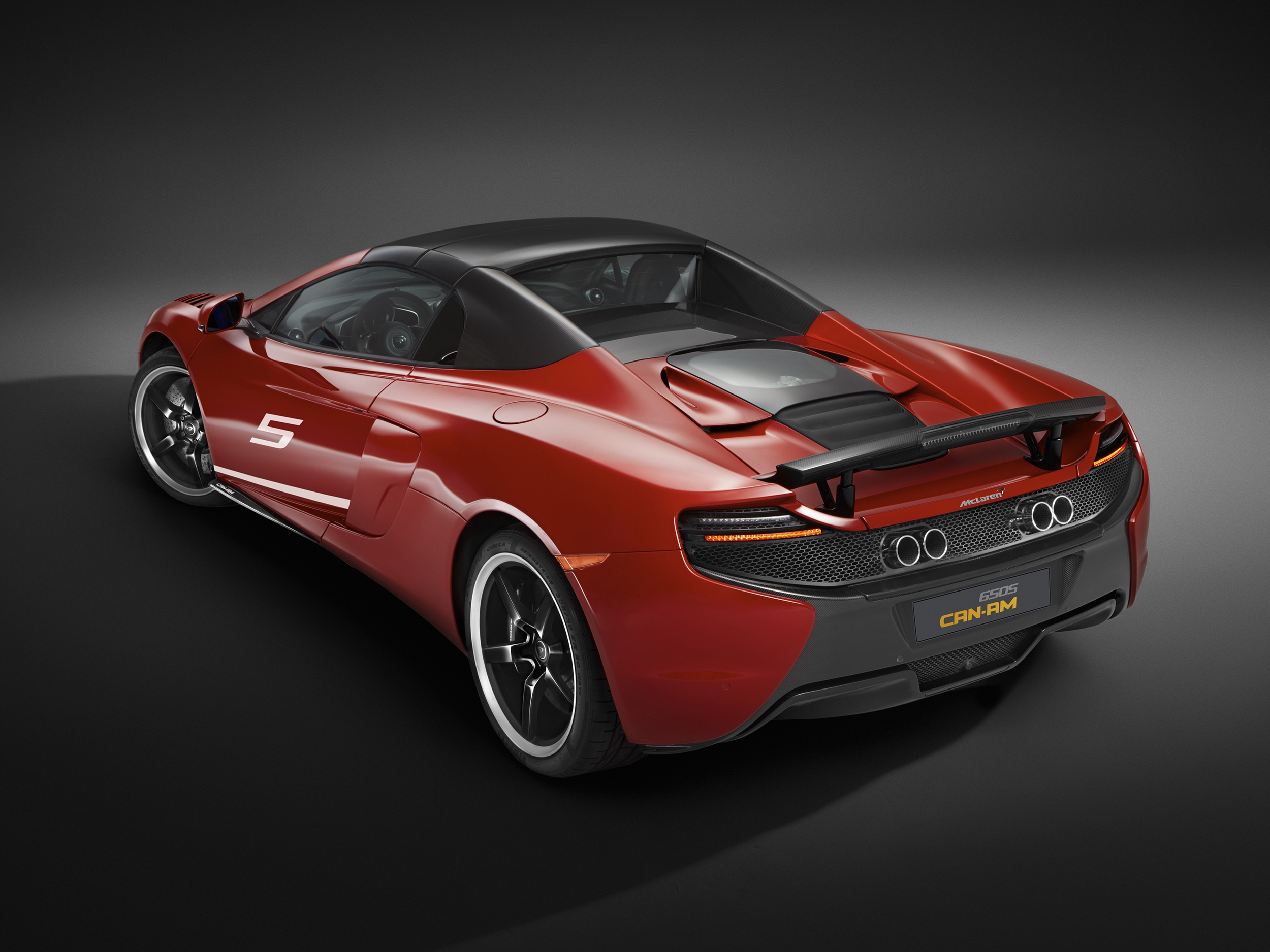
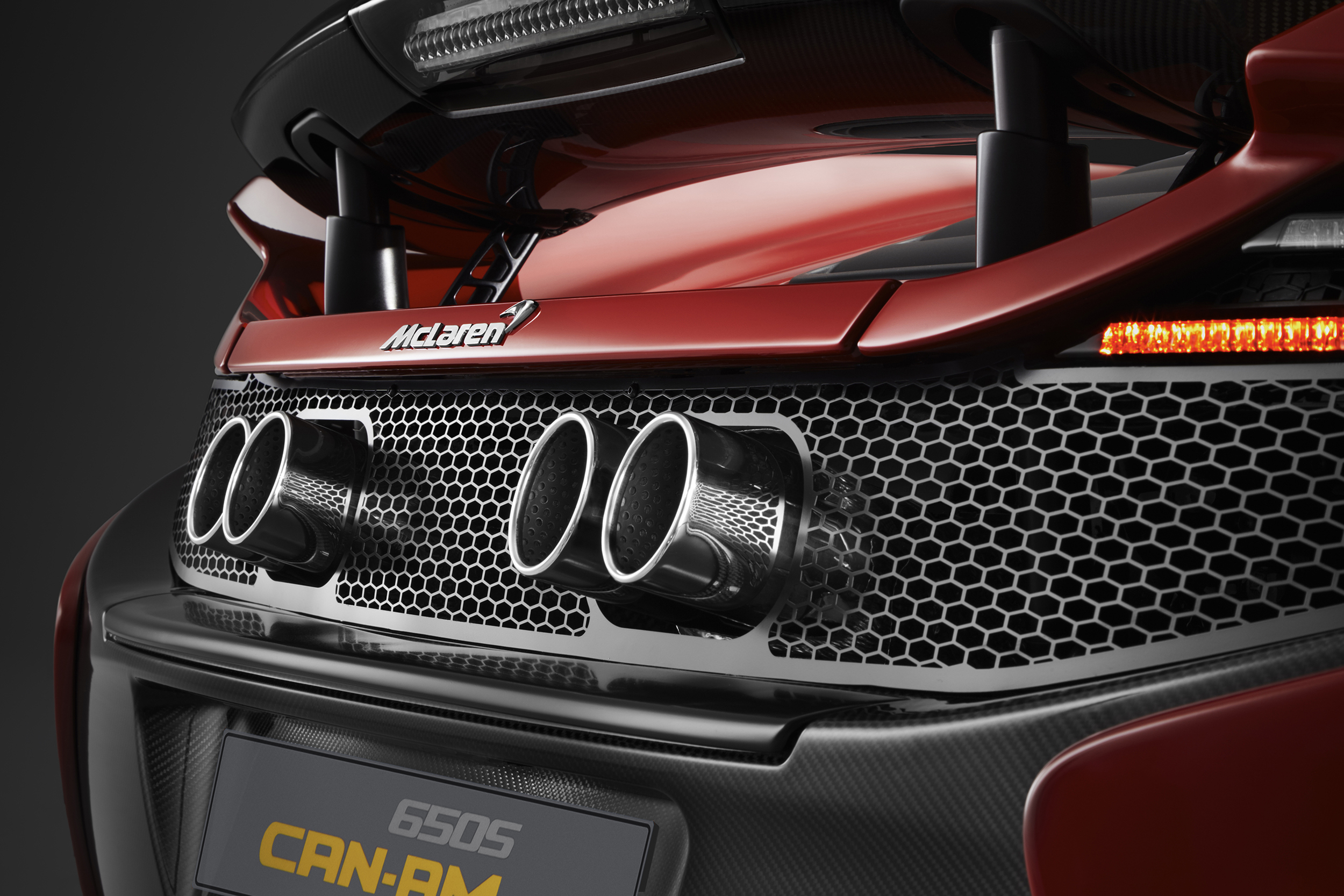
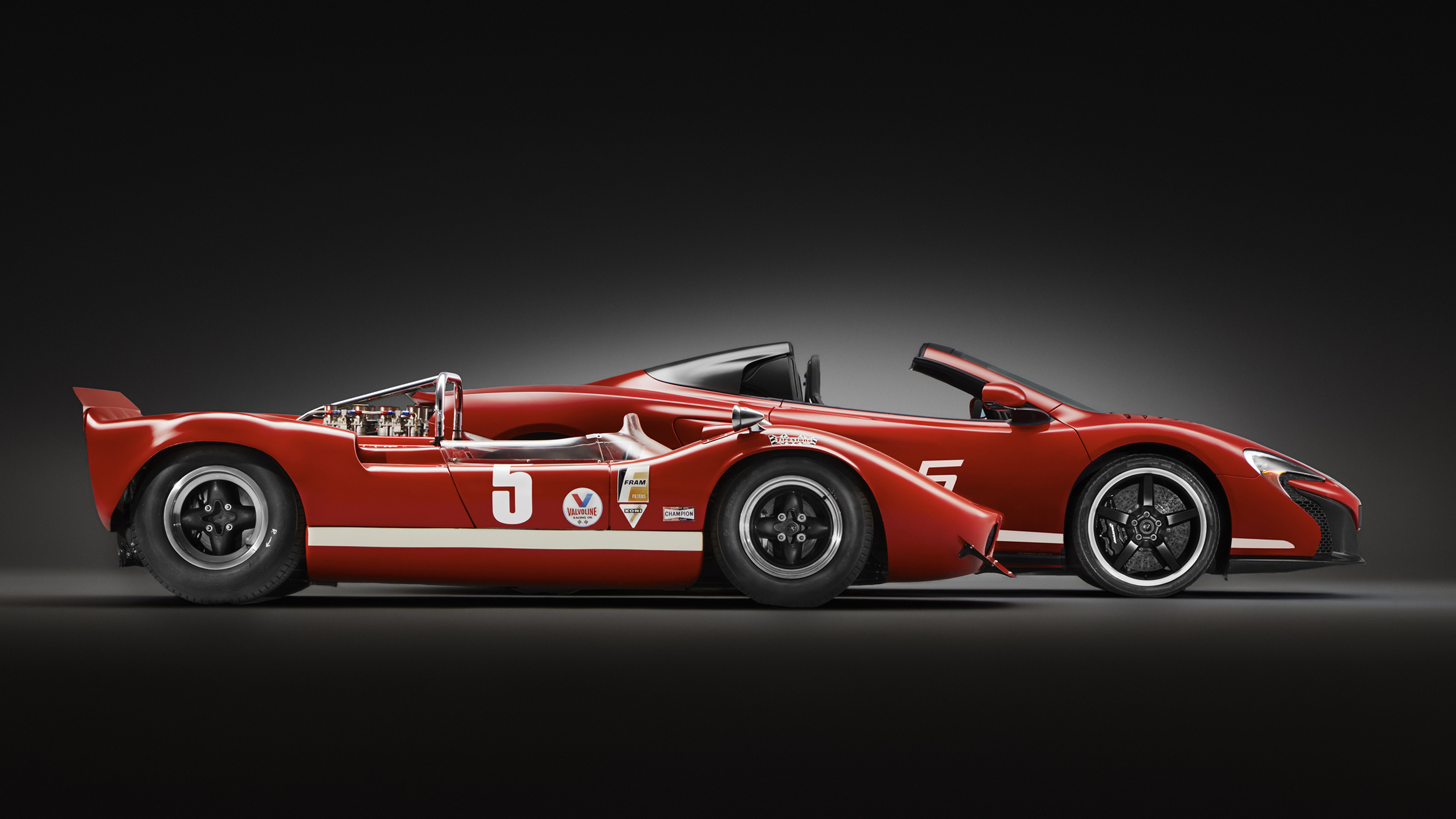
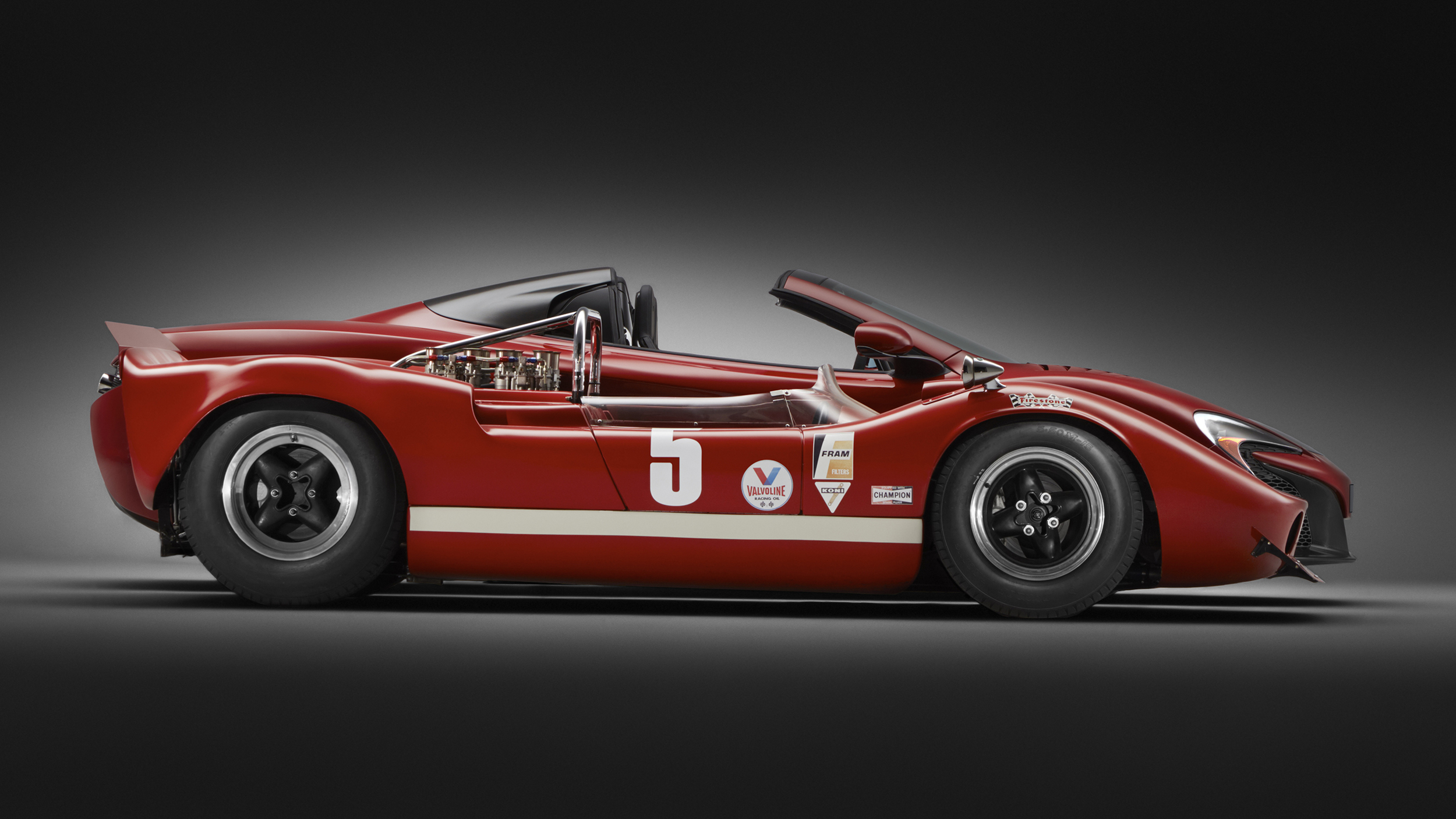

Based on the 650S Spider, the new model was created by the McLaren Special Operations (MSO) department and honours the 50th anniversary of the inaugural 1966 Canadian-American Challenge Cup, or Can-Am, season. Taking its inspiration from the race cars of this age of motorsport, McLaren established itself throughout the 1960s and 70s as a 'world-beating force' in one of the most extreme forms of motorsport, winning five consecutive championships between 1967 and 1971.
The Can-Am was a no-holds-barred battle of power and speed around some of the most iconic circuits in North America and Canada. It attracted the best drivers of the time including Graham Hill, John Surtees, Jackie Stewart and, of course, Bruce McLaren. The championship started in 1966, only a year after Bruce McLaren Motor Racing was established and in the series that followed, the young Kiwi became one of most successful names in the sport.
McLaren says key to its success in the the Can-Am series was the use of the latest technologies and materials. This principle has been carried through to today's 650S Can-Am, where lightweight materials such as aluminium and mallite were used in the construction of yesterday's racers, the modern-day car features extensive carbon fibre not least in the construction of its lightweight MonoCell chassis.
A carbon fibre retractable hard top features for the first time while further carbon fibre is used for the bonnet, Airbrake, front splitter, rear bumper centre, door blades and 650S Can-Am branded sill cover. MSO has also created a unique set of lightweight forged alloy wheels inspired by those of the 1960s racers with a gloss-black finish on each of the five spokes and a diamond cut rim. Held in place by titanium bolts, the wheels are shod with Pirelli P Zero Corsa tyres. Carbon ceramic brakes with black painted callipers are standard equipment.
Further unique features inspired by the iconic Can-Am racers include carbon fibre louvered front wings and a new quad-exit, polished stainless steel exhaust system. The louvres are designed to reduce pressure over the front wheels and increase downforce, while the four circular tailpipes at the rear of the car housed within a new visual carbon fibre rear grille 'echo the aggressive throttle trumpets' of the historic models. They also provide the 650S Can-Am with a 'unique soundtrack'.
Like the 650S Spider, this limited production model is powered by a 3.8-litre twin turbo V8 which producing 650PS (641bhp) and 678Nm (500 lb ft) of torque, for a 0-62 mph time of only three seconds and its top speed is 204 mph.
The 650S Can-Am is available in three colours. The launch colour, Mars Red, is directly inspired by the M1B raced by Bruce McLaren and his teammate Chris Amon in the debut season. The second colour, Papaya Spark, is described as a modern and metallic take on the famous Can-Am racing McLaren Orange. The final option is Onyx Black which is similar to the base colour used by many of the McLaren customer teams in the later seasons. Each is additionally available with a corresponding racing livery to give an even closer visual association with the historic Can-Am series, says McLaren.
Inside, the standard sports seats are upholstered with leather and Alcantara which complement the exterior. Carbon fibre features extensively throughout the cabin while a further bespoke Can-Am touch is the unique dedication plaque on the driver's door.
The new 650S Can-Am can be commissioned for a price of £255,850 with deliveries set to commence in the spring of 2016, 50 years on from the first race at Mont Tremblant, Canada.
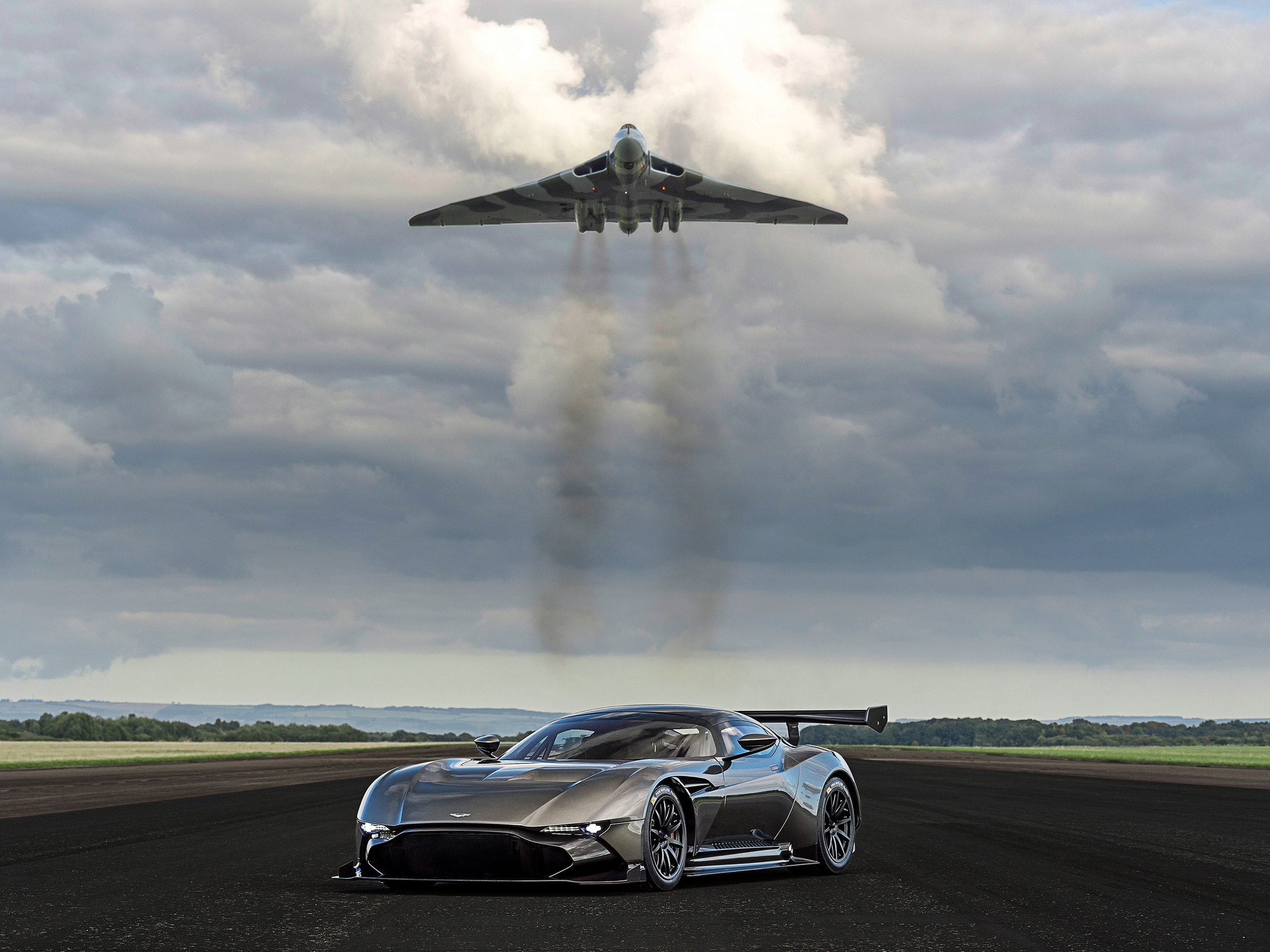
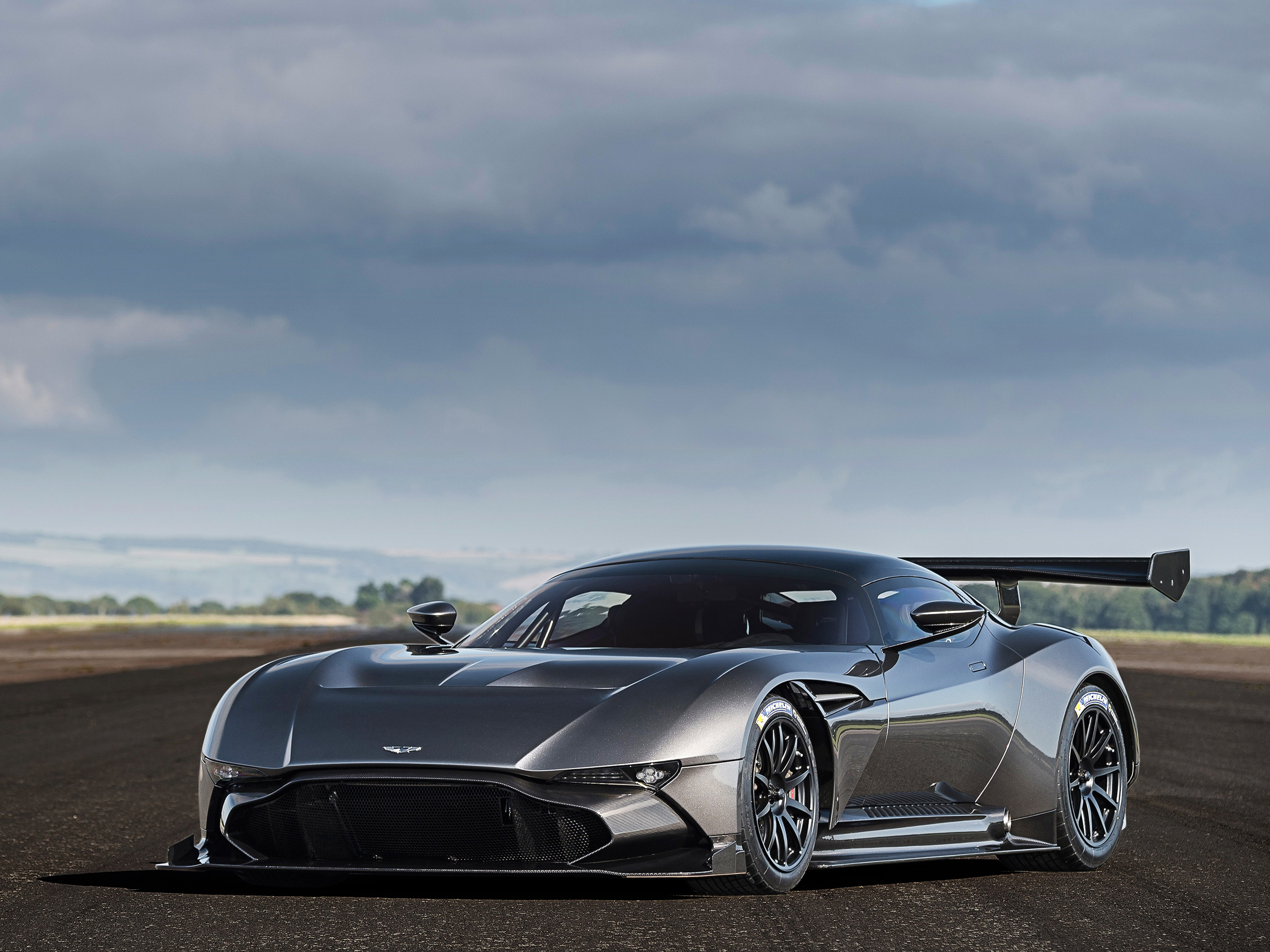
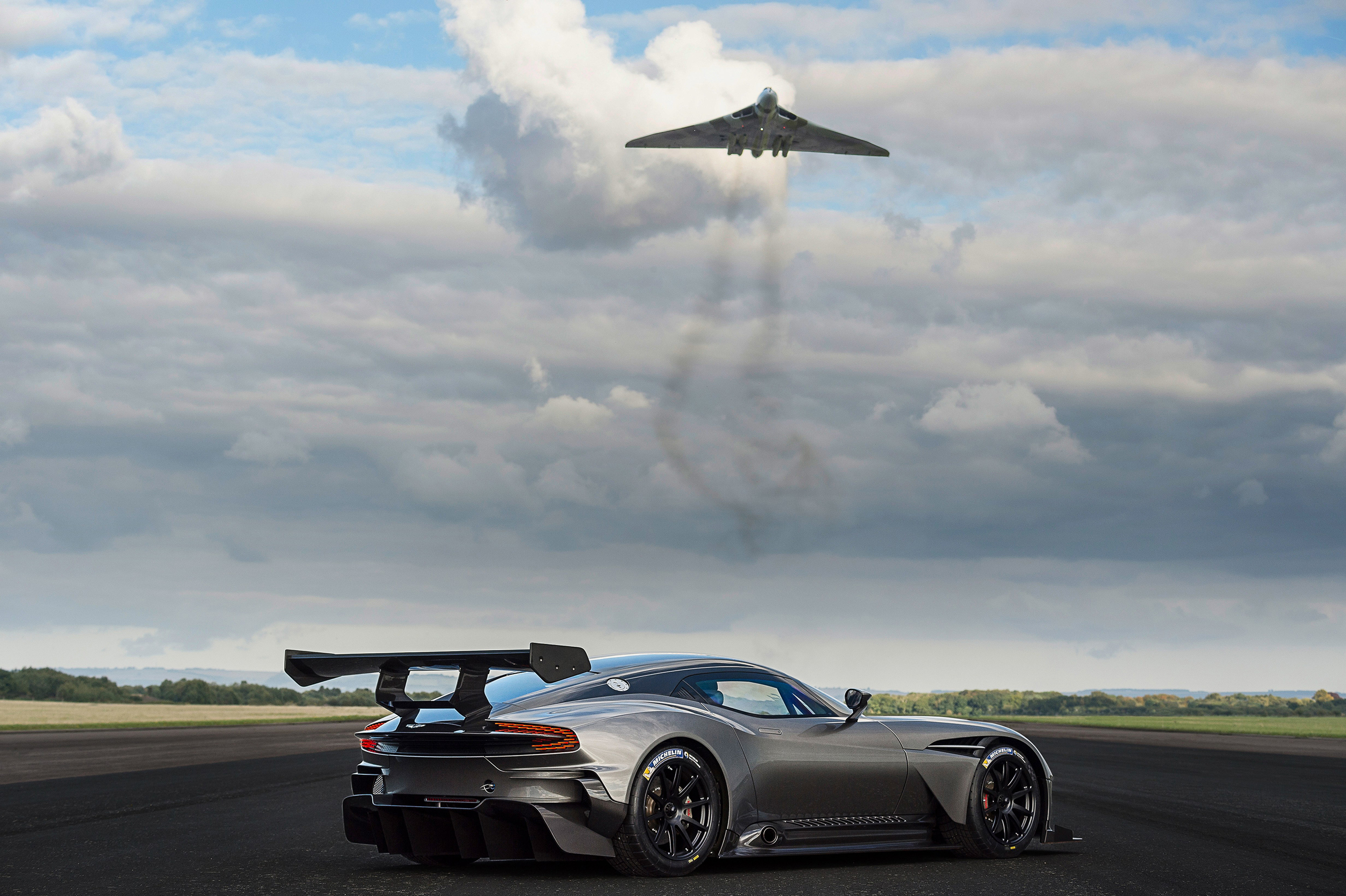
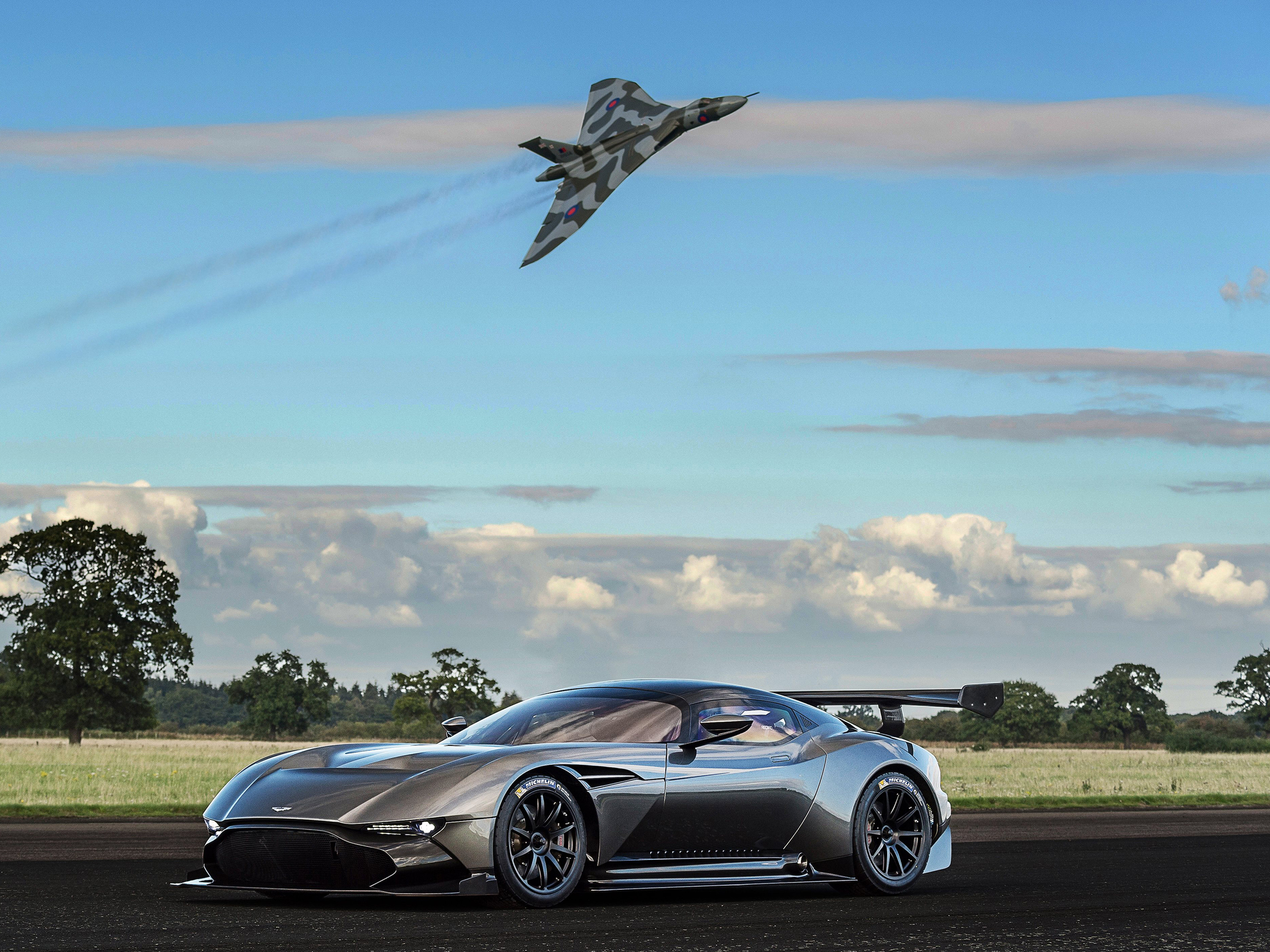
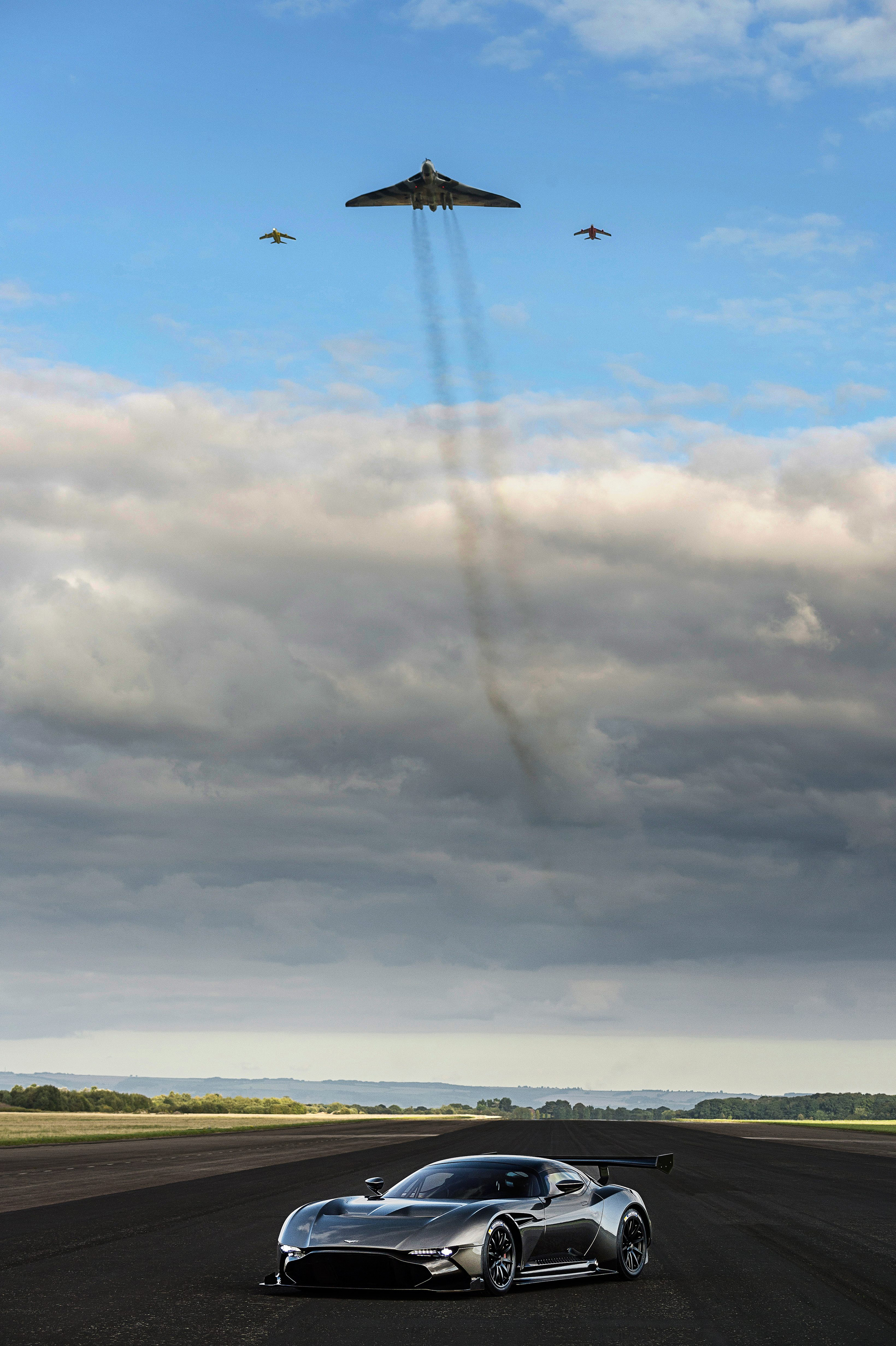

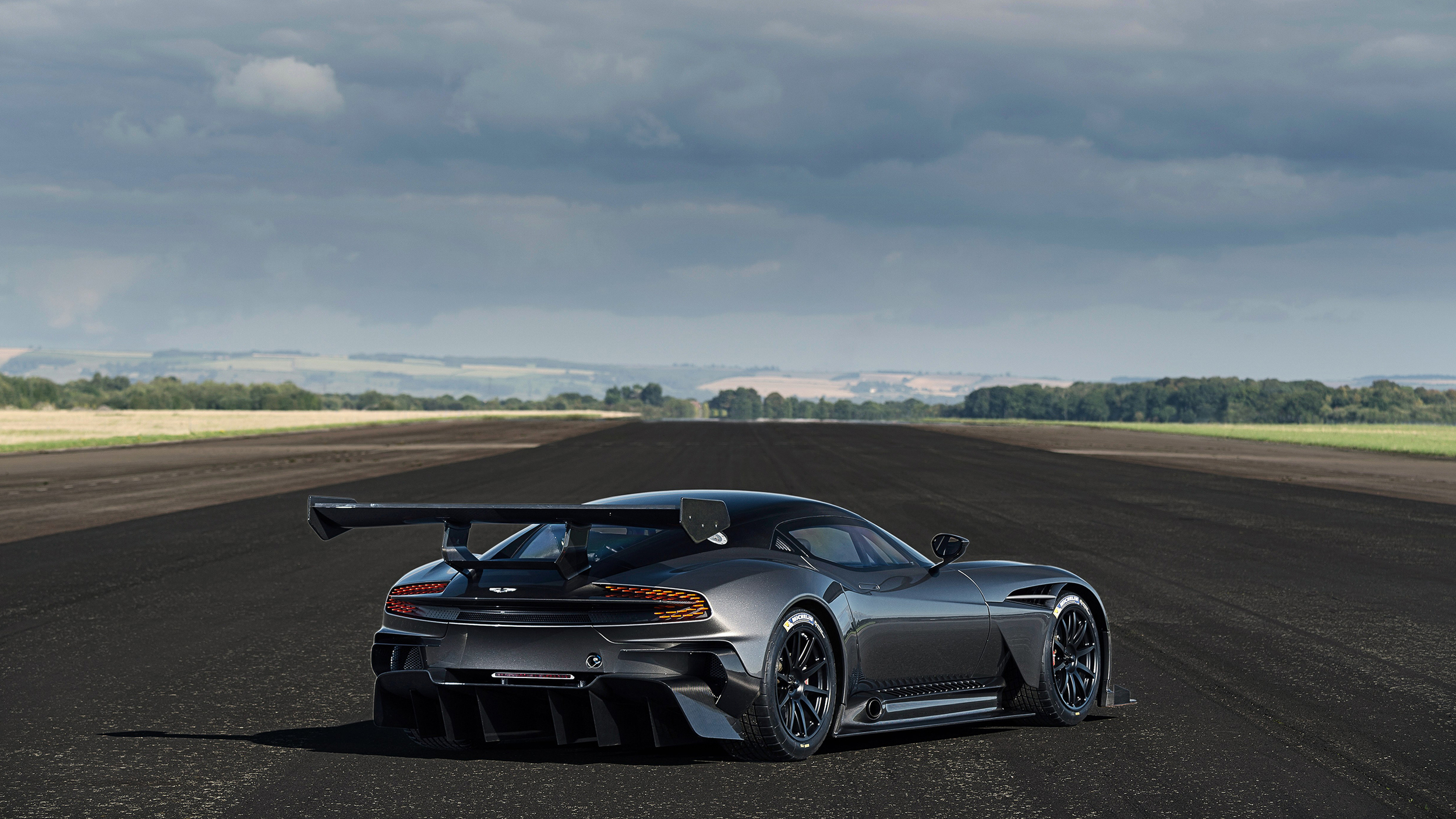
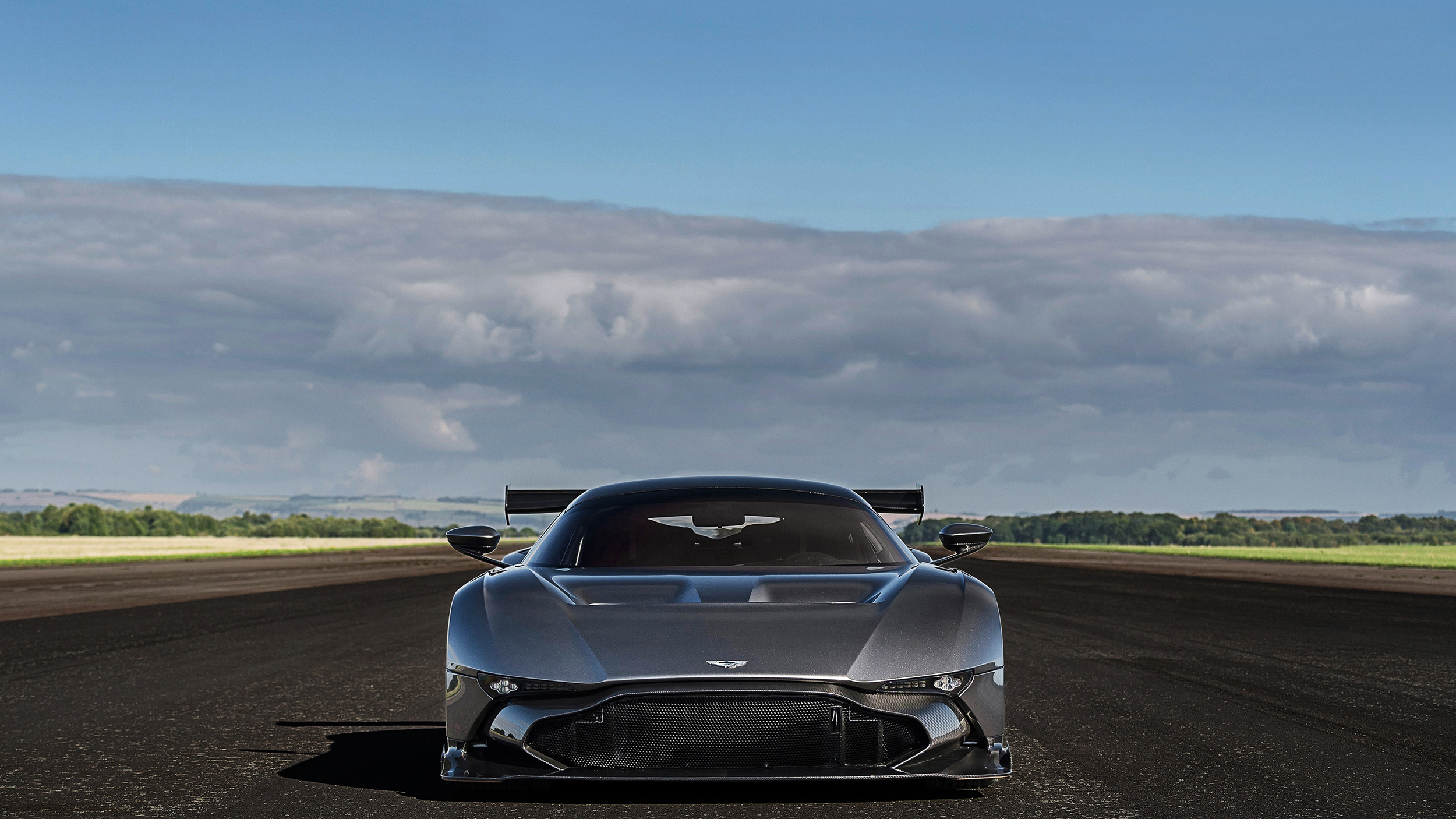

The Avro Vulcan XH558 is currently the only flying example in the world yet is retiring from 'active service' later this month as the age of the plane's airframe and engines mean the support companies which keep the bomber aloft have decided they have to end their support in October.
Aston Martin's Vulcan is the a new track-only supercar. Described as the British luxury car maker's 'most intense and exhilarating creation to date', the supercar is born out of 'extensive motorsport experience' as the 800-plus bhp, all-carbon fibre Aston Martin Vulcan delivers truly extreme performance. Limited to just 24 examples worldwide - owners have the opportunity to precisely tailor their track day experience through a graduating scale of detailed power and dynamic performance adjustments.
CEO Dr Andy Palmer said: "Clearly the Avro Vulcan provided the inspiration for the naming of our most extreme sports car, and I'm delighted that we have been able to unite the 'two Vulcans' and deliver our own tribute to this world-renowned aeronautical phenomenon."
Vulcan XH558 is flown by Martin Withers DFC, Chief Pilot and Operations Director. He said: "Being at the controls for this unique fly-past was a memorable occasion. Personally, it is great to know that the Vulcan name will live on not only in the history books, and at the new educational centre in Yorkshire, but via Aston Martin's incredible new sports car."
Following retirement the plane will form the centrepiece of the educational Vulcan Aviation Academy and Heritage Centre at her home base, Robin Hood Airport near Doncaster.
First deliveries of the track-only Aston Martin Vulcan to customers worldwide will take place before the end of 2015.
Porsche has unveiled a special edition of the 911 Carrera GTS, marking the fifth Rennsport Reunion at Mazda Raceway Laguna Seca (USA).
Lotus displayed its new Evora 400 in London's Trafalgar Square at an event celebrating Malaysian culture in the UK.